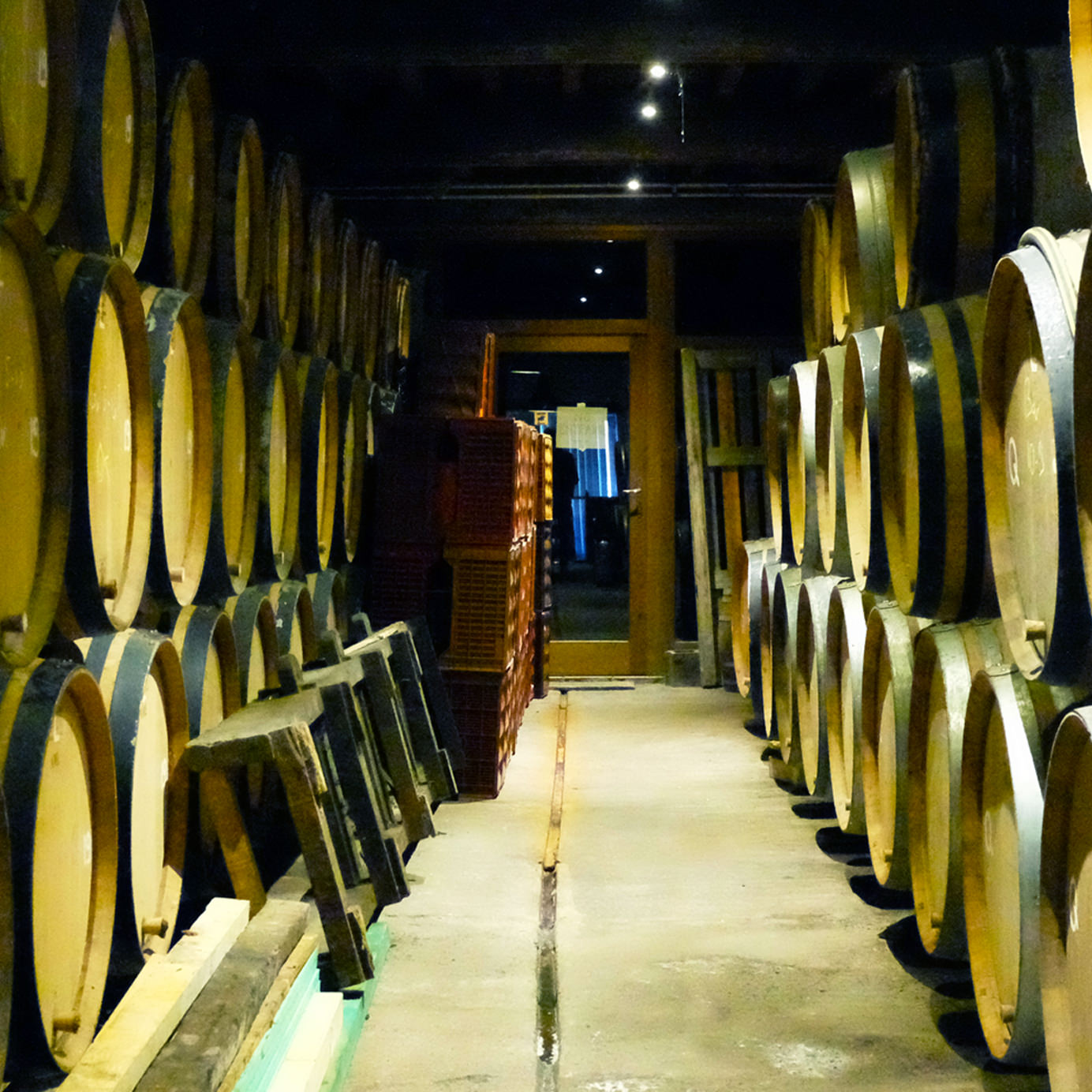

Everything You Need to Plan Your Belgium Beercation
words: Cat Wolinski
photography: Cat Wolinski and Patrick Phillips
“In Italy, being a gondolier is a family tradition. In Belgium it’s brewing beer.”
Such is the introduction on the website for Belgian Family Brewers, a non-profit association representing small Belgian beer makers.
If you love beer, you already know you’re destined for a trip to Belgium. The country’s beautifully distinct brews, scented with yeast-driven spice and aromas of clove, pepper, and banana, are a huge source of inspiration for contemporary American craft brewing. Wherever your Belgium travels take you, there will be delicious beer to drink. Flanked by France and the Netherlands, the less-than-12,000-square-mile nation has more than 200 breweries, many of which date back centuries .
At last count , Belgium was home to 224 breweries, up from 160 in 2013. One hundred years ago there were close to 3,500 .
Driven by families, farmers, and Flemish monks during the Middle Ages , Belgium’s brewing culture is rooted in tradition yet still exciting. Here, we highlight a handful of our favorite places to eat, drink, and be Belge in Antwerp, Brussels, and Poperinge. From modern bars like Moeder Lambic to preserved public houses dating to the 1700s, each estaminet (as bars in Brussels are called ) you visit is well worth your time.
Look out for language swaps between French ( brasserie, bière, fromage ) and Dutch ( brouwerij, bier, kaas ), and a penchant for puppets, statues, and dolls.
In this ancient city, religious customs and beer customs intertwine.
Fall travelers might want to kick off at the Modeste Bier Festival held at Brouwerij De Koninck each year. Currently scheduled for Oct. 6-7, 2018, the festival highlights only small, independently owned Belgian brewers. After De Koninck, you won’t have to go far to hit Antwerp’s best beer spots.
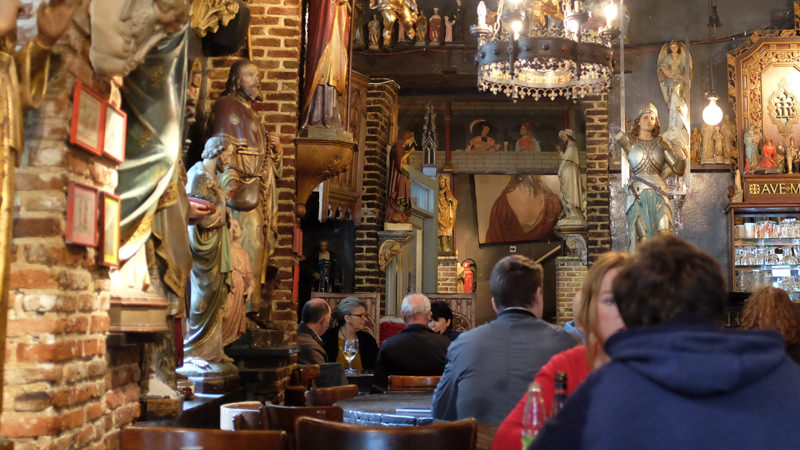
Kathedraal Cafe (Cathedral Cafe)
A bar and restaurant that takes its name — and decor inspiration — from the towering Cathedral of Our Lady, a Roman Catholic church constructed between 1352 and 1521. Along with its astounding floor-to-high-ceiling collection of religious statues, Kathedraal offers a traditional menu of strong Belgian ales and hearty plates spanning spare ribs to spaghetti Bolognese (a Belgian staple, to our delight).
Blauwmoezelstraat 11, 2000 Antwerpen
Abby No. 8 Antwerp (Belgian Beers & Brews)
Steps away from the Kathedraal is this charming, curated shop with beer selections, including standbys like Duvel (but this time, it’s brewed a few miles away!) and rare finds like one-offs from Fantome. Don’t be shy about asking the proprietor for advice; he speaks English and can help you find just what you need.
Handschoenmarkt 8, 2000 Antwerpen
Do not leave Antwerp without going to Kulminator. You will not experience magic like this anywhere else. In this organized mess, an elderly couple has amassed a lifetime of rare, old, and discontinued Belgian beers. While Mister crunches numbers behind a towering pile of papers (using a magnifying glass!), Missus takes your order on a coaster covered in scribbles, and yet, somehow, they’ll still descend into their dusty cellar to procure that 1987 lambic you picked out from a brewery that no longer exists. There aren’t many places on this earth you can drink a beer as old, or older, than you.
Vleminckveld 32, 2000 Antwerpen
The bustling capital is as gritty as it is magical.
Arguably the most adored brewery in the world, and at least the producer of many of the most highly regarded lambic, gueuze, faro, and kriek anywhere, Brasserie Cantillon is a pilgrimage point for beer geeks the world over. The family-owned business is literally a museum to gueuze, where the Van Roy-Cantillon family still uses the same equipment their ancestors have been using since 1900. Take a self-guided tour within its wooden walls, copper equipment (and famous coolship), and rows of sleeping, insect-encrusted barrels.
Rue Gheude 56, 1070 Anderlecht
Moeder Lambic
Yes, there are many places that serve great beer in Brussels, but none are quite like Moeder Lambic. Opened in 2006, Moeder Lambic became a fast favorite among those who are serious about their beer — which, in Belgium, is a lot of people — but still like to party, Brussels-beer-bar-style. That means great local beers, proper glassware, and cheese and meat plates. Rather than pretzels or peanuts, the complimentary bar snacks are little bowls of malted barley. Très Belgique.
Original location: Rue de Savoie (Savoiestraat) 68, 1060 Saint-Gilles; Second location: Place Fontainas 8, 1000 Bruxelles
Fancy yourself a slow-cooked bowl of ramen, crispy gyoza, and streetside views of the historic Brussels city center? You can do that and have your Belgian beer, too, at Umamido. The Japanese ramen shop has multiple locations in Brussels and Antwerp, each with a menu that’s intentionally short and sweet. Shoyu ramen, miso tonkotsu ramen, and even a vegetarian option source products from Japan as well as local Belgian farms.
Rue Henri Maus 33-47
Brasserie de la Senne
Yvan De Baets, brewmaster, is famous among beer industry followers for his attention to detail and delicately expressed beers (Zinnebir, a golden blonde ale , is a popular pick; we’re also partial to the even lighter blonde, Taras Boubla).
This brewery is definitely off the beaten path — in fact, you might get some funny looks when you arrive — but don’t let that dissuade you. Servers are sweet, the beers are exciting, and you may even get a taste of something that’s not in regular rotation — something as rare, perhaps, as your presence there.
Chaussée de Gand 565, 1080 Molenbeek-Saint-Jean
Bier Circus!
This wacky yet classy circus-themed bar and restaurant combines a silly theme with a serious beer list. Like peoples’ affinity for clowns, the beers in the cellar here are rare, old, and alluring (10-year-old Orval? Yes, please). Adding to the impressive selection of Trappist, farmhouse, and myriad other Belgian ales (which will each be poured exquisitely in their appropriately branded glassware, mind you) is the food menu. Go Bolognese or go home.
Rue de l’Enseignement 57, 1000 Bruxelles
Poechenellekelder (The Puppet Cellar)
A popular spot for tourists due to its proximity to Manneken Pis (a famous statue of a peeing boy and a Belgian icon that people crowd to photograph like it’s the Mona Lisa), this quirky destination is worth a visit. Traditional, authentic, and definitely Belgian (they love stuffing bars with weird human figures and kitschy paraphernalia!), you won’t mind the din in this friendly estaminet. The sense of humor pairs nicely with a nightcap (or midday booster), and a selection of Belgian cheeses and meats (and did we mention Bolognese?) will tide you over until your next Belgian waffle.
Rue du Chêne 5, 1000 Bruxelles
BrewDog Brussels
Looking for a place to plug in? BrewDog has a huge, sleek space steps from Bruxelles Central train station (Gare de Bruxelles-Central, near the Grand Place). Here, you’re as likely to see stylish locals sunken into loveseats on their laptops as you are the after-work crowd pounding a few pints on the deck looking out over the city. With 40 taps featuring BrewDog beers along with local favorites, and bar snacks like, yes, more cheese, it’s an easy place to unwind and figure out your next move.
Putterie 20, 1000 Bruxelles
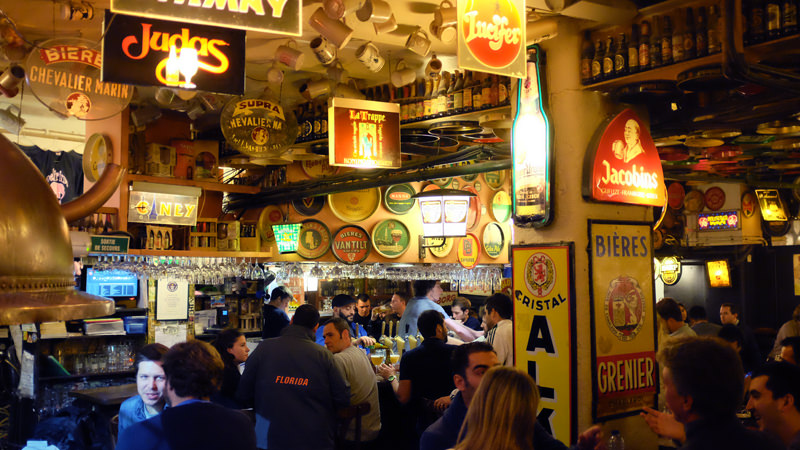
Delirium Cafe
Best enjoyed in a delirious state, this hot spot should definitely be on your bucket list, but doesn’t necessitate a long stay — unless you’re with a rowdy crew. While not necessarily psychosis-inducing, the bustling mix of Belgian and foreign crowds fighting their way to the bar can be dizzying. But the sheer experience of earning that next pint, your body wedged within the collage of friends, breweriana, and Delirium’s signature pink elephants — not to mention thousands of beers (at last count: 3,162 ) — makes it interesting. There are several Delirium Village locations, but this one’s spot on a cramped cobblestone passage makes it extra inviting.
Impasse de la Fidélité 4, 1000 Bruxelles
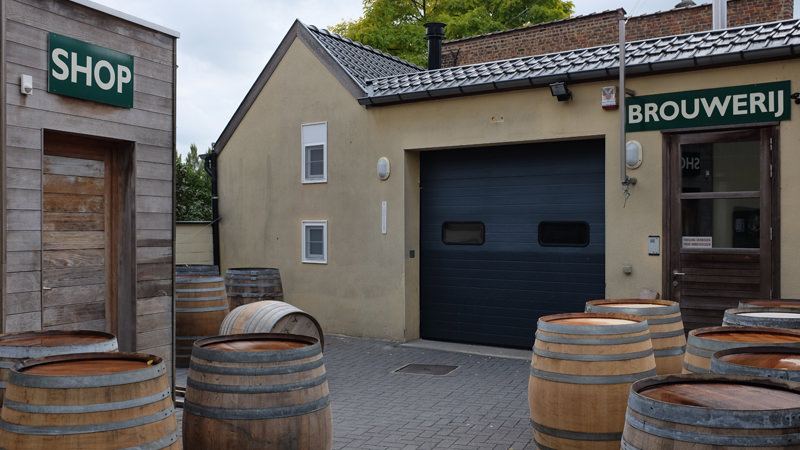
3 Fonteinen
Adventurous travelers should consider a day trip to Beersel, where beer geek favorite, 3 Fonteinen (affectionately called “drie”) sits in a quiet suburb and makes some of the best gueuze in the world. Recently rebuilt, the brewery offers a tasting room, shop, and tours every day except Wednesday. Reserve in advance.
For the real experience, though, go to the restaurant . Preciously unpretentious (on a typical afternoon, your dining companions will be well into their 70s, and we dare you to keep up with their drinking), you’ll pair a glistening pork chop or plump salmon steak with the waiter’s recommended gueuze, and you’ll never forget it.
Herman Teirlinckplein 3, 1650 Beersel
Poperinge is the capital of hops in Belgium.
It’s home to the country’s hop fields, annual hop parade, and Saint Sixtus Abbey, maker of the world-renowned Westvleteren beers. In Watou, a village on the border of the Flemish-French countryside, head to Saint Bernardus, whose monk-adorned brews you’ve likely seen if you’ve set foot in any Belgian-themed bar stateside. From there, a stroll into town is worth the magnificent views, cow sightings, stunning sunsets, and silence like you’ve never felt (save for the occasional potato truck). Bars in the town square seem stuck in time, but you’ll be fed with the friendly, albeit standoffish hospitality of an old Dutch gasthaus .
Hopmuseum Poperinge
An entire museum devoted to hops! If you’re one to geek out over these flavor flowers, visit this historical building where Belgian hops were born. Audio tours explore hops’ history in the region and how Poperinge’s fertile soil and hop-loving monks shaped the city and Belgian culture as a whole. Look up — you’ll meet the Hop Devil himself, in wicker form, devilish male organs included. Downstairs, you can see and sniff hops in dizzying varieties.
Gasthuisstraat 71, B-8970 Poperinge
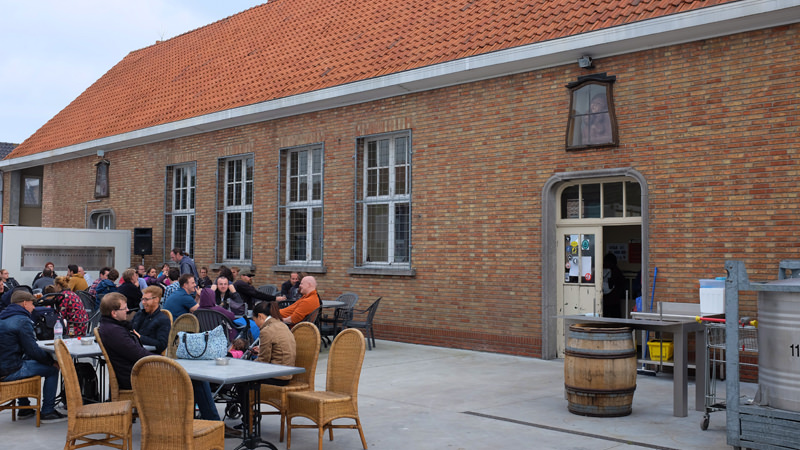
Struise Brouwers
The juxtaposition of this badass brewery’s skull-adorned brand and schoolhouse locale is unique, to say the least. So, too, are its brutal brews, which span the famous Pannepot, a strong ale sought for its many vintages, plus stouts so strong they’re technically illegal in the U.S. De Struise beers — and its brewery, once voted the best in the world — aren’t easy to find, so head here for the novelty and stay for the quirky personality of its founder, Carlo Grootaert, who might be the one tugging the taps.
Kasteelstraat 50, 8640, Oostvleteren
Abbey de St. Sixtus / In de Vrede Cafe
Beer pilgrims flock here to get their hands on Westvleteren 12, considered by many critics the best beer in the world. Don’t expect to bring any home with you, though, unless you’ve made an appointment well in advance (find the phone number and a detailed explanation here ) and have a car prepped ahead of time. Brewery tours aren’t an option, either. Still, you can wrap your lips around the good stuff in de vrede (“in peace”) in the public cafe, located in the abbey’s modern courtyard situated beside a stunning cornfield stretching off to the horizon.
Donkerstraat 13, 8640 Vleteren
St. Bernardus
Westvleteren seekers might consider skipping St. Sixtus for a more immersive experience at St. Bernardus, the nearby, non-Trappist brewery that brewed Westvleteren for St. Sixtus for 30 years until the contract ended, for Trappist reasons, in 1992. (And basically still makes the same beer.) It’s not a Trappist brewery, so any monks you see on beers here are pure marketing.
Legendary in its own right, St. Bernardus is open to the public with tours and tastings. It also houses B&B Brouwershuis, a beautifully romantic and welcoming bed and breakfast (“brewers house”) in a remote landscape that is difficult to describe. Creepy dolls in the room? You bet.
Trappistenweg 23, 8978, Watou
Published: July 23, 2018
- Everything You Need to Plan Your Belgium Beercation | VinePair
- https://vinepair.com/articles/best-belgium-beer-trip-travel-guide/
- wbs_cat Beer, wbs_type Belgian Ale, wbs_type Gueuze, wbs_type Lambic, wbs_brand 3 Fonteinen, wbs_brand Cantillon, wbs_brand De La Senne, wbs_brand Delirium, wbs_brand St. Bernardus, wbs_brand Struise Brouwers, beer, beer travel, belgium, Travel
- The Ace Hotel’s Caitlin Laman Loves Sherry and Her Unicycle | VinePair
- https://vinepair.com/articles/caitlin-laman-ace-hotel-chicago/
- Celine Bossart
- wbs_cat Wine, wbs_type Sherry, bartender, chicago

Everything You Need to Know About Belgian Beer & Where to Drink in Belgium
Grain, hops, yeast, and water. The ingredients to brew beer are pretty simple. Yet there are a seemingly endless number of ways that the end product –beer– can turn out. Nowhere is this more evident than Belgium. Belgian beer is world-renowned, thanks to its unique styles and abundant brewing. In fact, Belgium’s beer culture is on the UNESCO List for Intangible Cultural Heritage! From the different types of beer in Belgium to where to find good bars in Belgium, I hope this post will help you enjoy the best beer that Belgium has to offer.
My husband Sam used to work in a craft beer bar in Madison Wisconsin , and one of the tap specialities were Belgian beers. He grew to love Belgian beers, in particular sour ales and lambics. So you can imagine his enthusiasm when we moved to Cologne, Germany , which is only a 2 hour train ride from Belgium. A beer-focused trip quickly shot up on our travel priority list.
There is a lot to know about Belgian beer culture, and I can understand if you are feeling overwhelmed by all the styles of beer and different glassware you need to drink out of. I myself am not a huge beer drinker, so I let Sam plan most of our beer related stops during our one week tour of Belgium . Written in collaboration with my resident beer expert, this comprehensive Belgian beer guide gives you all the information you need to know about drinking beer in Belgium!
What You'll Find In This Post
Everything You Need to Know About Belgian Beer
History of belgian beer.
Beer brewing in Belgium goes all the way back to the 6th century. The origin of beer in Belgium is closely linked to religious abbeys and monastic communities. Much of this production had to do with the fact that water was unsafe to consume, so beer, a safer and cheaper alternative, became the preferred drink of Belgians. Low alcohol content beer was even drank by Belgian children!
In the 9th century, beer brewing became a legal mandate handed down from Charlemagne himself. This brought a certain ‘officialness’ to beer production in Belgium that allowed the practice to flourish throughout the middle ages. Additionally, tax benefits for beer brewing were introduced in the pre-modern period, giving the monasteries a financial incentive to continue production.
Belgium’s unique location in Europe helped bolster the brewing industry, thanks to lessons learned from the alcohol cultivation practices of its various neighboring countries. Belgians took knowledge about oak aging and microbiology from France, while yeast management and lager fermentation were appropriated from Germany. The introduction of hops and brewing standards can be attributed to their neighbors across the channel – England. This mishmash of influences encouraged Belgians to develop practical workarounds and create unique beers distinct to their region.

Drinking & Glassware
One of my favorite parts of Belgian beer culture is the specialized glassware. You’ll notice it immediately when you walk into a pub – there is likely to be a whole wall of different shaped and sized glassware behind the bar! Each beer is poured in a specific and dedicated type of glass, which will typically only be used for that beer or brewery.
From goblet to tulip, a lot goes into a brewery’s decision about the style of glassware, such as the level of alcohol, desired serving temperature, and level of carbonation. The main reasons that a Belgian brewery requires a bar to use it’s glassware are:
- Aeration: different types of beer require different levels of air exposure to maximize the flavor and aromas. For example, Chalice shaped glasses are fairly popular for Trappist beers.
- Dedication to Tradition: Presentation functions as a key element of Belgian beer culture, and certain types of beers have ‘always’ been poured into certain types of glasses. Breweries try to keep the traditions alive.
- Marketing: glassware is a simple and easy way for a brewery to advertise. You won’t see Belgian beers advertised on billboards like you do in the USA, so the glasses are one of the main ways a brewery can distinguish itself.
There is also an entire ritual to the pouring and serving process of beer. It involves a number of steps, including serving the beer at the right temperature, keeping the glass at the correct angle while pouring, and raising or lowering the glass to create the appropriate level of head & foam. Belgians seem to treat it as an art form, displaying immense levels of care and intention.
Types of Belgian Beer
Blonde beers are ales that are golden or blonde in color, hence the name. Generally unfiltered, the flavor is not too hoppy or bitter. They are slightly sweet and have an alcohol content ranging from 5 to 8 percent. Many breweries produce beers of this variety and they vary in strength, flavor, and other characteristics, but Belgian Blondes tend to have flavors of banana and clove, especially when brewed with Belgian yeasts.
Recommendation for Blondes to Try in Belgium
A great (and widely available) example of the Blonde style is Duvel - 8.5% ABV from Brouwerij Duvel Moortgat
Trappist Beers
Trappist is more of a category of beer, rather than a style. It denotes that the beer was brewed at a monastery in a traditional manor by Trappist monks. There are currently 13 trappist breweries, with 6 of them being in Belgium. Historically, the beer was brewed to sustain the monastery financially and the monks nutritionally. There are 3 main styles of Trappist beers: Dubbel, Tripel, and Quadrupel.
Dubbels are strong (6-8%), brown ales with a heavy body, low bitterness, and a fruity, malty sweetness. They tend to be double fermented, giving it the name. The fruit flavors are generally darker fruits, such as dates, plums, prunes, and raisins, while the malty flavors can be reminiscent of chocolates, caramel, or nuts. These combined flavors give a large complexity to dubbels and leads to a wide variety of flavor profiles.
Recommendation for Dubbels to Try in Belgium
The original Trappist Dubbel was brewed by Westmalle , but now you can find many other breweries producing a similar style. A well known one is the Westvleteren 8 Dubbel -8% ABV from Brouwerij Westvleteren
Tripels are similar in color and style to Blonde ales, though they tend to be a little higher on the alcohol content (8-11% ABV). Tripels are triple fermented, hence the name, with the last fermentation taking place after bottling. As a result, these are one of the types of beers that can get better with age. It needs to be stored properly (similar to wine), but the aging will continue for 2-5 years.
Recommendation for Tripels to Try in Belgium
A great example of a Tripel beer again comes from Westmalle . One of the original brewers of this style, it is now replicated by other breweries from around the world.
The strongest of the Trappist varieties, Quadrupels range from 10 to 14 percent alcohol content. Like the other trappist beers, it is named from the four steps of fermentation. They are similar to Dubbels in that they often have very complex flavor profiles of dark fruits and nutty caramels.
Recommendation for Quads to Try in Belgium
Sam's favorite Quadrupel in Belgium was Westvleteren 12 . This can be hard to find, since it is a small batch production. It only comes in unmarked bottles, so you likely need to get it at bar rather than a bottle shop. De Halve Maan brewery has a good Quad too.
Lambics are a type of sour beer, unique both in flavor as well as brewing technique. These beers are produced by spontaneous fermentation. This means that the beer is left open to exposure of wild yeasts and bacteria. This unique method gives the beer a dry, cidery flavor, often with tart aftertastes and relatively little carbonation. Originally created as a way to turn water potable, this easy drinking beer style has grown and developed over the years.
Recommendation for Lambics to Try in Belgium
One of the most popular lambic breweries in Belgium is Lindemans . They’ve got a number of styles, especially in the fruit beer category (more on that below), but their classic lambic is call Faro -4.2% ABV.
Gueze is a type of Lambic beer that has been blended and aged. It usually comes in two styles: dry and sour. By bottling young lambics (less than 1 year old) with older lambics (12 months or more), the young lambic undergoes a secondary bottle fermentation. This process produces carbon dioxide giving them a slight carbonation in the bottle. These bottles are then aged at least for one year before enjoying.
Recommendation for Gueze to Try in Belgium
My personal favorite Gueze is the 3 Fonteinen Oude Geuze -6% ABV by Brouwerij 3 Fonteinen . The Gueuze from Cantillon is one of the best known, and it is also delicious.
These are beers that have had fruits added to them during the brewing process. One common variety is the Kriek Lambic, which is a Lambic beer that has been brewed with sour cherries. Other fruits can be used with the most popular being raspberry, peach, and black currant. The beer doesn't necessarily have to be a lambic but it often is. Fruit beers are typically sweet, but not always. They can be quite sour actually, especially if made with sour cherry or black current. Fruit beers are really Instagrammable, coming in an assortment of bright hues and colors. You'll see them typically poured in tall glasses or tulip glasses.
Recommendation for Fruit Beer to Try in Belgium
The Hanssens Kriek Lambic is a great example of a sour Kriek lambic, but Lindemans and Haacht Brewery both have good ones.

Saison & Seef
Traditionally made from the leftover grain during the harvest and drank by seasonal workers, Saison literally translates to seasonal beer. The flavors can be super diverse, but usually Saisons are refreshing, dry, hoppy, and fairly bitter. Commonly you’ll find that Saisons are highly carbonated with aromas and flavors of citrus and pepper.
A specific type of Saison that is worth trying is Seef beer. Pronounced as ‘safe’, this opaque beer originates from Antwerp. It was once popular in the city with dozens of small breweries making it. In the early 20th century, it fell out of fashion when it became associated with ‘working class people’. Now ironically called ‘the Champagne of the poor people’, Seef was revived in 2012. An Antwerp based brewery went through a painstaking process of rediscovering the recipe, which was thought to be lost. The effort paid off when a couple of years later Seef won a gold medal at the World Beer Awards.
Recommendation for Saison & Seef Beer
A classic and well regarded Saison is the Brasserie Dupont's Saison Dupont Vieille Provision, known simply as " Saison Dupont ". For Seef beer, try the Seefbier -ABV 6.5%. You can see the vintage inspired logo in the photo below!
Although this style isn’t as common as some of the others on the list, Oud Bruin is a traditional and authentic Belgian brown beer. This family of beers typically comes in reddish-brown or brown color with a sweet or color flavor profile. Imagine a lambic and quad had a baby. That's kind of what Oud Bruin tastes list. Typically you will taste caramel-chocolate malt flavor and a red-fruit complexity. Sometimes there is a dry, tannic finish like a vintage red wine.
Recommendation for Oud Bruin to Try in Belgium
A delicious example of the Oud Bruin style is the Rodenbach Vintage - 7% ABV by Brouwerij Rodenbach.
The Best Beer Bars in Belgium
Where to drink beer in brussels.
- À la Bécasse : Old wood paneled bar specializing in Lambics and other varieties of Belgian beer
- Au Bon Vieux Temps : one of the oldest bars in Brussels, dating back to 1695. It is tucked away in an alley and easy to walk past.
- Moeder Lambic Fontainas : Great Lambic selection among other styles. It has a nice patio located outside the touristy area

Where to Drink Beer in Antwerp
- Elfde Gebod : “Religious” themed bar next to cathedral with good selection of trappist beers. Super quirky vibes.
- Bar Paniek : Old junkyard pub along the harbor with fun decor and industrial architecture. You can spend hours here.
- De Koninck : With a massive patio full of brightly colored umbrellas, this bar is a great place to relax and take a brewery tour.
Where to Drink Beer in Bruges
- Kasteel Minnewater : This bar & cafe has a really cute terrace offering a lake view next to a picturesque mansion
- Huisbrouwerij De Halve Maan : The most famous brewery in Bruges with a beer pipeline running directly into city
- Brewery Bourgogne des Flandres : Centrally located along the canal, there is a nice selection of sours as well as a beer flight.

Where to Drink Beer in Ghent
- Trollekelder : A funky troll themed bar with an impressive 200 beers on the menu and a nice patio next to a church
- Dok Brewing Company : Microbrewery and tap room in an old industrial part of town. Really cool vibes.
- Waterhuis aan de Bierkant: A former brothel turned cozy beer pub with a great selection and friendly bartenders

Have thoughts or comments about this Belgian beer guide? Tell me in the comments!
Share this story
FIND SIMILAR POSTS

2 Days in Bruges | How to Spend a Perfect Weekend

How to Spend 1 Perfect Day in Ghent, Belgium

13 Best Authentic Local Restaurants for Foodies in Ghent
Cancel reply.
Your email address will not be published. Required fields are marked *
Save my name, email, and website in this browser for the next time I comment.
By using this form you agree with the storage and handling of your data by this website. *

The Beginner’s Guide to Belgian Beer (Belgium Beer)
By: Author Sophie Nadeau
Posted on Last updated: 29th February 2024
Categories Belgium
Last Updated on 29th February 2024 by Sophie Nadeau
One of Belgium’s most famous exports is beer and many visitors head to the pint-sized country purely to try its local tipple. In this Belgium beer guide, I’ll delve into the history of beer in Belgium , as well as some of the types of Belgian beer and drinking etiquette. In fact, beer is so common in Belgium (and around the world!) , that it’s the third most popular drink in the world after water and tea.
If you’re planning on spending several days in the country, be sure to check out our perfect Belgium itinerary .

A history of beer in Belgium
Trappist monastery beer style, abbey beer style, interesting things to know about belgian beer, champagne beer.
For as long as recorded history, there’s evidence that people have brewed beer. Some of the oldest records of the brewing of beer date all the way back to 4000 BCE in Iran and also appears in written records from Ancient Egypt and Mesopotamia.
Similarly, beer has been brewed in the region that is now Belgium since before Belgium was even a country. In the past, people would have drunk more beer than water due to the unsanitary conditions of the water (though it should be noted that the alcohol percentage of these daily beers would have been very low).
The art of brewing in Belgium means that the Beer Culture of Belgium has been inscribed on the UNESCO Representative List of the Intangible Cultural Heritage of Humanity since 2016.
Belgian Beer styles
There are actually around 1500 separate beers in Belgium. For those who are looking to visualise them all in one place, the rather touristic, but admittedly still interesting beer wall at 2Be Beer in the heart of the city of Bruges .
The world-famous ‘beer wall,’ which allegedly includes every single type of Belgian beer, all in one place, on shelves set up against a wall. Though a little touristy, it’s well worth going to have a look at if you ever get the chance.
The two most famous types of beers from Belgium are the Trappist beers and the Abbey beers . Trappist beers are particularly unique in that they can only be called such if they are brewed in Trappist monasteries.

There are further stipulations in such that the beer must be brewed in the monastery, a monk must have some sort of say in the production, and the money from the sale of the beer must be used either for the monastery or for a social programme.
There are 169 Trappist breweries around the world, though only a handful have their own breweries. This means that there are currently only 11 Trappist breweries in existence, making it one of the most sought after beers in the world.
The seven original Trappist breweries are as follows; Achel, Chimay, Orval, Rochefort, Westmalle, and Westvleteren, all located in Belgium, and La Trappe, which is situated in the Netherlands. You’ll know if your beer is a Trappist one as it will have “Authentic Trappist Product” written on the label.
While there are many conditions surrounding the naming of a Trappist beer, the abbey style beer is much more common due to the fact that it only needs to be created in the style of; i.e. monastic or a monastic-style beer.
Since there are so many types of Abbey beers, they might be produced outside of a Trappist monastery, be a commercial brewery with some kind of agreement with an abbey, name their beer after a defunct abbey, or even given some sort of monastic branding without even giving the name of an abbey or monastery!
One of the most interesting things to know is that almost every beer has its own unique glass and the glass is designed to fit the entire bottle of beer in one go.
Bar tenders in Belgium take their roles seriously and might even apologise if it comes to their attention that beer has been served in a different glass than how it is intended to be served.
Depending on what kind of beer you have, it may or not foam, though typically there will be foam when you pour the beer. The ideal amount of foam to have for the average beer is two fingers worth of foam. The beer glass will also be designed so that it can fit these two fingers of foam without overflowing.

Belgian beer is entirely different from British beer in that it’s normal to be served your beer with the head (the foam top) . In the UK this is not the norm and all pint glasses served should be full to the brim with liquid and no foam.
The most common type of glass that beers are served in is the tulip glass. As you might imagine from the name, the glass bottom is round and then tapers towards the end. Meanwhile, flute-style glasses are often used for fruit beers in order to better display the colour and clarity of these types of beers.

Particularly unique beers in Belgium
One of the most unique beers that I sampled on a recent trip to Belgium is that of Champagne beer. Though I must warn you that none of our group actually enjoyed the beer (and the drink remained unfinished, even at the end of the evening) , it was rather interesting in that it was served together with a champagne flute.
Though more of a novelty for tourists than anything else, a particularly fun experience you can have in the city of Ghent is to swap your shoe for a beer. Yes, you read that correctly, one of the most unusual things to do in Ghent is give up your shoe for the evening!
Pub de Dulle Griet can be found on a square of the same name. The bar is open every day of the week and boasts the largest selection of Belgian beers in Ghent!
Not only will you soon discover that the shape of the glass is most unusual (and comes with its own little wooden stand) , but that in order to be given your tipple, you’ll need to hand over a shoe, which is then hung over the bar in a little metal cage! The bar is cash only. Proost!

Enjoyed reading this Belgium Beer guide? Pin this article now, read it again later:

Sophie Nadeau loves dogs, books, travel, pizza, and history. A Francophile at heart, she runs solosophie.com when she’s not chasing after the next sunset shot or consuming something sweet. She splits her time between Paris and London and travels as much as she can! Subscribe to Sophie’s YouTube Channel.
This site uses Akismet to reduce spam. Learn how your comment data is processed .
Subscribe here
Coming soon, subscribe here to be the first to know when we launch this, hop on this 3-day trappist tour to have the ultimate belgian beer experience in belgium.

Discover the history of the iconic Trappist beer in this 3-day itinerary.
If there’s something Belgium is famous for, that’s beer.
This small country has approximately 304 active breweries, and we want to take you beer lovers on a tour for you to discover some of them.
The main character of our itinerary will be the Trappist. Specifically, beer brewed by Trappists, also known as Cistercians monks. The Trappists originally brewed beer in order to be self-sufficient and feed their community. Nowadays, most Trappist breweries also fund charitable causes with revenues from beer sales. In most abbeys, the monks are no longer involved in the daily activities of the brewery, as it has become a modern business.

However there’s still a very strict, specific set of criteria that the beer has to respect to be considered a Trappist. It must still be brewed within the walls of a Trappist monastery, and at least under the monks’ supervision.Since the rules are so strict, there are only 14 Trappist breweries in the world, and at least five of them are in Belgium (Achel used to be a Trappist brewery but since 2021 the monks have retired, so it lost its Trappist status).
Yes, that’s how important beer is in Belgian culture! With more than 800 different varieties, the country has more diversity in beer styles than any other beer-producing region. That’s why, even if Trappist beer is the star of our tour, we can’t leave the side characters out: let us guide you to some lesser-known spots and discover stunning abbeys and historical buildings in the regions of Flanders and Wallonia.
Buckle up and get ready to discover the history of traditional beer knowledge passed through families and breweries for centuries.
Day 1: Westmalle Brewery, De Koninck brewery
We’ll definitely get off to a good start with the Westmalle Brewery. Located in the small Westmalle village, not far from Antwerp, this brewery and abbey date back to the early 18th century. Using barley malt, sugar, and yeast from the abbey's own culture, the monks have been brewing beer for over 180 years. But the special thing about Westmalle is that this was the very first Tripel beer in the world. The monks were the first to create it in the 1930s.
The monks live a very private, secluded life, so the brewery is not open to visitors. However, you can take a 45-minute walk around the abbey and take a glimpse of the history of this special place. And after a long walk, shop or have a lovely meal at the Trappist Café nearby: the products made by the Trappistines might not be as famous as the beer, but your taste buds will thank you for trying the locally produced Westmalle cheese. There’s a wide choice: creamy, semi-hard two-month-old cheese with a buttery, mild taste, the stronger yet balanced six-month-old cheese, or the zesty, salty twelve-month-old cheese for those who prefer a more complex flavour.

The next place you definitely shouldn’t miss out on is De Koninck Brewery. Even if it’s not a Trappist abbey, this Antwerp-based brewery is worth a visit, trust us. Get ready for an immersive, audiovisual interactive tour in the world of beer-making. Driving through town in a vintage delivery van and exploring the brewery hall with your very own Bolleke glass are just a couple of the things you’ll get to experience. And since this is the last activity for the day, you can even combine the tour with a “meet the crafts” fun, and educational beer tasting to dive into the world of beer. You can also choose to pair the beer with some delicious food. Unfortunately, that’s only possible for groups of ten or more during the week, but you can have a tour with smaller groups if you go on Sundays. Don’t forget to make a reservation on the official website if you want to do that.

Day 2: Duvel Moortgat brewery, Aulne abbey
The next brewery on our tour is Duvel Moortgat: this family-owned brewery was founded in 1871 by Jan-Leonard Moortgat, who descended from a family of brewers from Steenhuffel.
Ever since then, the Moortgats have been brewing their famous golden ale and many more varieties of beer.
Have a guided visit and discover more about the brewing process of the renowned devil beer. The visit includes two drinks and a small gift. You can also stop in the Café Depot Duvel nearby, but since it’s a long way to get to the next brewery, we recommend stopping in the shop to buy a couple of bottles to bring home or gadgets like glasses or bottle openers.

For the next brewery, we’re heading to Wallonia, the French-speaking region in the south of the country, to go for a change of setting. Although beer is what we’re here for, you can’t skip a visit to the Aulne abbey . Not far from the city of Charleroi, the ruins of the abbey are nestled in the stunning nature of the quiet Vallée de la Paix (Valley of Peace) by the Sambre river .
The abbey has a fascinating history: the legend says that Saint Landelin, a repenting thief, founded it and named it Aulne after the trees of the area. French revolutionaries under Napoleon burnt the abbey down in 1794, but you can still walk its ruins, and marvel at the stunning view of this Walloon Heritage site. After the walk, it’s time to go back to your beer journey and delight your palate in the Brasserie de l’Abbaye d’Aulne , where the Aulne beer is brewed following the traditional brewing arts of the Cistercian monks.

Where to Stay in Thuin:
Budget - Auberge de l'Abbaye
Mid-range - Au vert chez Cécile
Luxury - Ferme du Pont de Bois - Le Fenil
Day 3: Brasserie d’Orval, Brasserie d’Achouffe
The last Trappist for our final day: the historical Orval Trappist Brewery had to be a part of our itinerary. As you know by now, Trappist beer must be brewed by Cistercian monks… so you guessed it! There’s an Abbey to visit. There’s plenty to do and see here: the stunning 18th-century ruins, where nature and history meet in a perfect combination, the medicinal herb garden, where you can admire lots of plants used by the monks for centuries for medicinal purposes a history museum, where the neoclassical buildings will transport visitors back to the past. The brewery is only open to visitors on special Open Door days. Alternatively, if you’re a big group, you can book a visit on the official website .
Don’t forget to drink a glass of beer along with immersing yourself in the history: this Trappist is made in the traditional Belgian way by re-fermenting in the bottle. But hold your horses! There’s still one brewery to visit, so don’t drink too much because there’s still a long way (and a lot more tasting) to do. Alternatively, you can taste and buy the locally made cheese at the nearby fromagerie.

Visiting this last brewery will feel like entering a fairytale. Created in the 1970s by brothers-in-law Pierre Gobron and Chris Bauweraerts in the Vallée des Fées (the Valley of the Fairies), the Brewery La Chouffe expanded its business throughout the years and gained success. That’s when the brothers-in-law decided to create a gnome character for every beer they made! Yes, cute little gnomes that you’ll find on the logos of each different Chouffe beer glass along the tour.
There’s a selection of 8 Belgian craft beers to choose from: from Blond beer to IPA, from dark to cherry flavour, there’s something for every palate. You’ll get a chance to taste 4 of them in their Auberge des Lutins (Gnome’s Inn), after the guided brewery tour. You can book a tour on the official website or join a last-minute tour on Sundays.

Where to Stay in Houffalize:
Budget - B&B La Source Houffalize
Mid-range - Hotel des Postes
Luxury - Maison-indi
Map of Belgium's Trappist beer experience
Want to see all the stops and destinations planned out? Check out a map of the itinerary here:

Let our AI assistant help plan your trip
Create a personalized plan and share it with your friends

Continue reading
.jpg)
Never run out of things to do! Sign up to our newsletter today, what are you waiting for?

The first slow travel guide
Antwerp - Belgium
Supported by

- Drink Guides
- Western European Cuisines
A Beginner's Guide to Belgian Beer Styles
:max_bytes(150000):strip_icc():format(webp)/Redfield1-24-1720of38-MikeReis-2d6eca413b2547da959a4f63ba587e30.jpg)
How can you not love a country known for its love of waffles, chocolate, French fries, and beer? Belgium is my version of Guns 'n' Roses' Paradise City, where the grass is green and the beers are plenty.
And not only are the beers of Belgium vast in quantity, they're vast in quality, diversity, and cultural importance. Every beer that we credit to the country's name seems to have a history and character that's independent of its neighbors on the shelf. If you're put off by intensely bitter IPAs or bland canned lagers, the Belgian beer section at your local bottle shop may be a good place to start your love affair with beer.
Here's a guide to get you started:
When I think of Belgian beer, the image that comes to mind is that of an enrobed monk, tipsy off his own supply, hoisting a clunky chalice full of beer. Actually, it's pretty much just the St. Bernardus logo . The image may not be rooted in reality, but the abbey ales of Belgium are a great place to get started when you're exploring Belgian beer. I'm talking about dubbels, tripels, and quadrupels: the beers made famous by monastic brewers and their secular imitators. Let's dig into 'em a bit:
Dubbel, Quadrupel, and Belgian Strong Dark Ale
So, the dubbel. The name means (wait for it) "double," in Dutch. But where does that name come from? What's being dubbeled? is there some type of "single" floating around there with a funny Dutch spelling?
Fine questions.
Here's the thing: historians can't seem to agree on where the dubbel/tripel/quadrupel naming comes from. There isn't an exact mathematical relationship between the styles as the names imply, and the "singel" remains an elusive beast that rarely leaves the walls of the few monasteries where it's made. What is clear is that the styles maintain a loose increase in strength between them. Dubbels are, as a whole, stronger than singels. Tripels are, as a whole, weaker than quadrupels.
Back to the singel. It's pretty tough to find unless you're hanging out in a monastery. It's also less clearly defined than its big brothers. The name singel is applied primarily to the generally pale, generally low-alcohol beers that are made by the monks in monastic breweries to keep for themselves. They don't want (at least in theory) to be too tipsy for their monky obligations, so a lower-alcohol beer is a must. Calling it "singel" just seems natural given its relative weakness to the more established dubbels and tripels, but as a style, it is less stringently quantified than either of those. I should note that a few secular breweries make these beers commercially, too, but they aren't common.
The dubbel is more clearly defined. Brown ales of different sizes, flavors, and production methodologies have been made in monasteries for a long time, but in 1926, the style took its modern form when the Westmalle monastery released a beer called Dubbel Bruin. The beer was a success and a wave of imitators solidified dubbel as a recognized style.
These are reddish brown-colored ales of moderate strength (think 6-8% ABV) that, nowadays, are made not just in monasteries, but by secular breweries around the world. Classically, they are made with an ingredient that you might not expect: heavily caramelized beet sugar. The sugar imparts much of the deep color characteristic to this style and lightens the beer in body, fermenting completely and creating a bunch of alcohol along with it. It also leaves behind a pleasant raisin-like flavor. The type of yeast used for fermentation is important as well, yielding a wide range of fruity, peppery, and spicy flavors that give the style a deep complexity and low level of residual sugar.
Quadrupels are basically just amped up versions of the dubbel—stronger in every way with identical ingredients producing more of the same flavors. We're talking big time plum, raisin, caramel, and pepper flavors alongside a noticeable alcoholic bite (these beers can veer upwards of 12% ABV). The quadrupel name isn't accepted by everyone and some prefer to stick with a less-specific catch-all: Belgian strong dark ale.
The origin of the tripel is a matter of much debate, too. One thing is certain: like the dubbel, the modern tripel was popularized by the Westmalle monastery. Also like the dubbel, the tripel is brewed with a good portion of beet sugar included in the recipe, but this time, the sugar isn't caramelized. It still raises the alcohol level and lightens body, but it doesn't impart significant color—the beer's beautiful golden hue comes primarily from the use of lightly kilned malt. Expect a beer filled with apple, pear, citrus, or banana-like fruitiness, clove-like or peppery spice, and a drying but (ideally) subtle hit of alcohol on the finish. Slightly stronger than dubbel, tripel boasts a lofty ABV of around 7-10%, but remains dangerously drinkable.
Farmhouse Ales
Leaving the monastery, let's shift our gaze to the farmland of what is now Northern France and Northern Belgium. This area is the birthplace of the farmhouse ales, saison and bière de garde. As the name implies, these are beers rooted in pastoral living—brewed and consumed with the ebb and flow of the seasons.
Saison and Bière de Garde
Saison (which means "season" in French, you'll get it in a minute) was born of necessity. The winter months are hard on farmers—you can't grow much and there just isn't a lot of money coming in. So what can you do? Well, if you've got leftover grain from the previous fall's harvest, you can make beer for the seasonal workers that will tend to your fields in the warmer months. Surplus grain gets used, your workers get some safe hydration, and after brewing, you can feed the spent grain to your livestock. It's the ol' win-win-win.
Bière de garde served a similar purpose. The name translates to "beer for keeping." These were beers designed to be stored—kept for the warmer months when brewing good beer was tough and farm life was hectic with obligations outside the brewhouse, but everyone was still thirsty.
Saison and bière de garde have similar histories, but stylistically, they are somewhat different. Saison is pale, highly-carbonated, and super-dry, defined by citrusy aromatics, an assertive peppery yeast character, and a level of floral, earthy hoppiness rarely seen in Belgium. But saisons aren't restricted to the Belgian borders&mash;American brewers and others around the world have embraced the style as well. In the past few years it's a style that's been tweaked, pushed around, and celebrated more than most in the US, with black, imperial (stronger), and heavily spiced variations finding their way to shelves. Even the Belgians have been known to make variations on the style that can be dark, spiced, or brewed with unusual grains.
Despite the stylistic breadth in what brewers call "saison," the beer world generally accepts one beer as the grand-daddy benchmark of the style as we know it today. Brasserie Dupont's Saison Dupont Vieille Provision, known simply as "Saison Dupont" by most, is a true classic in the beer world and serves as the model for many imitators. It's a dry, pale beer with a lively hop presence, some citrus and apple-like fruit flavor and a peppery, yeast-derived finishing bite.
Bière de garde is a bit more refined. It lacks the lithe energy of its pretty sister, trading it for maltiness and strength. Like saison, there's more diversity within the style than you might expect—you'll find bière de garde to be available in pale (labeled "blonde"), amber ("ambrée"), and brown ("brune") varieties, each with a different expression of malt flavor. Blonde versions tend to be doughy, honey-like, and lightly caramelly, ambrée examples emphasize that caramelization, and brune versions supplement the caramel with a toasty, more dense malt complexity. In all versions, the yeast is less prominent in flavor than in saison—bière de garde is fermented at cooler temperatures than most ales, which limits the fruitiness and spiciness that can come from warmer fermentations.
Other Belgian Ales
Belgian strong pale ale and belgian blonde.
Belgian strong pale ale (also known as Belgian strong golden ale) is a more recent invention, credited to Belgian brewers Duvel Moortgat. The beer that started it all is known simply as Duvel (that's "devil" in Flemish) and it took its current bright golden form in the 1970s. Crisp, strong, and extremely highly carbonated, Duvel and its imitators are not totally dissimilar to the tripel style, but tend to be drier, lighter in color, and a bit more bitter. As a reference to the demonically-named pace-setter, many beers within this style are named with reference to hell and the underworld, like Russian River's Damnation, The Lost Abbey's Inferno, Het Anker's Lucifer, and others.
Belgian blonde (sometimes spelled blond) beers are slightly less strong than either Belgian strong pale ales or tripels at around 6 to 8% ABV. Often sweeter than Belgian strong pale ales, these tend to taste less bitter with more fruity flavors derived from fermentation. Both Belgian strong pale ales and blondes are usually made with the same sugar used for making tripels, so these are a bit lighter-bodied than you might expect given their strength.
Belgian Pale Ale
Given the name, it feels strange that Belgian pale ales don't have a lot in common Belgian strong pale ales. These actually more closely resemble English pale ales—amber to copper in color with a toasty malt quality and a moderate strength (around 4.5 to 6% ABV). Expect a fruity and peppery yeast aroma that's more subdued than most Belgian ales, with a mild earthy hoppiness that may poke through on the finish.
Witbier (also known as bière blanche or simply by its translated name, "white beer") has roots that can be traced back to the Middle Ages, but interest in the style waned around the turn of the 20th century amidst the rising popularity of pilsner and pale lagers. By the 1950s, nobody was making witbier commercially and it was considered to be extinct. Then a man named Pierre Celis stepped in, singlehandedly reviving the style at his brewery in Hoegaarden, Belgium. That name Hoegaarden probably sounds familiar. Celis found wild success with his beer, and later sold the brewery to the company that would become Anheuser-Busch InBev. The beer has been sold worldwide ever since, spawning a resurgence in the style's popularity.
Brewed with unmalted wheat, coriander and orange peel, witbier is ultra-refreshing—tart, light in body, moderate in alcohol (think 4.5-5.5% ABV), and with a pleasant balance of citrusy and spicy flavors from the yeast used to ferment it.
Lambic and Gueuze
Though witbier has clawed its way out of obscurity, lambic has remained a product of rarity, hanging out on the fringes of the mainstream as an object of geeky desires. It is still produced by just a handful of companies—the lambic game isn't one you can just step into. The product's scarcity is necessitated by a time-consuming method of production that few fully understand and can require several years between kettle and shelf. Most lambic lovers also prescribe to the notion that it can only be produced in its region of origin: the area around Brussels.
Traditional lambic is funky stuff—fully dry and bracingly sour. To create this signature flavor, the brewer starts the lambic-making process more or less like he or she would any beer: by steeping grain in water and boiling the resulting liquid. From here, things get weird. Lambic is the result of something called 'spontaneous fermentation.' Instead of carefully regulating fermentation using lab-cultured yeasts and sanitized stainless steel vessels, the brewer ferments the beer using the wild yeast and bacteria that constantly float around us in the air.
After boiling, the still-hot liquid is left to cool in a shallow, kiddie pool-looking vessel called a coolship. Here, yeast and bacteria settle into the liquid (now called "wort") and begin to multiply. Then, the wort is transferred to oak barrels. Those floating organisms, along with those that live in the barrels, start to do their thing. Like any beer fermentation, sugars in the wort are consumed to produce alcohol, but the wild buggies in there also produce a bunch of sour and funky flavors not encountered in your everyday pint. That's what makes lambic so unusual.
But the name "lambic" covers a bit more than just a single type of beer. It's more commonly used to refer to all of the beer styles made from a spontaneously fermented lambic base. This includes not just that simple "lambic," also known as unblended lambic, but also gueuze, fruited lambic variants, and some other oddities.
Unblended lambic is rarely found outside of Belgium—it's uncarbonated and served almost exclusively on tap. Blended products are much more common.
Gueuze (this is a tough one to pronounce properly —most just say "gooze") is one of those. It's a blend of young and old lambics—pale, dry, and complex, with funky flavors that range from oaky, cheesy, and barnyard-like to lemony, honey-like, and briny. You might hate it (you'll probably love it).
Fruited lambics are just what they sound like: lambics with fruit added. You might have encountered some of these on the dusty shelves of your local corner store. Chances are, those dusty bottles have an unfermentable sweetener added. The beer inside is ultra-sweet and very low in alcohol (most are around 2.5% ABV). These can be decent beers for dessert pairings , but if you're looking for a beverage of depth and complexity, you'll want a more traditional example (hint: the word "oude" on the label is a tip-off that you're on the right track).
Traditional fruited lambics have the funky flavors of gueuze complemented by a heavy dose of bright, fresh flavor imparted by the fruit of choice. To make these beers, the fruit is usually jammed right into the barrel, kickstarting another fermentation that eats up all of the fruit's sugars leaving a dry finished beer. Much of the fruit's flavor is left behind, and the color of the beer can be dramatically affected by the fruit. Cherry lambics, known by the Dutch word for cherry, kriek, are the most common, but raspberry (framboise), grape, and stone fruit are commonly used as well.
Sadly, there are few producers of traditional lambic left in the world, but a surge in popularity in the American market for lambic has helped the ones that do exist to thrive. New producers are slowly learning the craft and bringing product to market, and not just as brewers. It's common practice for lambic producers (for example, Tilquin, Oud Beersel, and others) to buy wort from other breweries, fermenting, blending, and bottling the beer in their own name.
Flanders Red and Flanders Brown
Lambic isn't the only sour thing happening in Belgium. Flanders sour ales have a similarly tart thing going for them. These are beers indigenous to the northern half of Belgium and are available in two varieties: red and brown (AKA oud bruin).
Despite their Belgian origin, Flanders red ales likely drew their inspiration from the tart blended porters that once dominated the English beer market. Eugene Rodenbach, who is credited with the style's inception, brought knowledge of porter blending techniques back to Belgium after a stint studying brewing in England. At his family's Rodenbach Brewery, he created the torch-bearing examples of the style. Deep red in color, Rodenbach's sour ales are packed with berry, plum, and balsamic vinegar-like flavor, with acetic sourness coming from a bacterial fermentation in oak vessels.
Flanders brown ales are similar beers, but tend to be a bit maltier. Fruit flavors trend toward plums, figs, and dates more so than red berries and there tends to be a bit less vinegar-like sourness.
More Serious Eats Recipes
- Skip to primary navigation
- Skip to main content
- Skip to primary sidebar
Beers with Mandy
August 8, 2022
The Ultimate Beer Lover’s Travel Guide to Bruges, Belgium
Bruges, Brugge, or Brugs however you want to spell it this charming city is one of the most unique and romantic in Belgium. Romantic for couples visiting, and romantic for those in love with one of Belgium’s most lauded exports, Belgian beer!

From panoramic views of the city at its iconic belfry to cozy corners in bars and restaurants around its famed canals, there is just something endlessly appealing about this place. No wonder I’ve visited a handful of times. These are the best restaurants, bars, and things to do in the medieval city of Bruges.
How to Get the Best Views of Bruges
The most iconic tourist destination in Bruges is the Belfry of Bruges. The 26 story clock tower is the centerpiece of the town’s main square. By following an (extremely!) narrow set of 366 winding stairs visitors see several different views of the city from several landings. Finally, once climbers reach the top of the tower there is a full 360 degree view of Bruges and the surrounding towns. Plus, there is access to see the 47 bells of Bruges up close.
However, if a vertical hike doesn’t sound like your ideal way to spend an hour, I suggest the second best view of Bruges: from the tower at the De Halve Maan brewery! Rather than climbing straight up to the tower, the tour winds through many rooms and sections of the brewery with a few sets of stairs mixed in. As you travel slowly upward, you’ll learn about the beer making process as well as the history of the legendary brewery. For example, De Halve Maan claims the first woman brewmaster at a commercial brewery in Belgium among their many innovative employees.
Once you get to the top of the tower there is time to take in the 360 degree views of Bruges, including a view of the clock tower itself. Then, the group makes its way back down through the brewery and out to the bar where you can sip a free beer (included in the tour price). Definitely a more relaxing way to see the views of the city if you ask me.

Where to Eat in Bruges: Restaurants & Cafes
It’s a small city, but Bruges still has restaurants for every occasion. The restaurants in the main square are okay for breakfast or dessert, but try to avoid these tourist traps! You’ll find more interesting food at better prices anywhere else in the city.
Brasserie Cambrinus
I make it a point to get to Cambrinus for a meal and a few beers here every time I come through Bruges. I struggled with whether to categorize it as a bar or a restaurant. Even though the lacquered wooden bar is always ready for you to hang around with a beer or two, the massive menu swayed me to go with the restaurant.
The specialties range from shareable snacks to full entrees with sides and desserts. It’s best to stick to the Belgian classics instead of their specialty dishes (the Carbonade is a savory warming masterpiece…skip the T bone steak, etc.) here. I make sure to have at least one serving of the cheese croquettes every time I’m in Bruges. The serving sizes are quite large here, so don’t order appetizers as if they’re “small plates” or “tapas” in the U.S.
Like any good Belgian bar, each of the more than one hundred beers listed on the menu will come served in its proper matching glass or goblet. Which is why the long bar has a seemingly endless collection of glasses hanging above it.

Den Gouden Harynck
For a fancy night out or a special occasion, Den Gouden Harynck is one of the best places in Bruges. Tucked behind an ivy-covered facade on a cobblestoned side street, this restaurant has a quiet elegance that is relaxing and welcoming. It won a Michelin star in 2019, but it’s not quite as expensive as other Michelin options nearby. A three course menu will run you 75 euros.
The food is French inspired and features high quality Belgian ingredients. White tablecloths give the dining room a formal atmosphere without being too stiff.

De Gastro
This brasserie puts out top-notch Belgian classics like mussels and Flemish carbonnade alongside a thoughtfully curated list of wines and a solid selection of craft beers.
The menu at De Gastro has specials that change with the season. It is a perfect location to get a little adventurous with what you order and discover authentic Belgian cooking. The rabbit in beer and plum sauce is unforgettable!
To taste a little of everything, there is an option for a pre-fixed menu of three courses for 40 euro. If you aren’t sure about a dish just ask your server for advice. The staff is friendly and more attentive than you’ll find in many Belgian restaurants.
The ambiance is classy and chic but still casual. It works equally well as a spot for a date night or as a quick bite to eat. If you can, try to swing a seat by the window for a view of the canal and excellent people watching as the surrounding cafes and bars fill up.
The Best Bars in Bruges
‘t brugs beertje .
My #1 haunt in Bruges, possibly all of Belgium. The ambiance is quiet and casual with a couple regulars tucked in the corners and travelers lining the bar. Daisy, the original owner of ‘t Brugs Beertje, is incredible with lots of local recommendations and stories to tell. She handed over the reins to Dries in 2017 who kept the tradition of being very welcoming and conversational going. His dog, Simba, may not be a bear like the one emblazoned on the doors and glasses of the bar, but he’s still a bit of a mascot. He’ll sit by the door to welcome visitors and keep a watchful, yet adorable, eye on the street outside.
There are more than 300 beers available here. If there’s a specific Belgian beer you are hoping to try, this bar is the place to find it. On my first visit to ‘t Brugs Beertje I ordered Rodenbach Character Rouge and it was definitely an unforgettable beer. (It’s more widely available now and if you see it, it’s worth the investment.)
Once you’re done taking in the enormous menu and all of the special notes and custom illustrations on it, you can turn your attention to the walls for hours. A collection of beer memorabilia, long-retired glassware, vintage coasters, and a quirky collection of beer and bear related trinkets fill the space. Every time you visit there is something new to discover, that is if you’re not distracted by conversation with fellow international travelers looking for a memorable beer. This place attracts beer lovers from all over the globe.

De Garre
To get to De Garre you need to take a trip down a narrow cobbled walkway and look for a doorway on your left. The posters for Kwak, Val-Dieu, and Gouden Carolus plastered on the entrance are a dead giveaway that you’ve arrived. Step inside to a charming two-level bar filled with locals hiding out from the touristy destinations in the main square. Exposed brick walls and a dark wood bar come together with printed tablecloths for a cozy, off-beat place for a beer, or three.
It is all but mandatory to order the signature Tripel, because it is brewed exclusively for the bar. The De Garre Tripel comes in a squatty wide-brimmed glass which is also exclusive to this beer. (As of 2021, they also offer bottles of the Tripel for takeaway.)
Beyond the eponymous Tripel the menu lists dozens of beers to choose from as well as classic Belgian pub fare. My recommendation for noshing is the house-made pate that has a light texture but is still full flavor. It comes in a large serving but it’s so good that I could happily eat two orders myself. There is also a variety of cured meats and cheeses to choose from, in case soft, spreadable cubes of pâté don’t strike your fancy.

2be (aka The Beer Wall)
As the entryway, better known as the beer wall, may lead you to suspect this location is a bit touristy. The Beer Wall was designed as a photo opportunity long before the days of Instagram. So, many of the beer labels have seen better days after years in the sun. However, that’s no reason to avoid 2be .
The location is right on the canal and has a dozen beers on tap to choose from. There is also a small collection of bottles including Deus , the beer that pops and pours like Champagne. This is not a restaurant but there are some pre-packaged cheese and meats to eat out on the patio as the boats go by on the canal.
The Best Breweries for Beer Lovers in Bruges

Bourgogne des Flandres
In my opinion, this is the best place to sit along the water and drink Belgian beer. The deck out behind the brewery is close to a boat stop so the energy always feels lively. This is also one of the few places I’ve found in Bruges with a good beer flight! If you’re with someone trying Belgian beer for the first time, this is a great place to stop and let them get to know all of the styles. Especially since the Flanders Red, the signature beer here, is a sour, which can be a little challenging for some palates.
The tour here is extensive with high-tech simulations and a walk through of the brewing process. They also include a free beer at the end of the tour.
I think a highlight of a trip to Bruges is an afternoon out on this terrace so make sure to take note of the hours! This brewery closes earlier than most places in the city at 18:30 (4:30pm). This is also the same time the boats shut down for the day.
De Halve Maan
It’s one massive brewery campus, but it makes two different brands of beer. De Halve Mann brews Zot, which is basically the mass market lager of Bruges (it’s a belgian blond) as well as Straffe Hendrik beers, which are more traditional abbey style ales.
As mentioned before the tour here includes one of the best views in the city as well as a large helping of Belgian beer history. This does make for a long tour, if you don’t have an hour or so to spare for the full walk around the brewery the taproom and courtyard are still worth a visit. They’re relaxing and the bathrooms here are large, clean, and well lit. (Can’t forget about the bathroom on a day of beer tasting around the city!)
What to See and Do in Bruges
Minnewaterpark.
This large public park has Minnewater lake as the centerpiece. Beyond the well maintained walking paths and tranquil views the park acts as the roosting place for the city’s iconic swans. A trip down to the park feels like a step back in time. There are medieval wells and stone fountains and the calm green of the park feels centuries away from the hustle and bustle in the main square.
Pralinette Chocolates
In a city with at least a dozen chocolate shops, it’s hard to decide which one is best. I find Pralinette to be the winner of best chocolate shop in Bruges. The chocolate maker himself is often the one behind the counter, helping customers select his best creations.
Furthermore, once you’ve selected your treats (may I suggest the Gran Marnier truffle!) you can enjoy them on the back patio overlooking the canal. I brought home a couple dozen chocolates from Pralinette as gifts and they held up through the journey. Even the intricately shaped chocolate chickens made it home unscathed.
The Church of Our Lady Bruges
There are several stunning churches in the city, but The Church of Our Lady of Bruges is the only one with a statue carved by Michelangelo. In fact, this is the only statue by Michelangelo to leave Italy during his lifetime. It is a depiction of the Madonna and child and is the biggest draw to the church. However, the collection at Our Lady of Bruges is well documented and takes visitors on an art history journey of the region. One of the highlights for me was a look into the painted graves under the church itself.

Where to Stay in Bruges
When in Bruges the best lodging is a charming bed and breakfast. There are dozens throughout the canal-laden town. I have two recommendations: The Canal Deluxe and Hotel Bonifacius.
Both B&Bs sit right on one of the town’s canals. Having your morning coffee while watching the famed swans swim by is one of those only-in-Bruges experiences.
The Canal Deluxe is in the Northern part of town. This area is a little quieter, so if you’re looking to sleep in or relax outside with a book, I recommend it. This relaxing can be done on the outdoor patio where you can also take a plate from the vast breakfast spread served every morning.
The Hotel Bonifacius is located right in the middle of it all, just steps from the Church of Our Lady Bruges. This makes it easy to pop back into the room to freshen up, or drop off your bags of chocolates and treats. The breakfast room is located right on the canal and I loved sipping a mimosa while watching the boats go by. There is definitely more foot traffic in this area. The rooftop deck often buzzes with the voices of tourists below on the Boniface Bridge, but it’s not a loud interruption.

Reader Interactions
August 10, 2023 at 4:20 pm
Hey Mandy. Don’t know if you’re still involved with your tastings but my lovely wife and I will be in Bruges the week of 14 August 2023. We read your reviews and will be going to some of your recommended sites as they look great. Thanks for your column and videos and hope you continue!
Leave a Reply Cancel reply
Your email address will not be published. Required fields are marked *
Save my name, email, and website in this browser for the next time I comment.
- BELGIAN BEER
Discover the beer and breweries of Belgium.

Brussels Beer Challenge 2019, and the winners are...
BRUSSELS/MONS - We’ve made our way down to the historic city of Mons (Bergen) for the eighth edition of the internationa ... [ more ]

Brugge Tripel contributes to renovation of Burgundian chapel of worship
BRUGES - This city draws you back in time to the heydays of the Burgundian era. After years of renovation works the Gruu ... [ more ]

Brewers of Europe Forum 2019: Craftsmanship on the old continent
ANTWERP - Brewers from 59 different countries flocked to attend the Brewers of Europe Forum 2019 in the prestigious Quee ... [ more ]

Craftsmanship and balance at brewery Van Steenberge
ERTVELDE - To track down a brewer within his own domain is a high-ranking form of sports, or that’s the impression I get ... [ more ]

Brussels Beer Challenge 2018 - The results!
MECHELEN - The historic city of Mechelen, halfway between Brussels and Antwerp, is truly a hidden gem. The presence of t ... [ more ]
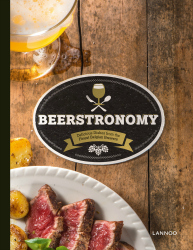
- Belgian Beer
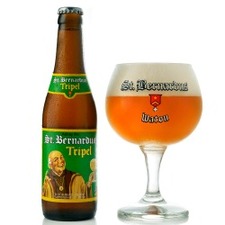
Between 1946 and 1992 the Sint-Sixtus Westvleteren abbey beers were brewed by the Sint Bernardus brewery. When the monks of Westvleteren decided to start brewing their beers within the abbey walls again, Sint Bernardus were concerned about falling sa... [ more ]
Belgian Brewery

Brasserie de Brunehaut want you to taste a real beer. Main brewer Damien Delnest: “Niche beers like our gluten-free, organic Brunehaut Blonde and Ambrée compel us to work in an artisan way. It is quite a challenge to achieve... [ more ]
- Belgian Food

All of us Belgians were born with a thoroughly sweet tooth. We enjoy 'babelutten', 'bonbons', 'gommetjes', 'nougat', 'spekken', 'veters' or 'karamellen'. Complete the list with our endless range of regional specialties and y... [ more ]

Belgium Travel Guide

A beer, travel and tourism visitors guide to Namur. Details of tourist attractions, where to eat, sleep and drink when visiting Namur. [ more... ]

Beer, travel and tourism guide for the picturesque city of Bouillon in the Ardennes. Things to see, do, where to stay, eat and drink when visiting Bouillon. [ more... ]

Beer, travel and tourism guide for visitors to Hasselt in Limburg. Information about where to eat, drink beer and visit in and around Hasselt. [ more... ]

Beer, travel and tourist Information about the historic Belgian city of Bruges (Brugge). Things to do, where to stay, eat and drink when visiting Bruges. [ more... ]

A beer, brewery and travel guide for the Belgian city of Antwerp. Information about things to do, visit and where eat, drink beer and stay in Antwerp. [ more... ]

A brewery, beer, travel and tourism guide about Leuven in Belgium. Information on tourist attractions, where to shop, eat, stay and drink beer in Leuven. [ more... ]

Beer, travel and tourism guide for the picturesque city of Durbuy in the Ardennes. Things to see, do, where to stay, eat and drink when visiting Durbuy. [ more... ]

Beer and travel guide for anyone visiting Poperinge, the hops capital of Belgium. Where to stay, visit, eat and drink in or close to Poperinge. [ more... ]
_1024x569.jpg?1472673521)
Beer Tourism Prize Draw
By entering you confirm that you are of legal drinking age and agree to our terms and conditions.
Belgian Beer Guide

Well, it is far from a coincidence. In Belgium we are brewing far more beer than we are consuming ourselves. Relatively speaking we are Europe’s largest beer exporter.
Every year, 18 million hectolitres of beer is flowing from the tanks of Belgian breweries and 11 million of this output flows across the border(s), to our neighbouring countries of France, the Netherlands, Germany and the UK as well as farther-flung destinations such as Italy, Spain, Scandinavia, the USA, Japan and China…
Belgian beer is at the pinnacle of quality craft beer and is now a top reference on a global level, attracting the same status as Scottish whisky or Italian wine.
So what makes ‘brewed in Belgium’ so special? Top of the charts has to be our respect for centuries-old tradition. We don’t mean to say that we are living in a dusty beer museum.

In the brewery labs everything is analysed down to the minutest detail. This is how the brewers manage to produce beers of consistent quality. After all, this is what the average beer drinker looks for in their beer.
When he or she orders their usual pils, they will expect the same familiar taste in the glass every single time.
All this sounds far easier than it actually is. And the more accessible the beer, and the less alcohol it contains, the harder it is to produce the same brew time after time.
.jpg?1372534907)
Just to provide an example: most established breweries are having clones of their yeast strains stored in the yeast banks managed by the universities.
The academicians act as advisors for the development of new beers and collaborate with the brewery to find the right strain of yeast.
In the meantime, they have developed a taste for test brewing themselves to the point where nowadays, albeit on a very modest scale, in their own microbrewery they try to resurrect beers that were thought to have vanished from the brewing world.
Family breweries with roots going back to the 19th century or even more ancient have managed to ensure the survival of traditional beer styles, as shown by the story of the Belgian Family Brewers. In addition to the omnipresent pils there is a wealth of other options.

This style of beer is given plenty of time to develop its complex flavours, just like the new generation of top-fermented beers matured in recycled wine, whisky or cognac barrels.
The process allows the beers to absorb the rich aromas and tastes of the alcohol previously stores in these barrels.
One of the finest aspects of Belgian beer culture is that it allows you to re-trace the origin of various traditional beer styles through the ages.

Abbey beers point out the historic importance of the monks, who were the educated people of their time. They advised people to drink beer instead of water as the quality of drinking water, especially in the cities, was way below par.
Two hundred years ago our ancestors used to consume over two hundred litres of, albeit ‘small’ (low alcohol), beer per capita per annum.
Nowadays we like to keep things civilised with a consumption of eighty litres per head, but the beer we enjoy these days is stronger and of a higher quality.
Leafing through this virtual beer guide you cannot help but be ‘sucked into’ the rich Belgian beer world .
You get a taste of the broad story of Belgian beer production or else you zoom in to explore the history of a well-known brewery and its beers. Beer Tourism went online in early 2013.

In addition to our website we continue to showcase the rich Belgian beer culture in different ways through our posts on Google+, Facebook, Twitter, LinkedIn, Instagram and Pinterest.
You can use Beer Tourism as your window on the world of Belgian beer, freshly drawn from the source: the Belgian breweries.
For many years Belgian beers were only talked about outside our country’s borders.
We felt it was high time we turned things around and started wielding our own mashing stick. We do hope you enjoy what we have to offer.

They are also making a contribution to the surprisingly diverse Belgian beer culture. The microbrewers have turned out to be a blessing for the entire beer landscape thanks to their abundant creativity.
They shy away from what is traditional, are lightning-quick when it comes to picking up new trends and know how to translate these into our beer culture.
They ensure that, in addition to ‘balance in the glass’, there is room for what may appear at first sight to be far-fetched experiments.
And so, we are seeing niche beers co-existing happily with the mainstream. This creativity is now also fermenting and bubbling up into the Belgian food scene .
After all the brasseries, taverns and pub-cafés that have found their way towards a good beer.

Hobby cooks are also increasingly using beer in their kitchens. It’s all part of the trend towards ‘terroir’ where we see regional products gaining in popularity.
After all, you will find beers in every region that suit the local dishes particularly well…
Our enthusiasm for beer almost makes us forget that there are plenty of other riches to be discovered in our tiny country on the North Sea.
With our travel guide to Belgium we would like to introduce you to our well-known towns and cities; Brussels of course, but those in Flanders and Wallonia too, all of them rich in both history and (beer) culture.

Just think of Ypres that is mentioned in the same breath as Flanders Fields and the First World War, or Bastogne in the Ardennes, which still bears the traces of the Battle of the Bulge that was fought in the Second World War.
The towns of Bouillon, La Roche and Houffalize take on the splendid colours of the forests of the Ardennes. Leuven, the birthplace of the world’s largest brewery, is laying claim to the title of beer capital. Poperinge is at the centre of Belgian hop cultivation.
Nieuwpoort and Ostend bring you the salty tang of the beaches of the North Sea. So many cities, so many stories in what is after all only a tiny country.
In Belgium you are never more than an hour’s drive away from entering another world where you will find a different culture and sometimes also a different language.
This kaleidoscope of flavours and styles translates into your glass of beer. The good news is that you are never far away from tasting something that will tingle your taste buds. Open up all your senses. Take your time. Enjoy the slight air of inebriation. And above all, do let us know how it all went down!
Erik Verdonck Editor-in-Chief & Artistic Director at BeerTourism.com
You Might Like

Belgian Beer Culture App
This freemium App for IOS and Android lets you explore and find the best that Belgium's UNESCO recognised beer culture has to offer. Find breweries, bars, restaurants, festivals, events, experiences and beer shops; create you own beer trips and be your own tour guide!

Duvel Brewery Experience
The Duvel Moortgat Brewery caters to everyone’s tastes with 3 different brewery experiences. From complete novice to experienced beer lover, Duvel has the brewery visit package for you.

Bruges Beer Experience
Everything you ever wanted to know about (Belgian) beer under one roof. You get to feel, smell and taste ingredients and discover the typical Belgian beer styles. Come celebrate Belgian beer culture in heart of historic Bruges! Shop and bar are accessible without visiting the museum.

Brasserie Dubuisson
Brasserie Dubussion prides itself on tradition and taste and has opened a brand new visitors centre, the Beerstorium. Learn about the rich history, beers and brewing at the oldest brewery in Wallonia. You can visit this authentic Belgian brewery, see brewing in action, as well as taste some of their delicious brews for yourself, including their legendary Bush (Scaldis) beer range.

Bierkasteel Van Honsebrouck
Kasteel Brouwerij Vanhonsebrouck, well known for it's "Kasteel" beer range, now offers their Bierkasteel beer experience; brewery visit, event location, restaurant, bar and shop.
Beer Tourism Newsletter Signup
Enter your name and email address on the right and click "SignUp" to join.
TRAVEL GUIDES
- Sint-Truiden
- Belgian Breweries
- Recipes With Beer
- About Belgium
- Travel Tools
- Beer Travel
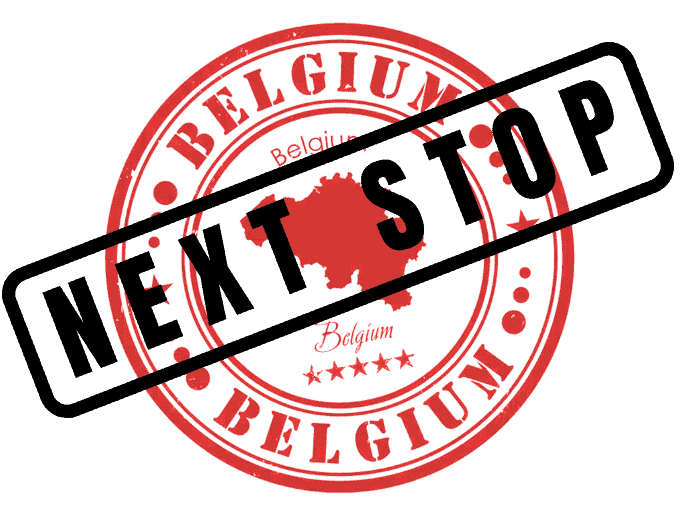
21x The Best Belgian Beer to Try on Your Next Trip
This article may contain affiliate links. This means we receive a small commission whenever you book or purchase something through our links (at no extra cost to you!). You can find more information in our disclaimer .
While some might still be wondering whether Belgium is a country or not, most people are aware that Belgium and beer have an unmistakable connection.
As one of the smallest countries in the world, we have a large and diverse beer production with over 1600 different types in 2015 (Hilde Deweer, Alle Belgische bieren ) although not all of them are still being brewed.
Since I’m not a beer drinker at all (in fact, it was only last summer that I ordered my first ever beer—while doing research on Brussels for this website and I wanted a nice picture with a beer bottle).
I asked Belgian and international travel bloggers to recommend their favourite Belgian beer! Some of them made it a sport to try as many beers in Belgium as they could.
I hope that with this article you get challenged to do the same!
Types of Belgian beer
#21 rochefort 10, 🍺 brussels walking and tasting tour by soda entertainment, 🍺 beerwalk bruges (english guide), 🍻 moeder lambic on fontainhas square, 🍻 brassigaume, who invented belgian beer, the best belgian beer: an introduction, best beer in belgium: background.
Few countries have such a connection as Belgium does with beer. Although the Belgians aren’t the biggest drinkers themselves, most enjoy a good glass of beer at the weekend.
Some beers are the perfect refreshment for a hot summer day and others are more suitable to be enjoyed indoors on a cold winter evening: there’s a great beer for just about any time you might visit Belgium .
Then why is Belgium called “ the number one country for beer “?
The Belgian beer culture goes way back to the Middle Ages when all professions were organized in guilds. We know from archives that the beer brewers guild was founded in 1385.
This means the beer-making tradition goes back to age-old traditions that are still partly in use nowadays.
UNESCO has recognized the Belgian beer culture as part of the Intangible Cultural Heritage of Humanity list, giving it the same connotation as Argentinian tango and Brazilian samba.

Belgian Beer Styles: What makes Belgian beer unique?
With over 250 breweries and an enormous amount of 2000+ original beers available, one begins to wonder how it’s possible to create all those different kinds.
The way of brewing and the ingredients determine the colour and taste of the beer . The combination of both factors offers endless possibilities, resulting in a variety of sweet, fruity, bitter, herbal or sour types of beer.
There are four different fermentation processes in use in Belgium:
📌 High fermentation (Ale) : The fermentation process happens at temperatures from 15 to 25 degrees Celcius. The yeast forms a blanket over the beer and ferments on top of it.
📌 Low fermentation (Lager) : The fermentation process happens at lower temperatures of 4 to 13 degrees Celcius. The yeast drops to the bottom of the tank where it ferments.
📌 Mixed fermentation : This type of beer is formed by mixing high-fermented beers with spontaneously fermented ones and adding another type of yeast
📌 Spontaneous fermentation (Lambic/Gueuze) : Fermentation happens naturally by exposing the liquid to the open air. 86 different types of natural yeasts can be found in the air. This is the original beer brewing process, but as the process is much harder to control, very few beers nowadays are produced this way (the big exception being Lambic & Gueuze beers).

🍺 Pils : a low-fermented beer that’s very popular and known worldwide. In Flanders, you get this kind when you order a pintje . Famous examples are Cristal Alken , Jupiler , Maes and Stella Artois .
🍺 White/Wheat beer : a highly fermented beer that is often unfiltered and a bit cloudy. Examples are Hoegaarden , St. Bernardus Wit , Blanche de Namur and Wittekerke .
🍺 Lambic & Gueuze : Lambic is a spontaneously fermented beer with a copper to amber colour produced in the Zenne Valley close to Brussels. A Gueuze beer is created by mixing old and young Lambics.
Examples are Kriek Lindemans , Lindemans Framboise , Timmermans Oude Gueuze and Belle-Vue Gueuze .
🍺 Trappist : Abbey beer that is brewed by monks. Only 11 breweries worldwide are allowed to carry the Authentic Trappist Product label – 6 of them can be found in Belgium.
They usually carry the name of a village or town referring to the abbey situated at that location. Well-known examples are Leffe , Westvleteren , Westmalle and Grimbergen .
🍺 Speciality beer : the rest of the beers that don’t fit any of the former categories. There’s a great variety of flavours. Examples are Duvel , Brugse zot , Brugge Blond and Gouden Carolus .
Top Belgium beer brands
These are the best Belgium beers, not in a particular order! All of them were chosen by Belgian and international travel bloggers and sampled in Belgium!
#1 Westvleteren 12
Trappist | 10.2% | St. Sixtus Abbey of Westvleteren

I have tried many famous Belgian beers. In fact, my husband and I spent a week touring around Belgium to specifically try as many beers as we could. I would have to say that, hands down, Westvleteren 12 is my favourite. It’s a 10.2% ABV quadruple style beer and consistently in the top 10 on beer rating sites . Westvleteren 12 is brewed at the Trappist Abbey of St. Sixtus in Vleteren, and is a little hard to get a hold of outside of their tasting room next door. You must make an appointment through a notoriously busy website/phone line to pick up a maximum of 24 beers. I was able to try it at the tasting room as well as buy one in Bruges. They are not inexpensive and they do not have labels! It pours dark brown and tastes a little sweet (but not too sweet) with caramel and molasses notes; very complex. It’s smooth and delicious! I cannot wait to have another someday back in Belgium. By Theresa from Adventures in Middle Aged Travel
#2 Chimay Tripel
Trappist, Tripel | 8% | Abbey of Notre Dame de Scourmont
Ah, Belgian beer. I have a real love, hate relationship with the stuff. While there aren’t many Belgian beers I would choose over a good German or, better yet, Czech, beer; the one standout in the field for me, however, is Chimay Tripel. This brewed elixir of the gods (I can call it that since it is made by Trappist monks), has a heavenly, foamy head resting on a slightly cloudy golden brew. Its slight fruit and floral notes are counterbalanced perfectly by the hint of bitterness that I love. My first taste of Chimay tripel was at the Cafe Rose Red in Bruges, Belgium. Trust me, they know their beer and exactly how to serve it. But if you don’t want to put your taste buds at risk, just order a Chimay Tripel poured into a signature, thick glass goblet, you won’t be sorry. by Jim at Reflections Enroute
#3 Hoegaarden
Witbier | 4.9% | Brewery De Kluis
My favourite Belgian beer is Hoegaarden. This refreshing white beer is the perfect thirst quencher on a warm sunny day. Hoegaarden beer was born in 1445 which makes it the original Belgian white beer and is widely regarded as the benchmark for white beers because of its low bitterness level and low complexity, making it an easy beer to drink and like. It has a balanced taste that starts with hints of citrus and coriander, then evolves to banana, cinnamon and spices, to leave your mouth watering as you yearn for the next sip. Hoegaarden is best served in its own signature hexagon glass and tastes even better when you drink it close to its source in Belgium. I haven’t had the chance to visit the brewery yet, but I can tell you from personal experience that it tastes amazing on a terrace in the Belgian city of Ghent too. By Tom & Zi from Craving Adventure
#4 Bourgogne des Flandres
Red Ale | 5% | Brewery Bourgogne des Flandres

One of my favourite Belgian beers is Bourgogne des Flandres. This is considered to be a light ale beer originating in the Flemish region of Belgium. The beer has about 6% alcohol and is slightly bitter. The colour of the beer is sort of like dark cola brown. It tastes well when chilled. We went on a brewery tour of the Bourgogne des Flandres complex in Bruges and completely loved it. The brewery is located by the canal, and after an educational tour, sitting by the restaurant and sampling the beer is one of our favourite memories from Belgium. Highly recommend trying Bourgogne des Flandres when you are in Belgium next! By Mayuri from 2 day Itinerary
#5 Sint Bernardus Abt 12
Quadrupel dark brown Ale | 10% | Brewery St. Bernardus
As a Belgian, my absolute favourite beer is Sint-Bernardus Abt 12. At 10% alcohol percentage, it is not a good idea to start chucking this dark aromatic quadruple. It is very much a beer that has to be savoured. In fact: if you are looking for the perfect beer to have long philosophical conversations over in the middle of a beautiful historical square in Ghent, Antwerp or even Bruges? Then this is it! Sint-Bernardus Abt 12 is widely considered to be one of the best beers in the world . In Belgium, it is a badly kept secret that Sint-Bernardus Abt 12 is basically the same beer as Westvleteren. Both beers are brewed only a couple of kilometres apart from the same recipe (by brewmaster Mathieu Szafranski) and even the same yeast strain making both beers practically indistinguishable by taste. By Lieze from Glitter Rebel
#6 La Chouffe
Pale Ale | 8% | Brewery d’Achouffe

I have tried more than one type of Belgian beer. But the best experience was with Chouffe beer. It has a rich flavour. The beer has the flavour of ripe banana, peach, and a bit of whiff of white cardamom. It has a dominant aroma of bubble gum and Bosc pear with a pinch of honey-like maltiness. After the initial malt taste, the bear has a note of Asian pear. Truly classic, the Chouffe beer has an ivory-coloured creamy head. The flavour unfolds the aroma of sweet banana, candy-like malt, and a pinch of pepperiness. It all concludes with strong alcoholic warmth. I tried this bear in Belgium and it was a mix of sweet, sour, and malty Belgian experience. The village of La Chouffe can be visited with a day trip from Brussels. It is easily available at Belgian bars. By Paulina from Paulina on the Road
#7 Gouden Carolus Tripel
Tripel | 9% | Brewery Het Anker
Honestly, I didn’t understand what beer was all about until I tasted Gouden Carolus Tripel. This award-winning beer is made with an abundance of hops and has a rich flavour. It was first brewed over 500 years ago and to this day, it continues to be made according to ancient traditions by Brouwerij Het Anker in Mechelen. I had my first glass of Gouden Carolus at the Beer Wall in Brugge, overlooking the water. It was a revelation and a life-changing experience. While pretty difficult to find outside Belgium , I recommend you look for it next time you visit. You won’t regret it! By Laura from Travelers Universe
#8 Tripel LeFort
Tripel | 8.8% | Brewery Omer vander Ghinste

I have many favourite Belgian beers, and one of them is a tripel. Le Fort, called the best tripel in the world in 2016 and 2018, is a golden blonde beer. It has a high alcohol content (8.8%) and is made refreshingly delicious by its fruity and complex aroma and taste. While it’s good with any meat dish, it is also perfect to drink on its own. I had my first taste of it in Bruges, but you can also buy it in any supermarket in Belgium. Brasserie LeFort, a family-owned brewery in Bellegem (near Kortrijk), also produces a traditional blond beer, Omer, and Max Kriek, among others, aside from Le Fort. They have a two-hour tour (€12) of their brewery every day, advance reservation needed. By Aleah from Guide to Belgium
#9 Belle-Vue Kriek
Lambic | 5.2% | Brewery Belle-Vue
Kriek lambic (or just Kriek for short) is a cherry flavoured Belgian beer that’s made by fermenting lambic with sour cherries. It’s the ideal beer for people who like slightly sweeter flavoured drinks, and was my introduction to the world of Belgian beers! I used to drink it at our local Belgian Beer Cafe in Auckland, New Zealand, so when I finally visited Belgium for the first time, you can bet it’s the first drink I ordered at the bar.. And many more times as we travelled around Brussels and Ghent. Of course, in Belgium, there are many different varieties and brands of kriek beer, but my favourite will always be Belle-Vue Kriek which was served on tap at our local and served up with a side of Belgian fries! By Nadine from Le Long Weekend
#10 Vedett Extra Blond
Blond Ale | 5.2% | Brewery Duvel-Moortgat
Our favourite Belgian beer is easy to remember but hard to find in the US! We love Vedett Extra Blond and tried it first in an Amsterdam cafe. We just arrived from the US and it was our first meal in Europe. We asked the waiter what his favourite beer was and he brought out Vedett. We proceeded to look for it each time we ate out! It is a light and crisp premium lager. By Jennifer from Family Trip Guides
Golden Ale | 8.5% | Brewery Duvel-Moortgat

Duvel is one of Belgium’s most popular beers and an absolute must-try. I tried it in Brussels for the first time but it’s very widely represented. It’s considered a strong pale ale and has more than 8% alcohol content which is quite surprisingly strong. You definitely can’t taste it! The taste is absolutely delicious and one of my favourites. By Victoria from Guide Your Travel
#12 Westmalle
Tripel Trappist | 9.5% | Brewery Westmalle
One of the more popular Trappist beers , Westmalle, is a Belgian Beer to try when in Belgium or otherwise. One of my favourites, it is a malty and blond Trappist, that is intense yet quite favourable and goes best with fish, so one to try when having mussels! I tried it when I was in Ghent, and it is available at most restaurants throughout Belgium. By Lavina from Continent Hop
Trappist | 6.2% | Abbaye Notre Dame d’Orval
Orval is a medium-bodied, hoppy Trappist beer with an orange glow.
It is the only beer brewed by Abbaye Notre Dame d’Orval and is now one of the most sought-after beers in the world.
This Belgian Trappist beer is brewed with citrusy hops and has a complex taste profile. It has distinct fruitiness, a touch of caramel, and earthy, peppery bitterness.
It’s also dry-hopped and bottle fermented with the yeast Brettanomyces, making it a herbal-dry beer that’s unique in the entire world .
🍺 If you’re going to try Orval, note that it’s best served at 12°C – 14°C (54°F – 57°F) using the typical Orval chalice glass .
🍽️ It’s also good when paired with cheese, soup, or breadsticks wrapped in Iberico ham.
#14 Blanche De Bruxelles
White Beer | 4.5% | Lefebvre Brewery
Blanche de Bruxelles is a light-bodied white beer you can enjoy on any day!
It’s brewed with 40% soft wheat and only has a modest level of alcohol, making this beer soft, smooth, and perfect for a relaxing time.
Blanche de Bruxelles has an opalescent colour and a white, dense head.
It’s mostly sweet with a hint of wheat and yeast. You can also taste and smell the coriander and orange peel that are added during wort boiling.
🍺 This white beer is best served on a branded straight glass with the sediment and at 7.2°C – 10°C (45°F – 50°F) .
🍽️ You will also appreciate the taste of Blanche de Bruxelles better when paired with Thai dishes or food that include white fish, poultry, mussels, slow-cooked pork, Brie cheese, and hard tangy cheeses.
#15 Cuvee des Jacobins Rouge
Flanders Red Ale | 5.5% | Brouwerij Omer Vander Ghinste

This unique beer is a Flemish sour ale that was brewed in the traditional way. It’s a lambic, 100% foeder beer left to mature in oak casks for 18 months .
Cuvee des Jacobins Rouge has a sour and complex but well-balanced taste.
This beer has a hint of woody flavour and a creamy mouth feel too. It also gives off the aroma and aftertaste of vanilla, cocoa, and cherries.
🍺 For the best taste, Cuvee des Jacobins Rouge is poured at 4°C – 6 °C (39.2° F – 42.8°F) serving temperature.
🍽️ And for an excellent culinary experience, pair this red ale with Belgian grey shrimp or fresh goat’s cheese.
#16 Boon Geuze Mariage Parfait
Gueuze | 8% | Brouwerij Boon
Next on our list is this Gueuze beer that mainly consists of lambic that was aged in oak barrels for at least 3 years . It also contains unmalted wheat and barley malt and about 5% young lambic to generate the sparking.
Geuze Mariage Parfait is brewed in the brewery’s finest and oldest barrels . This helps give the beer more depth of flavour that is not commonly found in other types of beers.
This beer has a mild, sour berry taste that combines well with the aroma from the oak barrels.
It’s also sourer than traditional gueuze and acidic enough to cut through the deep sweetness to create an unforgettable flavour.
🍺 Geuze Mariage Parfait is best served at 12°C (53.6°F) . It’s also better enjoyed using its corresponding traditional Geuze Boon glass.
#17 Straffe Hendrik
Quadrupel | 11% | Brouwerij De Halve Maan
If you’re craving some dark, full-bodied beer , Straffe Hendrik Quadrupel will be a tasteful answer.
It’s the first Belgian Quadrupel beer that was ever made !
Straffe Hendrik Quadrupel boasts distinct flavours from special malts, coriander, anis, dark fruit, and roasted chestnuts. This beer gives off a spicy aroma and slightly treacly aftertaste.
Its intense dark brown colour and light head will also look so inviting when served on its designated glass: an elegant, tulip-shaped glass with a tall stem.
🍺 And if you want to enjoy its clean darkness in the best way possible, pour it at 8°C (46.4°F) serving temperature .
🍽️ Straffe Hendrik Quadrupel will also work well when paired with red meat and chocolate desserts.
Blonde Ale | 8% | Brouwerij Omer Vander Ghinste

With a lovely golden colour and thin white head, Omer Traditional Blond is a top-fermented beer that’s a product of 130 years of brewing knowledge and tradition.
This beer is brewed with carefully selected ingredients that resulted in a full-flavoured, fruity beer with only a hint of bitterness.
These ingredients include high-quality barley malt from France, a special yeast, and three varieties of selected aromatic hops.
🍺 Omer Traditional Blond is best served at 4-6°C (39.2°F – 42.8°F) .
🍽️ If you want to pair this beer with dinner, try it with sole meunière (a traditional Belgian dish). You will also find mussels made with Omer to be a flavourful delicacy.
#19 Corsendonk Pater
Dubbel | 6.5% | Brouwerij Corsendonk
Corsendonk Pater is a strong Belgian ale that’s top-fermented and bottle conditioned.
It has a dark, reddish brown colour, thick tan head, and a combination of aromas, including plum, figs, raisins, apples, cherries, roasted malt, caramelized sugar, spice, and chocolate.
This is a smooth and dry beer that’s mild on the palate. You can taste caramelized malt, ripe fruit, toasted bread, liquorice, coffee, and caramel which culminated in a well-balanced bitterness.
🍺 10°C – 12.7°C (50°F – 55°F) is the suggested pouring temperature to best enjoy the Corsendonk Pater Dubbel Ale. You can use either a goblet, snifter, or chalice for drinking.
🍽️ And for perfect dish pairings, I suggest roast pork and beef dishes.
This beer will also taste great when served alongside chocolates or buttery-style cheeses, like Guoda and Brie.
#20 De Koninck
Spéciale Belge | 5.2% | Brouwerij De Koninck

De Koninck is the flagship beer of Brouwerij De Koninck which is served on a glass called bolleke.
Locals actually simply call De Koninck beer ‘bolleke’ when ordering in pubs, especially in Antwerp where it’s from.
This beer is brewed using pale barley malt, caramelized malts, and Saaz-Saaz hopes. It has a pretty amber colour and a frothy, creamy collar which should be about two fingers thick when poured into the glass.
De Koninck is a mild beer which masks its alcohol content. It has a zesty, slightly bitter taste where hints of caramel malt, banana, and fruitiness are also evident.
🍺 And to enjoy these flavours better, serve the beer at 4 – 5 °C (40° F – 41 °F) .
🍽️ This Belgian beer is also great when paired with pizza, pork fillet, salmon, and dishes prepared with soy sauce.
Desserts containing vanilla and tropical fruits are excellent pairs for De Koninck too!
Trappist, Quadrupel | 11.3% | Brasserie de Rochefort
Rochefort 10 is a strong Trappist beer with a deep-brown colour and cream-coloured froth.
It’s the darkest beer that Rochefort Brewery makes and is complete with a complex mixture of flavours. This is another beer in Belgium that you shouldn’t miss!
It’s brewed using natural spring water from the local Tridaine spring . Included in its ingredients are Munich malt, pale malt, unmalted grain, coriander, and candy sugar, among others.
Rochefort 10 has a dominant taste of latte coffee and a distinct chocolate aroma. There are also hints of citrus, cloves, and spices.
🍽️ These flavours go well with lamb shanks, burgers, truffles, and cheesecake, to name a few.
🍺 This beer is best served at 8°C – 14°C (46°F – 57°F) pouring temperature. It’s also meant to be served in its proprietary Rochefort tulip-shaped glass
Best Belgian Beer Tours
Best beer tours in brussels, 🍺 hungry mary’s famous beer and chocolate tour.

⭐ RATING: 5/5 ( 1035 reviews ) | ⏳ TOUR LENGTH: 4 hours and 30 minutes | 💰 CHECK PRICE
Hungry Mary is one of the most popular beer tours in Brussels .
The tour is not even limited to tasting authentic Belgian beers alone. It also highlights the world-famous flavours of the chocolates in Belgium.
Hungry Mary’s beer and chocolate tour starts with chocolate tasting where you get to enjoy at least 10 excellent flavours . These include salted butter caramel, fruit fillings, crunchy hazelnut mixture, and basil.
You will then visit three bars within the Grand Place. These local taverns will offer beer samplers for new and unique Belgian beer flavours .
“Marie & Lil took us on an amazing tour of Brussels which included 12 chocolates to taste and 6 Belgian beers. You also visit some of Brussels’ main tourist attractions and receive a few snacky treats along the way!” Dylan_S, May 2023 ( SEE MORE REVIEWS )
Aside from beers and chocolates, the tour also includes cheese, Belgian fries, and cured meat tastings.
They also always have a friendly and knowledgeable local guide that can make the whole experience more memorable.
🍺 Brussels Chocolate, Beer, Waffle, and Belgian Whiskey All-in-One (Small Group) Tour by The Best of Brussels

⭐ RATING: 5/5 stars ( 398 reviews ) | ⏳ TOUR LENGTH: 5 hours 30 minutes | 💰 CHECK PRICE
The Best of Brussels organises this great food and beer tour in Belgium .
This is an all-encompassing experience that lets you taste amazing beers, whiskey, chocolates, and waffles while learning more about Belgium’s brewing and chocolate-making culture.
You will get to visit some of Brussels’s best local breweries and taste several exclusive concoctions.
The local guide will also indulge you in informative yet exciting stories about Belgium’s beer culture.
“Best tour ever! Avo was amazing! Lots of info/history of Brussels. The amount of food and beer that we had on this tour was incredible! And they weren’t sample sizes. They were full portions. I highly recommend this tour for anyone wanting to get a full taste of Brussels. Lots of chocolate, food and beer!!” Miki_L, May 2023 ( SEE MORE REVIEWS )
If you have a sweet tooth, you’ll particularly love the chocolate-tasting portion where 12 delicious flavours will bless your taste buds. Most of these locally produced chocolate treats have recipes that originated in the 17th century.
By the end of the tour, you will choose from Brussels’ famous waffle selections which are served with fresh fruits. The combination will make your chosen Belgian beer taste a lot better!

⭐ RATING: 5/5 stars ( 376 reviews ) | ⏳ TOUR LENGTH: 2 – 3 hours | 💰 CHECK PRICE
In this walking and tasting tour organised by Soda Entertainment, you’ll be doing more than merely passing stores and stalls for quick product sampling.
Instead, you can better embrace the local culture by walking on the same path that the locals take!
“Great tour! The chocolate tasting, the beer tasting and the explanation of Brussels’ history was spot-on!” Manmeet_S, May 2023 ( SEE MORE REVIEWS )
As you walk around, the guide will share interesting stories about the people, history, chocolates, and beer in Brussels.
You’ll then pass by famous landmarks , like the Grand Place and Mont des Arts. You will also be served samplers of traditional snacks that are enjoyed by locals.
And to make this tour even better, you have the choice to customize the series of shops and taverns that you’ll visit!
Best Beer Tours in Bruges
🍺 best of bruges: history, chocolate & beer tour.

⭐ RATING: 5.0 ( 132 reviews )| ⌛ TOUR LENGTH: 3 hours 30 minutes | 💰 CHECK PRICE
This is a 3-in-1 Best of Bruges tour that gets you up close with the top three highlights of Bruges tourism : historical centre, beer-brewing culture, and chocolate-making traditions.
First, you’ll get to visit one of the top-rated chocolatiers in Belgium . Here you will learn about the history and tradition behind Belgium’s famous chocolate treats.
You can also see a demo of the chocolate-making process and sample their flavours.
“Great time! Martin was a great guide…The focus isn’t just chocolate and beer, it’s a city tour with a trip to one of Bruges’ amazing chocolate shops where you get a small demo and a chance to buy chocolates…and to one of their breweries (where we ended the tour with a really tasty beer!)” Janice_M, May 2023 ( SEE REVIEWS )
The tour will then continue on a historic walk around Bruges’ UNESCO-listed, medieval centre . It will then be capped off with a visit to the local public brewery, the Bourgogne de Flandres .
You will not only taste their amazing beers but also get some insights into how they’re made.
🍺 Bruges Bites & Sites – Belgian Food, Beer & A Little Bit of History

⭐ RATING: 5.0 ( 85 reviews ) | ⌛ TOUR LENGTH: 2 to 3 hours | 💰 CHECK PRICE
This food and beer tasting tour is tailored for small groups with a maximum of 12 members per group .
It aims to give you a more personal experience with Bruges’ culinary heritage, brewing culture, and the city centre’s remarkable sights.
“We had an AMAZING time! Pascal was the best tour guide we could ask for! Amazing food, views, and beer! Highly recommend!” Jennifer_H, Jun 2023 ( SEE REVIEWS )
You will be strolling through the city centre for some epic sightseeing and food tour.
A passionate storyteller-guide will be leading your group as you learn the history behind some of Belgium’s best-loved foods.
There’s also the opportunity to taste some of the locals’ favourite food, including chocolates, waffles, and fries.
And to end your tour on the best note, learn more about the tradition of brewing and have a toast with a glass of Belgian beer!

⭐ RATING: 5.0 ( 74 reviews )| ⌛ TOUR LENGTH: 3 hours (approx.)| 💰 CHECK PRICE
In this walking tour , you will discover the brewing traditions and delicious local beers in Bruges.
It will begin within the very walls of the Bruges Beer Museum where your English-speaking guide will let you in on the city’s rich brewing culture.
“We expected to drink beer and hear everything about beer but we got so much more than that! Just do it—you won’t regret.” Jacqueline_T, Mar 2022 ( SEE REVIEWS )
There are several stops scheduled throughout the walking tour, allowing you to learn more about the city’s beer history.
And, more importantly, you’ll get to enjoy some samples of five different Belgian beers!
The tour also includes a visit to the UNESCO-listed, medieval centre in Bruges .
Where to drink the best beer in Belgium?
🍻 westvleteren brewery (visitor’s centre).
While you can never visit the actual brewery where the monks work, you can still get close by going to the visitors’ centre instead—the cafe In de Vrede .
It’s just across the street from the monastery and offers good food along with the chance to taste the rare Westvleteren 12. The centre also has an interesting exhibition depicting the life of a Trappist monk at the monastery.
Getting to In de Vrede is quite hard via public transport. But if you’re driving a car, it will only be about 1 hour away from Bruges or Ostend.
📍 Location : Donkerstraat 13, Westvleteren, Vleteren 8640 Belgium
🍻 Delirium Cafe
If you love beer, you can’t visit Belgium without dropping by Delirium Cafe. They first made it to the Guinness Book of World Records in 2004 by offering 2,004 different beers. Now, their wide range of options even expanded to 3,162 beers !

Delirium Cafe offers all kinds of famous Belgian beers, as well as beers from over 60 different countries. They even serve some unusual beers, like banana beers, chocolate beers, gluten-free beers, and beers with hot pepper and gingerbread, to name a few.
And if you ever feel overwhelmed choosing from their 60-page menu , don’t hesitate to ask the staff for recommendations. They know everything about beers and can serve yours on the right glass and with the right pouring technique.
📍 Location : Imp. de la Fidélité 4, 1000 Bruxelles, Belgium
🍻 Brussels Beer Project
If you want to experience the famous Belgian craft beers but with a modern touch, go to the Brussels Beer Project. This project was started by Sébastien Morvan and Olivier de Brauwere in 2013 and is now offering unique beers to the public.
The Brussels Beer Project is easy to get to since it’s just a 20-minute walk away from the Brussels Central Station . If you visit, you’ll get to choose from numerous craft beers made by professional brewers, not only from Belgium but from other countries as well.
The project’s main goal is to introduce new flavours through a bold, creative, and collaborative way of brewing. Included in their offerings is the first-ever beer that was brewed with recycled bread.
They brew one new beer every week and if you visit at the right time, you might just be one of the first people who get to taste it!
📍 Location : Rue Antoine Dansaert, 188, 1000 Bruxelles, Belgium
🍻 The Grand Place (Grote Markt)
For a more complete Belgium experience, try pairing your excellent beer with a fantastic view at the Grand Place, also known as Grote Markt (Dutch for “Grand Market”).
It’s always satisfying to sip a dark beer (or any beer you choose) while you’re sitting at one of the converted guild halls and enjoying the view of 17th-century architecture.

Note, though, that the Grand Place is the central square of Brussels and beer prices might be higher than in other places . But the good news is that the view and overall experience will more than make up for it.
After all, the Grand Place is one of the most beautiful squares in Europe and in the whole world. It’s also been registered as a UNESCO World Heritage Site since 1998.
📍 Location : Grand Place Brussels Main Square, Brussels 1000 Belgium
Moeder Lambic is hands-down one of the best craft beer pubs in Belgium . They offer about 40 different bars on tap ; a varied selection that ranges from popular to rare flavours.
They also change their guest beers regularly so you can look forward to something in every visit. And aside from the great beer selection, the overall atmosphere and experience in this place are for the books.
You can simply relax with your friends or loved ones as you try various beers and appreciate the aesthetically pleasing view, from their modern interior to the charming view of Fontainhas Square.
📍 Location : Pl. Fontainas 8, 1000 Bruxelles, Belgium
Belgian Beer Culture
Belgian beer glasses.
Very typical for the beer culture in Belgium is the use of elaborate glasses for each different type of beer .
When you order a drink, you’ll always get your preferred choice served in its own glass—unless the pub ran out of the glass in which case they will excuse themselves for serving it in a different glass.
Each glass comes in its own specific shape to aid the aroma, colour and large heads of the beer. It will also wear the name of the beer, often in quite bold letters.
Fruit beers are often served in champagne-like flutes , while the tulip shape is commonly used for beers such as Duvel and many others. Abbey beers are often served in goblets or chalices , a large bowl-shaped glass on a high stem.
Cooking with Belgian Beer
Traditionally, a couple of famous Belgian dishes are made with beer as an important ingredient. The most well-known one is Flemish stew ( Carbonade/Stoofvlees ) which is a beef stew that’s cooked in dark beer.

In the same way that wines are matched with each course of a meal, the same can be done with beer. In that regard, white beers combine really well with fish or seafood dishes.
Blond ales and tripel go well with chicken, while dark beers are often paired with red meat. The sweeter fruit beers are perfect to finish your dessert with.
Beer Festivals in Belgium
There are a lot of beer festivals in Belgium that you can celebrate. There’s a festival going on almost every weekend . And if you time your visit right, you can even witness up to 6 festivals happening on a weekend!
These beer festivals can be small-town gatherings or grander celebrations observed in an entire region or the whole country.
Some of my most beloved Belgian beer festivals include:
🍻 Zythos Beer Festival
Every year at the end of April , the Zythos Beer Festival is held in the Brabanthal Exhibition Hall in Leuven . However, this fest was first celebrated on March 2004 at St. Nicholas, where it was held for many years until they moved to Leuven in 2011.
Today, you can enjoy nearly one hundred stands here staffed by different beer firms and breweries. Many local restaurants also take part in the celebration, serving dishes that include beer.
You can also enjoy a beer walk or join a beer workshop. There are also beers that will be brewed specifically for the Zythos Beer Festival , giving you the chance to taste them for the first time!
🍻 Belgian Beer Weekend
Every year, the first weekend of September is set for the celebration of the Belgian Beer Weekend (Belgisch Bierweekend) .
The fest is held at Grand Place in Brussels , hosted by the National Federation of Belgian Brewers. The Belgian Beer Weekend will then culminate on Sunday night.

You can join in the fun starting by watching the parade of historic beer carts and the local fanfare company all donned in historic costumes.
You can then visit the numerous stands where you can taste excellent beers from small, medium, and large Belgium breweries.
Brassigaume is a beer festival that has been celebrated in the village of Marbehan in Belgium every October since 2001 . You should check out this fest if you like to discover new tastes and aromas in your beer.
This is a unique festival where instead of big brands pulling more audience, more than 20 Belgian and international microbreweries come together.
Throughout this 2-day fest, you can enjoy beer tastings of more than 100 craft beers. You can also attend lectures and Q&A sessions about brewing beers. And before the event ends, don’t forget to drop by the fest’s famous Beer Shop!
Frequently Asked Questions about Belgian Beers
What beer is most popular in belgium.
Belgian-style tripel is one of the most popular beers in Belgium. It’s a strong ale that has an ABV range of 7-10%. Another popular beer style is the Belgian blonde ale. It’s slightly weaker than tripels with only 6-8% ABV.
And if you’re looking for the most popular beer brand in Belgium, Chimay and Duvel are some of the top brands that won’t disappoint. Stella Artois, one of the world’s biggest beer brands, is also located in Belgium.
What is the biggest-selling Belgian beer?
Chimay and Duvel beers are among the best-selling beers in Belgium. Chimay specializes in Trappist ales while Duvel gives you strong golden ales. Stella Artois is another beer brand in Belgium that is known worldwide. They’ve been crafting fine lager for over 600 years now.
What is Belgian beer known for?
Belgian beers are known for their unique taste which has fruity and spicy notes that balance out their sweetness and bitterness.
This is mostly due to the yeast they used in brewing, which has a floral edge that contrasts the beer’s bitterness in a good way.
Additionally, Belgian beers are known to have strong alcohol content. They mostly start at 6% which is higher than the usual 4% in other domestic beers. Also, Belgian beers are famously served in special glasses.
Who is the king of beers in Belgium?
Gambrinus is celebrated as the ‘king of lager beer’ in Belgium.
Every February, Belgian brewers will come together to celebrate the Feast of King Gambrinus, an icon of beer, brewing, joviality, and joie de vivre (joy of living).
What is the oldest Belgian beer?
Affligem Abbey was founded in 1074 and became the oldest brewery in Belgium. They’ve been brewing for nearly 1000 years and produced the original craft beer. It is now owned by the Heineken Group and brews blond, dubbel, and tripel beers.
Additionally, the oldest Trappist beer in Belgium is from Westmalle. They’re the first Belgian Trappist brewery whose production started by the end of 1836.
Written records of a brewery can be traced back to as early as 805 AD in the Mosan region of Belgium.
What is the famous Belgium drink?
Duvel is undoubtedly one of Belgium’s most popular ale. But if you’re looking for another famous Belgium alcoholic drink aside from beer, you should try Jenever.
It’s a juniper-flavoured liquor that is considered the national spirit of Belgium. It’s also from which gin has evolved.
Why is Belgian beer the best?
Belgian beers are considered some of the best in the world due to their unique sweet and floral taste. This greatness comes from hundreds of years of brewing knowledge combined with modern technology and, more importantly, yeasts.
Belgian beers are fermented twice and use top-fermenting yeasts. This gives Belgian beers a stronger yeast flavour which comes across as fruity, malty, and less bitter than most beers.
How strong is Belgium beer?
Most beers in Belgium start at 6% ABV and average between 7-9%. Stronger beers range between 10-12% and some are even higher. For perspective, most American beers only contain 4-6% ABV.
Why is Belgian beer high in alcohol?
Unlike most beers, Belgian beers are fermented twice which gives them higher alcohol levels. They also use special yeast strains that have a higher alcohol tolerance and produce more flavour compounds during fermentation.
Also, Belgian brewers supplement malt with simpler sugars that yeast can ferment. This helps achieve higher alcohol content but without the thickness of all-malt beers that have similar strength.
How do Belgians drink beer?
Beers in Belgium are meant to be drunk in their specific corresponding glasses. Also, there are certain temperatures at which you’re supposed to enjoy a particular beer.
Generally, Belgian beers are best served at slightly below room temperature, not ice cold. But if you’re in doubt, check the bottle. They contain instructions on what temperature to drink your beer for the best enjoyment.
What is the rarest beer in Belgium?
Westvleteren 12 is the rarest beer in Belgium and in the whole world.
The monks at St. Sixtus Abbey only brew this beer once a week and sell them once every month, where each buyer can only buy up to one case (24 beers).
You can buy Westvleteren 12 at the monastery where you have to line up after you’ve set your appointment through their hotline. These are also for sale in De Vrede (The Peace), a tavern across the street from the monastery. This is where few tourists can get lucky and buy up to 6 packs per person.
The monks started beer brewing in Belgium, not small businesses. They wanted to offer special drinks to their guests but since they don’t have land that is ideal for growing grapes, they opted for beers.
Final Thoughts on the Best Belgian Beer
What do you think? Are you ready to sample every one of these most popular Belgian beers? Let us know in the comments which one is your favourite!

BELGIUM TRAVEL PLANNING RESOURCES
Getting to Belgium : Fly into one of the main international airports : Brussels Airport (BRU) or Charleroi Brussels South Airport (CRL). Take an international train to Brussels South Station. Or take a ferry to Dover or The Netherlands, then drive or take the train to Belgium.
Getting Around : For the major destinations, the train is by far the best option. You can book your train tickets here . If you’d like to visit smaller places, the most convenient way would be to rent a car. We always use Discover cars , they compare all the rental companies and give you the best rates.
Accommodation : Booking.com is the most popular accommodation platform in Belgium. It’s what I use every single time.
Guided tours : Use Get Your Guide or Viator to find fun tours in Brussels, Bruges, Ghent and Antwerp. Or Guruwalk to find free walking tours in multiple destinations.
Babs Rodrigus is a travel addict at heart and loves to explore her home country Belgium and the rest of the world – preferably with her wife and kids. She’s all about showing you the most mesmerising spots in this tiny European country and making you see how great it truly is.
When she’s not travelling, Babs loves to read, write, eat chocolate (hey, Belgian remember) and sing Frozen songs with her daughter.
Leave a Reply Cancel reply
Your email address will not be published. Required fields are marked *
Save my name, email, and website in this browser for the next time I comment.
8 Best Beer Tours in Brussels: Ultimate Guide for 2024

Are you looking for the best beer tours in Brussels? Then you have come to the right place!
Brussels is a city that cannot miss on any Belgium itinerary and one of the best things to do here is to taste some delicious Belgian beer.
By joining a beer tour, you will not only taste some of the best beers Belgium has to offer but you will also learn more about this brew and how it is made.
Beer is one of the things Belgium is best known for and Belgian beer is famous all over the world. If you’re asking me, this is a pretty good reason to go beer-tasting while you’re travelling in this country!
This post features the best Brussels beer tours, from short and quick ones for those who are short on time to more in-depth ones for beer lovers.
Brussels beer tours: My top picks

Best overall: Belgian Beer Tasting ⏳ Length : 2,5 hours | 💰 Price: €38

Best if you’re short on time: Beer Tasting Experience Brussels ⏳ Length : 1,15 hours | 💰 Price: €24

Best private: Private Brussels Beer Tour ⏳ Length : 3 hours | 💰 Price: €176
The best beer tours in Brussels
If you’re going to spend a day in Bru ssels , going on a beer tour is a great way to learn more about this brew. So, let’s dive into it!
You will find the best beer tours in Brussels along with what to expect on each tour and other useful information below.
>> Read: Is Brussels Worth Visiting? Top Reasons to Visit Brussels

1. Belgian Beer Tasting
⭐️ Rating : 5/5 stars | ⏳ Length : 2,5 hours | 🍺 Check availability
This guided beer tour will take you along the streets of Brussels and stop at local bars to taste some of the best Belgian beers. Meanwhile, your guide will tell you everything about this brew’s flavour and what makes Belgian beer some of the best in the world.
You will be able to sample three Belgian beers and one Belgian Trappist Ale during this tour. The latter is Belgium’s most traditional abbey beer.
This beer tour was amazing… fun, informative, and extremely entertaining. There is also no shortage of great beer. This tour is a must when exploring Brussels. Shea ( read more reviews )
It is good to know that this tour is held in the evening (6 pm) and that it ends at one of Brussels’ most popular bars. You can stay here and continue tasting beer by yourself if you want to.
💰 Price (group tour): €38

2. Hungry Mary’s Famous Beer and Chocolate Tour
⭐️ Rating : 5/5 stars | ⏳ Length : 4 to 5 hours | 🍺 Check availability
If you would like to combine chocolate and beer , then Hungry Mary’s Famous Beer and Chocolate Tour is the perfect tour for you!
During this walking tour, you will not only taste at least six different Belgian beers at some of the city’s most popular bars, but you will also taste 12 different varieties of Belgian chocolates at the city’s best chocolatiers.
One of the best beer tours I’ve been on. Great guides, good beer and fantastic sightseeing really made our Brussels visit special. Would happily take the tour again. Shane ( read more reviews )
Another nice thing about this tour is that it will bring you along three of Brussels’ most famous landmarks ; the Grand Place, Manneken Pis and the Galleries Saint-Hubert.
Last but not least, you will get to taste some beer at Royal Theatre Toone, which is one of my favourite cafes in Brussels!
💰 Price (group tour): €90

3. Marc’s Belgian Beer Tour
⭐️ Rating : 4,5/5 stars | ⏳ Length : 4 hours | 🍺 Check availability
This walking tour will allow you to sample seven Belgian beers along with Belgian cheese, chocolate and other snacks. It will take you to some of the city’s most popular bars and cafes.
Thanks to your guide, you will also gain a lot of insights into Belgian beer varieties and the country’s brewing traditions during this tour.
Phenomenal experience. All the guides were incredibly knowledgeable and they took us to 4 unique places where we tried a variety of Belgian beers. Great history lessons of Brussels as well! Highly recommend! Joseph ( read more reviews )
Among other bars, Marc’s Belgian Beer Tour will also take you to Delirium Monasterium, which is part of Delirium Café. This café holds the Guinness World Record for offering the largest selection of beers in the entire world (over 2,000)!
💰 Price (group tour): €79

4. Beer Tasting Experience Brussels
⭐️ Rating : 4,5/5 stars | ⏳ Length : 1,15 hours | 🍺 Check availability
This is one of the shortest beer tours on this list. It is perfect for those who want to learn more about beer and taste this brew, but are on a tight schedule.
Beer Tasting Experience Brussels will allow you to taste five different types of Belgian beer while learning more about the ingredients and history of this beverage.
Very nice experience, I would recommend it to understand better the prices of the beer process in Belgium and you can taste 5 of them! Tom ( read more reviews )
It is good to know that this tour takes place in one single location, 1 km (0.6 mi) from the Grand Place, in the centre of the city. This makes it a great activity to do in Brussels on a rainy day as well.
💰 Price (group tour): €24

5. Beer Walk Brussels
⭐️ Rating : 4,5/5 stars | ⏳ Length : 3 hours | 🍺 Check availability
During this tour, your guide will take you to Brussels’ best-known pubs like Les Brasseurs, La Fleur en Papier Doré and La Mort Subite. Here, you will be able to try some great Belgian beers.
Along the way, you will also pass the famous Manneken Pis fountain, which is one of Brussels’ most famous landmarks.
This tour was my favorite that we did in Belgium. The guide was excellent, very knowledgeable and friendly, he is even a brewer himself! The bars were a good variety of different atmospheres in the city, and the beers were also great and representative of a good range of beer styles. Allison ( read more reviews )
Another nice thing about the Beer Walk Brussels tour is that the maximum group size is 15 people. This guarantees a more intimate experience.
💰 Price (group tour): €45

6. Brussels Craft Breweries
⭐️ Rating : 5/5 stars | ⏳ Length : 3 hours | 🍺 Check availability
What makes this tour special is that it includes a visit to a local brewery that’s not usually open to the public. Here, you will learn more about the beer-brewing process and be able to bottle one of their beers, which you can then take home with you! (this might just be the perfect souvenir from Belgium )
Besides visiting a brewery, the Brussels Craft Breweries tour will also take you to some great bars where you can taste delicious Belgian beer.
Great experience! Our tour of Brussels and introduction to all things Belgian Beer was amazing. Lot was a fantastic guide and we couldn’t have been more pleased. She was beyond accommodating and really helped open our eyes to Belgian beer which we are now huge fans!! A Tripadvisor Reviewer ( read more reviews )
It is good to know that this tour ends in a café in Saint-Gilles, which is 2,5 km (1.5 mi) away from the meeting point in the centre of Brussels.
💰 Price (group tour): €64.50

7. Private Brussels Beer Tour
If you’d rather go on a personalized private tour , this is the one for you!
During the Private Brussels Beer Tour, a local expert will take you to the city’s most famous pubs where you will get to taste four to six delicious Belgian beers.
The most interesting and educational beer tour I’ve ever participated. Strong recommandations from us! Ivar ( read more reviews )
What’s great about this tour is that your guide will suggest you beer based on your personal taste and preferences. This tour is not the same for everyone, as the pubs you will visit will also depend on your personal interests.
All in all, the Private Brussels Beer Tour is the best beer tour in Brussels for those who would like to learn more about this brew in a private setting.
💰 Price (private tour): €176

8. Belgian Beer Tasting & Course
⭐️ Rating : 4,4/5 stars | ⏳ Length : 1,15 hours | 🍺 Check availability
If you’re looking for a tour with a workshop atmosphere , this is the one for you! As its name predicts, the Belgian Beer Tasting & Course combines an interesting introductory course about beer with a beer tasting of five Belgian beers.
This tour will also teach you how to taste beer like an expert and how to distinguish the different styles of beer.
It was a fun evening. We learned a lot, got to try nice beer in a chilled and friendly atmosphere. We enjoyed learning about the different techniques and flavours and how to properly test it. I am sure there is something for every taste. Marion ( read more reviews )
Just like the Beer Tasting Experience Brussels tour (#4 on this list), this is one of the tours on this list that doesn’t involve walking but takes place in one place.
💰 Price (group tour): €25

Brussels beer tours: FAQs
Is brussels known for beer.
Yes, Brussels and the rest of Belgium are famous for beer. There are over 200 breweries in Belgium and these produce more than 1,600 types of different beer.
Belgian beer is argued to be the best beer in the world and if you’re asking me, it lives up to its expectation!
What beer is from Brussels?
Brussels is full of breweries, both old and new. Some of the most famous ones are Cantillon Brewery, Brussels Beer Project, BrewSpot and Brasserie de la Senne.
Tara Boulba, Zinnebir, En Stoemelings, Cantillon and de Grosse Bertha are some beers from Brussels, but there are many more.

Where can I try beer in Brussels?
The best way to try a variety of Belgian beers and learn more about this brew is by joining a beer tour.
You will find Belgian beer in every café in this city, though. Some of the best cafés for tasting beer are Moeder Lambic, Delirium Café, L’Egalité and de Garre.
What to expect during a beer tour: Video
Final thoughts: Beer tours in Brussels
And voila! These were the best beer tours Brussels has to offer. I hope that you have found exactly what you were looking for and that this post inspires you to taste some Belgian beer.
I highly recommend taking a beer tour during your trip to Belgium. Not only will it teach you more about this brew Belgian is so famous for, but it will also allow you to enjoy some of the country’s best beers.
All in all, tasting beer in Brussels is one of the best things to do in Belgium and one you cannot miss if you’re a beer lover!
Read more about Brussels and Belgium:
- The Best Indoor Activities in Brussels
- The Best Shopping Malls in Brussels
- 12 Best Parks in Brussels
- The Best Day Trips from Brussels
- The Most Beautiful Monuments in Brussels
Belgium travel planning guide
🛫 Find the cheapest flights to Belgium on Skyscanner . 🏨 Find the best accommodation via Booking or Hostelworld . 🚃 Use Omnio to book public transportation in Belgium. 🚗 Rent a car with Discover Cars to get the best rates. 💰 Get travel insurance via Visitors Coverage , one of the best-reviewed travel insurance companies. 📋 Don’t forget to check if you need a visa to visit Belgium
Pin it for later: Did you find this post helpful? Save it on Pinterest and follow me on Instagram and Facebook for more travel tips and inspiration.

Laura Meyers
Laura Meyers is the founder of Laure Wanders. She was born in Belgium and has travelled to over 40 countries, many of them solo. She currently spends most of her time between Belgium and South Asia and loves helping other travellers plan their adventures abroad.
You may also like
16 beautiful palaces in asia that you can..., 27 popular french drinks & beverages you have..., basarbovo monastery, bulgaria: a useful guide (2024), what is belgium famous for 28 interesting facts, 16 epic things to do in sigiriya, sri..., 12 best things to do in madurai in..., benelux itinerary: the highlights in 10 days (+..., where to find the blue houses in jodhpur..., 14 best places to visit in lahore in..., cemetery dieweg: a forest of tombstones in uccle,..., leave a comment cancel reply.
Save my name, email, and website in this browser for the next time I comment.
The top 20 best Belgian beers
Book your individual trip , stress-free with local travel experts
- roughguides.com
- top-twenty-best-belgian-beers
written by Rough Guides Editors
updated 11.07.2023
Craft beer has been taking over the pub scene in recent years, with brews from the USA and UK competing with more established brands from across Europe. If you're a fan of small-batch beers you need to plan a trip to the place where everything began – Belgium . No matter which cities you visit, you'll discover that Belgian beer is big business for the locals and they take their brews very seriously. Remember, if you're planning a trip to Belgium, we can help. Get in touch to try our tailor-made travel service.
20 Belgian beers you need to try
Belgium's beer-making history goes back centuries and it's famous the world over as being a top beer country. Official estimates suggest that there are more than 700 beers currently in production in the pint-sized country, with the rarest and most precious given the same reverence as fine wine. With so much choice, menus can be confusing, but these top 20 Belgian beers will give your taste buds a treat.
And if you're ready to try them yourself, consider taking a food and beer tour in either Bruges or Brussels .
Tailor-made travel itineraries for Belgium, created by local experts

8 days / from 2834 USD
The best of the Netherlands and Belgium
This trip will bring you the best of two countries: the Netherlands and Belgium. From the quaint streets, canals and windmills of Holland to beer and Belgium chocolate tasting in three beautiful Belgium cities. This trip has it all.

9 days / from 3052 USD
Experience the Liberation Route in BeNeLux
Explore the path of the World War II Liberation Route through Belgium, Luxembourg and the Netherlands. Visit important landmarks and museums on the way with this self drive itinerary, with enough time to explore cities such as Brussels and Rotterdam on the way.

10 days / from 5668 USD
Taste of Three - Belgium, France and Switzerland
Start your journey in Belgium and explore Brussels, Ghent and Bruges. A high-speed train will then take you to Strasbourg, from where you'll discover the Alsace. Proceed to Basel as your base, from where you'll see plenty of Switzerland: Zermatt, Matterhorn, Mount Pilatus and much more.
1. Bush Beer (7.5% and 12%)
A Wallonian speciality, the Belgian brewery behind Bush claims that the original version is – at 12% – the strongest beer in Belgium. It tastes more like a barley wine and has a lovely golden colour and an earthy aroma. The 7.5% Bush is a tasty pale ale with a zip of coriander.
2. Brugse Straffe Hendrik (Blond 6.5%, Bruin 8.5%)
Straffe Hendrik, a smart little Belgian brewery located in the centre of Bruges , produces zippy, refreshing ales. Their Blond is a light and tangy pale ale, whereas the Bruin is a classic brown ale with a full body.
3. Chimay (red top 7%, blue top 9%)
Made by the Trappist monks of Forges-les-Chimay in southern Belgium, Chimay beers are widely regarded as being among the best in the world. Of the several brews they produce, these two are the most readily available, fruity and strong, deep in body, and somewhat spicy with a hint of nutmeg and thyme.
4. La Chouffe (8%)
Produced in the Ardennes , this distinctive beer is instantly recognizable by the red-hooded gnome (or chouffe) which adorns its label. It's a refreshing pale ale with a hint of coriander and it leaves a peachy aftertaste.
5. Corsendonk Pater Noster (5.6%)
The creation of Jef Keersmaekers, this bottled beer is easily the pick of the many Corsendonk brews. It is known for its Burgundy-brown colour and smoky bouquet.
6. Gouden Carolus (8%)
Named after – and allegedly the favourite tipple of – the Habsburg emperor Charles V, Gouden Carolus is a full-bodied dark brown ale with a sour and slightly fruity aftertaste. Brewed in the Flemish town of Mechelen .
7. Delirium Tremens (9%)
This popular spicy amber ale is the leading product of Ghent's Huyghe brewery. There are even Delirium-owned craft beer bars across Europe in cities including Brussels, Lisbon and Amsterdam – the Brussels branch has over 3,000 beers to try from around the world.

Delerium Tremens with its distinctive pink elephant label is a must-try Belgian beer @ Pixabay
8. De Koninck (5%)
Antwerp 's leading brewery, De Koninck, is something of a Flemish institution – and for some a way of life. Its standard beer, De Koninck, is a smooth, yellowish pale ale that is better on draft than in the bottle. Very drinkable and with a sharp aftertaste.
9. Lambic (Cantillon Lambik 5%, Lindemans Lambik 4%)
Specific to the Brussels area and representing one of the world's oldest styles of beer making, lambic beers are tart because they are brewed with at least thirty percent raw wheat as well as the more usual malted barley. The key feature is, however, the use of wild yeast in their production, a process of spontaneous fermentation in which the yeasts of the atmosphere gravitate down into open wooden casks over a period of between two and three years. Draught lambic is extremely rare, but it is served in central Brussels at A la Bécasse . The bottled varieties are often modified, but Cantillon Lambik is authentic, an excellent drink with a lemony zip. It is produced at the Cantillon brewery, in Anderlecht, which is home to the Gueuze Museum (see below). Lindemans Lambik is similar and a tad more commonplace.
10. Gueuze (Cantillon Gueuze Lambic 5%)
Another type of Belgian beer rather than an individual brew, gueuze is made by blending old and new lambic to fuel re-fermentation, with the end result being bottled. This process makes gueuze a little sweeter and fuller-bodied than classic lambic. Traditional gueuze can be hard to track down and you may have to settle for the sweeter, more commercial brands, notably Belle Vue Gueuze (5.2%), Timmermans Gueuze (5.5%) and the exemplary Lindemans Gueuze (5.2%).
11. Hoegaarden (5%)
The role model of all Belgian wheat beers, Hoegaarden – named after a small town east of Leuven – is light and extremely refreshing, despite its cloudy appearance. It is brewed from equal parts wheat and malted barley and is the ideal drink for a hot summer's day. The history of wheat beers is curious: in the late 1950s, they were so unpopular that they faced extinction, but within twenty years they had been taken up by a new generation of drinkers and are now extremely popular. Hoegaarden is as good a wheat beer as any.

Hoegaarden is easily recognisable for its distinctive octagonal glass © Marcel Bakker/Shutterstock
12. Kriek (Cantillon Kriek Lambic 5%, Belle Vue Kriek 5.2%, Mort Subite Kriek 4.3%)
Once again a type of beer rather than a particular brew, Kriek is made from a base beer to which cherries are added or, in the case of the more commercial brands, cherry juice and perhaps even sugar. It is decanted from a bottle with a cork, as with sparkling wine. The better examples are not too sweet and taste simply wonderful. Other fruit beers are available too, but Kriek is perhaps the most successful.
13. Kwak (8%)
This Flemish beer, the main product of the family-run Bosteels brewery, is not all that special – it's an amber ale sweetened by a little sugar – but it's served in dramatic style with its distinctive hourglass placed in a wooden stand.
14. Leffe (Leffe Brune 6.5%, Leffe Blond 6.6%)
Brewed in Leuven, just to the east of Brussels, Leffe is strong and malty and comes in two main varieties. Leffe Blond is bright, fragrant, and has a slight orangey flavour, whereas Leffe Brune is dark, aromatic and full of body. Very popular, but a little gassy for some tastes.
15. Orval (6.2%)
One of the world's most distinctive malt beers, Orval is made in the Ardennes at the Abbaye d'Orval, which was founded in the twelfth century by Benedictine monks from Calabria. This Belgian beer is a lovely amber colour, refreshingly bitter and makes a great aperitif.

A tasting flight is a great way to try multiple brews – especially when travelling in a group © Victor Wong/Shutterstock
16. Rochefort (Rochefort 6: 7.5%, Rochefort 8: 9.2%, Rochefort 10: 11.3%)
Produced at a Trappist monastery in the Ardennes, Rochefort beers are typically dark and sweet and come in three main versions: Rochefort 6, Rochefort 8, and the extremely popular Rochefort 10, which has a deep reddish-brown colour and a delicious fruity palate.
17. Rodenbach (Rodenbach 5%, Rodenbach Grand Cru 6.5%)
Located in the Flemish town of Roeselare, the Rodenbach brewery produces a reddish-brown ale in several different formats, with the best brews aged in oak containers. Their widely available Rodenbach (5%) is a tangy brown ale with a hint of sourness. The much fuller – and sourer – Rodenbach Grand Cru is far more difficult to get hold of but is particularly delicious.
18. Verboden Vrucht, or Forbidden Fruit (9%)
Forbidden Fruit is worth buying just for the label, which depicts a fig-leaf clad Adam offering the strategically covered Eve a glass of beer in the garden of Eden. The actual drink is dark and strong with a spicy aroma and has something of a cult following in Belgium. Produced by Hoegaarden.
19. Westmalle (Westmalle Dubbel 7%, Tripel 9%)
The Trappist monks of Westmalle, just north of Antwerp, claim their beers not only cure loss of appetite and insomnia but reduce stress as well. Whatever the truth, the prescription certainly tastes good. Their most famous beer, the Westmalle Tripel, is deliciously creamy and aromatic, while the popular Westmalle Dubbel is dark and supremely malty.
20. Westvleteren (Special 6°: 6.2%, Extra 8°: 8%)
Made at the abbey of St Sixtus in West Flanders, Westvleteren beers come in several varieties. These two are the most common, dark and full-bodied, sour with an almost chocolate-like taste.
Want to put your beer knowledge to the test? Try our world beer quiz .
Our guide to the best things to do in Belgium will help you plan your visit to Belgium in the best possible way.
Top image © Victor Wong/Shutterstock
- Food & Drink
Planning your own trip? Prepare for your trip
Use Rough Guides' trusted partners for great rates
Travel advice for Belgium
From travel safety to visa requirements, discover the best tips for traveling to Belgium
- Eating and drinking in Belgium
- How to get to Belgium
- Getting around Belgium: Transportation Tips
- Travel Tips Belgium for planning and on the go
- Best time to visit Belgium
Find even more inspiration for 39 here

Ready to travel and discover Belgium?
Get support from our local experts for stress-free planning & worry-free travels.
- Where to stay
- Travel advice
Ferries to UK / Ferries from Ireland
Ferries in Scandinavia
Ferries in the Baltics
Spain & Morocco
Mini Cruises
Package Holidays
Inspiration
Discover DFDS
Travel Information
Travel Extras
More Information

Belgian beers travel guide
The best beers in belgium.
Beer is a quintessential part of Belgian culture. So much so that UNESCO added Belgian beer culture to its Intangible Cultural Heritage of Humanity list in 2016. The country is home to the world’s biggest brewery and over 700 types of beer, from dark, strong Tripel beers to lighter, fruity ales.
Despite producing only 1% of the world’s beers, the unique flavours of Belgian beer make it stand out. Local brasseries or taverns are the best places to try them, the former usually offering a fixed-price menu serving food and drinks, while the latter focuses on drinks only.
If you want the ultimate beer-tasting experience, this country won’t disappoint. Read on as we explore Belgium’s wide selection of beers and where to try them.
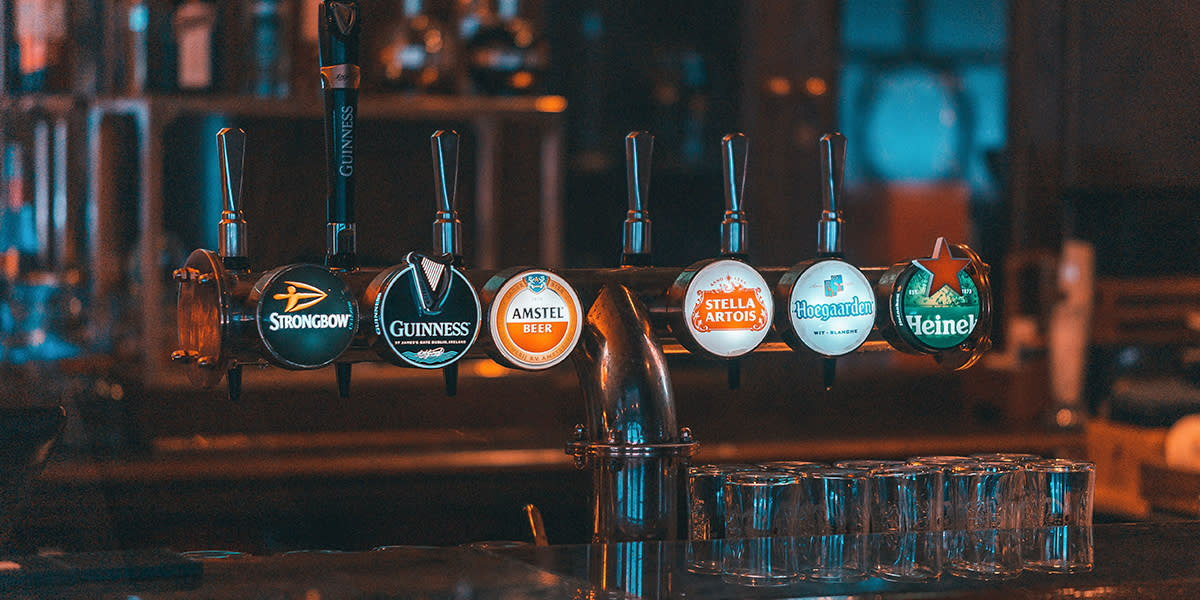
History of beer in Belgium
The history of Belgian beer dates back centuries, long before the country gained independence. Its brewing landscape evolved across rural farmland, small villages and monasteries at a time when people couldn’t drink water because of its poor quality.
The first recorded sale occurred on the 1st of June 1861, which marked the beginning of beer-making methods as we know them today.
The two most popular beers are Trappist and Abbey. Production of the first Trappist beer (Westmalle) began in 1836 and was exclusively for monks. It’s famous for its sweet taste. Abbey beers are also monastic and can be produced by a commercial brewery in agreement with an existing monastery.
Presentation is crucial in the beer-making industry. Glassware is the go-to in almost every bar, partly for marketing and taste purposes. A lot goes into deciding which glasses to use, including alcohol level, desired serving temperature, aromatic qualities and handling dynamics.

The different types of beer in Belgium
Whether you prefer it bitter and robust, or fruity and sweet, Belgium’s beer landscape knows no bounds. We’ve gathered some of the country’s most famous beer types, with something to suit all tastes.
Monastic-style beer
As mentioned, monastic-style beers were the first to be produced and are still a fan-favourite today. There are six Trappist breweries in Belgium which produce different ales, from Belgian pale ales to Tripels and Quadrupels. These paved the way for Abbey beers, bottled-conditioned ales with strong yeast profiles. The most common Abbey beers are Dubbels and Tripels, where alcohol levels are between 6% and 9%.
Hoppy, dry and refreshing, saisons are farmhouse ales, highly carbonated with strong pepper and citrus notes. They are produced in Wallonia, in southern Belgium, and were initially consumed by farmers in winter. These beers have an alcohol level between 5 and 6.5% and include Saison Dupont, Saison de Dottignies and St-Feuillien Saison.
Witbier (white beer) is an unfiltered, hazy beer brewed using 30 to 60% raw wheat. It’s delicate and light, with dried orange peel and coriander to add a refreshing note. This beer is perfect for summer and includes Hoegaarden, St. Bernardus Wit and Vedett Extra White.
Blonde beer
Characterised by high carbonation and rich layers of foam, blonde beers are a go-to for many beer enthusiasts. These ales have a subtle spicey citrus taste complemented by a bitter aftertaste. They include Ename Blond, Omer and Duvel.
Spéciale Belge
Spéciale Belge beers were created in response to German lagers and English ales of the early 1900s. These traditional Belgian beers are malty, gentle and have a nutty flavour. They are balanced and light and include Bolleke De Koninck, Palm, ‘Spécial’ De Ryck and Tonneke.
Lambic beer
Lambic is a flat wheat beer fermented with airborne yeast and aged in wooden barrels. When blended into Geuze – a type of lambic beer – it becomes refreshing, highly carbonated and acquires an oaky taste. Brewers combine these beers with raspberries, cherries and apricots. The most common lambic beers are 3 Fonteinen, Cantillon and Oud Beersel.
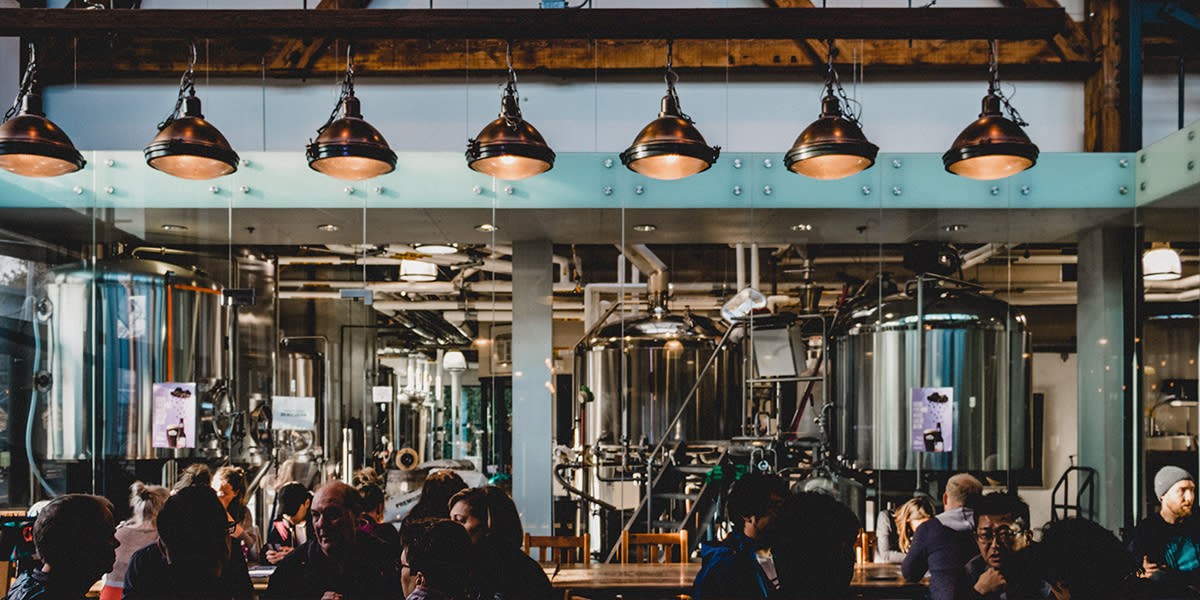
Belgian beer tastings and tours
What better way to learn about Belgian beers than to sample them at a local brewery? Here are some of Belgium’s best beer tasting tours .
- Cantillon Brewery : This family-run brewery in Anderlecht has operated since 1900 and is famous for its unique lambic beers. Guided tours take place between 10:00 and 16:00 and last 45 minutes. Tasting cost 7€.
- De Halve Maan : Bruges is Belgium’s crowning jewel, and De Halve Maan is one of its highlights. This brewery is home to the world’s first beer pipeline, connecting the venue to a bottling plant. The 45-minute tour occurs daily between 11:00 and 16:00. It ends with a tasting of the Brugse Zot Blond beer.
- De Koninck : Recently renovated to include a visitor’s centre, De Koninck is Antwerp’s oldest brewery. It’s the birthplace of Bolleke, a malty pale ale with notes of caramel and cinnamon. Watch the magic happen on a 90-minute tour and treat yourself to a tasting.
- Het Anker : This is one of Belgium’s oldest breweries and has operated inside a convent since 1471. The tour lasts around 2 hours, including a tasting, and ends on the beautiful rooftop terrace.
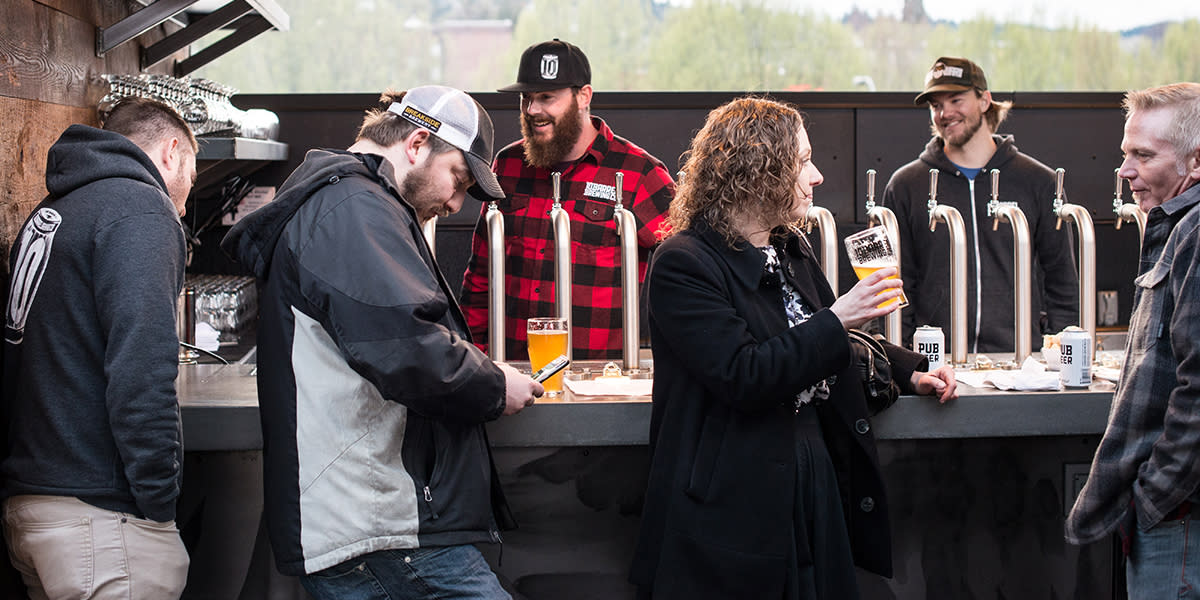
Belgian beer festivals
If you’re lucky enough to travel to Belgium for one of its beer festivals, you’re in for a treat. Live music performances, dance and more beer await you. Here’s where and when they take place.
- Belgian Beer Weekend : Taking place during the first week of September, the Belgian Beer Weekend represents Belgian beer culture at its finest. It’s held in Brussels’ stunning Grand-Place, boasting over 50 regional stands and national brewers around its perimeter.
- Zythos Beer Festival : Welcome to the epitome of a Belgian beer festival. Zythos Beer Festival used to take place in Saint-Nicolas but became so popular that it was moved to Leuven in 2004. Today, it hosts over 80 stands.
- BAB Bruges Beer Festival : BAB Bruges Beer Festival is held in April and features over 450 beers. All Trappist beers are available, including the traditional Westvleteren.
- Brassigaume : This festival takes place over two days in the first half of October, with 25 master brewers showcasing their best creations.
Our routes to Belgium
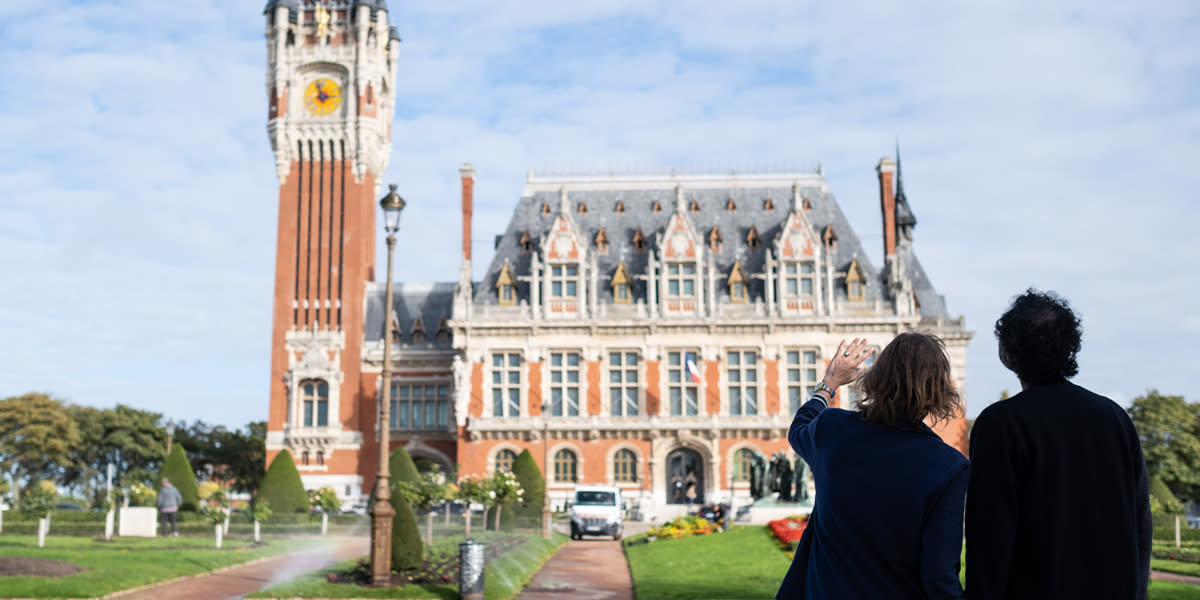
Dover-Calais Ferry Crossings
Our fastest and most popular ferry crossing, our Dover to Calais route takes only 100 minutes, allowing you to explore Europe at your leisure.
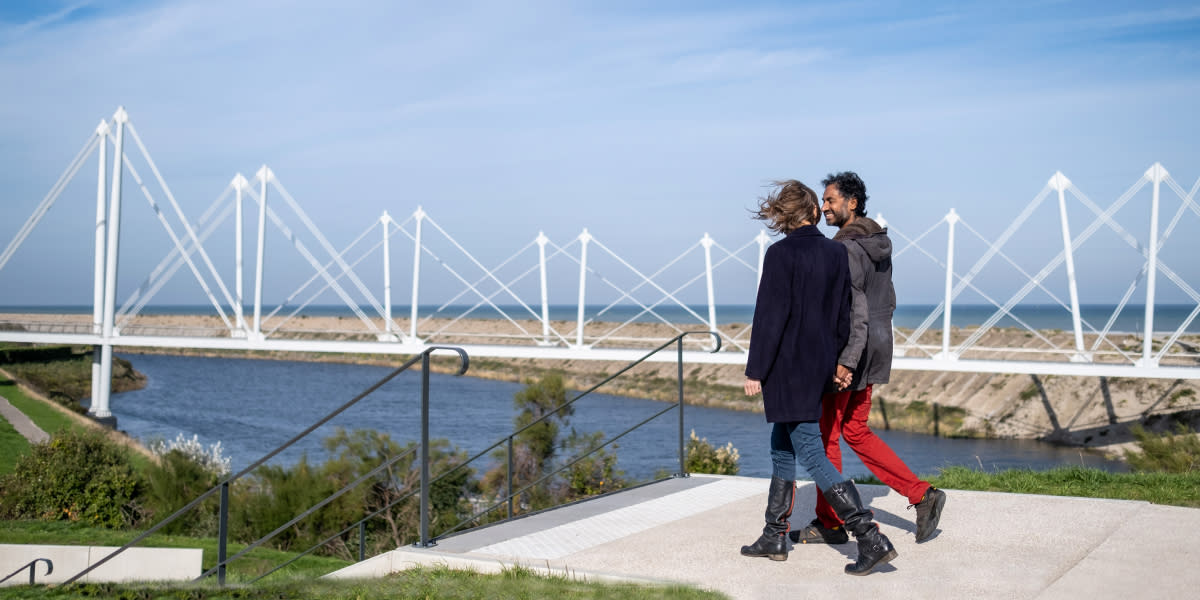
Dover-Dunkirk Ferry Crossings
Our short, convenient sailings from Dover to Dunkirk are the perfect way to start a trip to Europe.
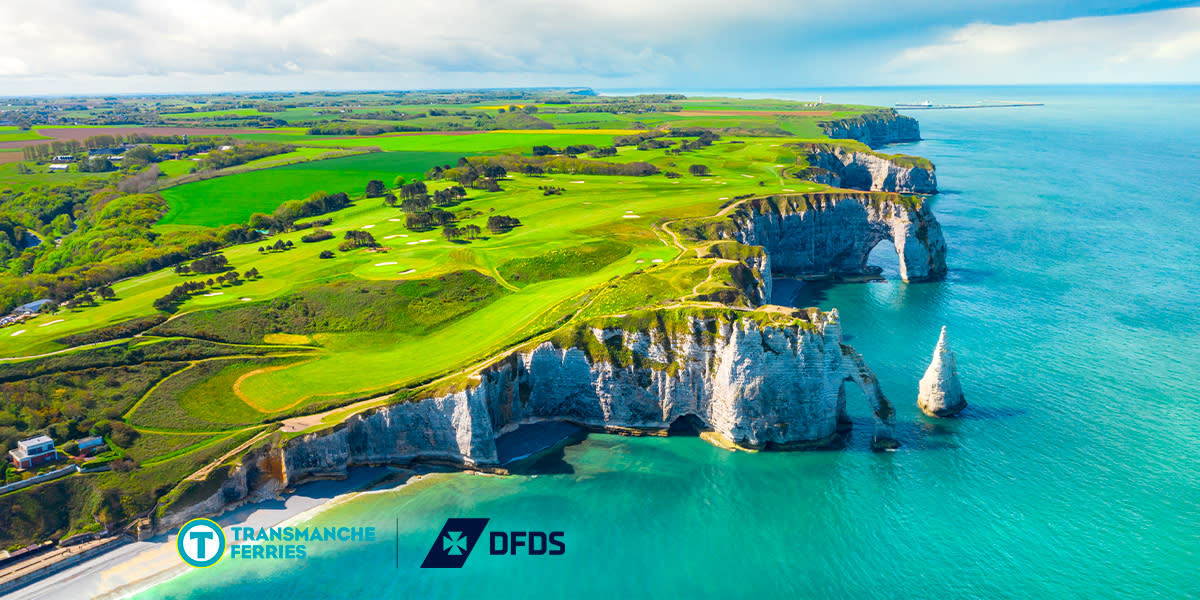
Newhaven-Dieppe Ferry Crossings
Head across the Channel on our Newhaven to Dieppe route and in just 4 hours you can sail in comfort from the south of England to France's beautiful Normandy coast.
Belgium travel guides
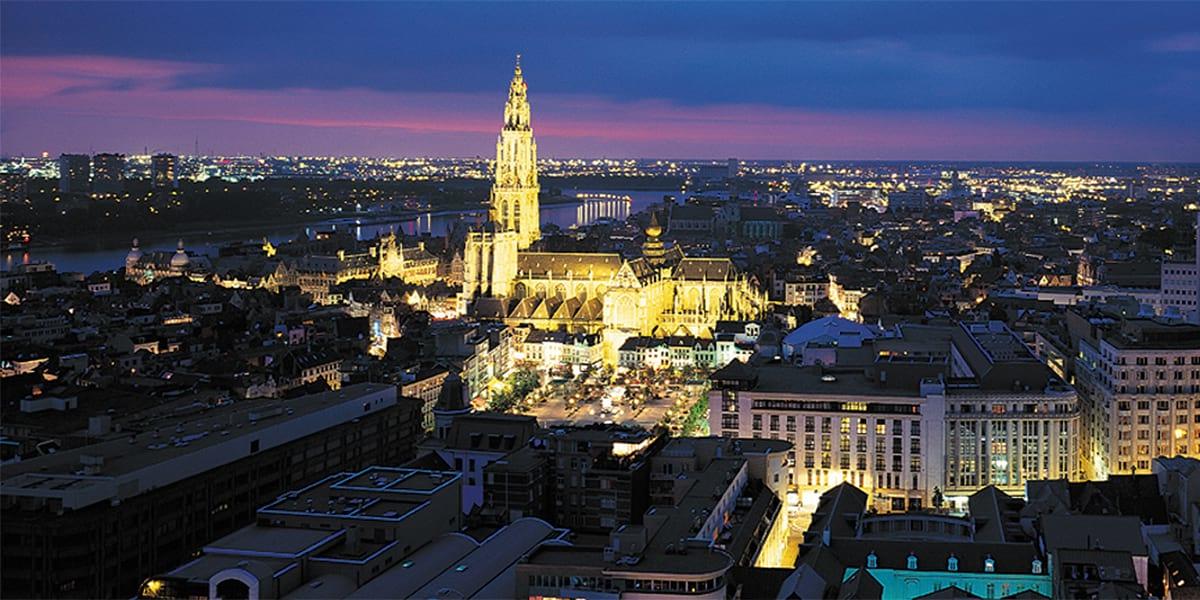
Have a fantastic city break in Belgium's second city.
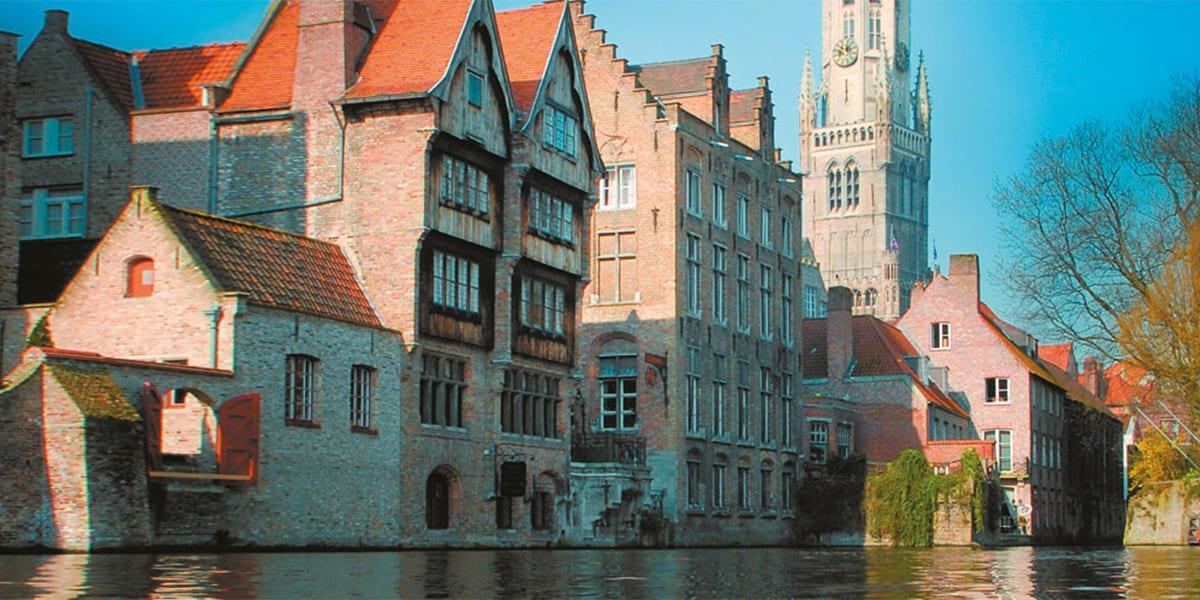
Visit Bruges, a canal-laden city and home to the Guild of Chocolatiers.
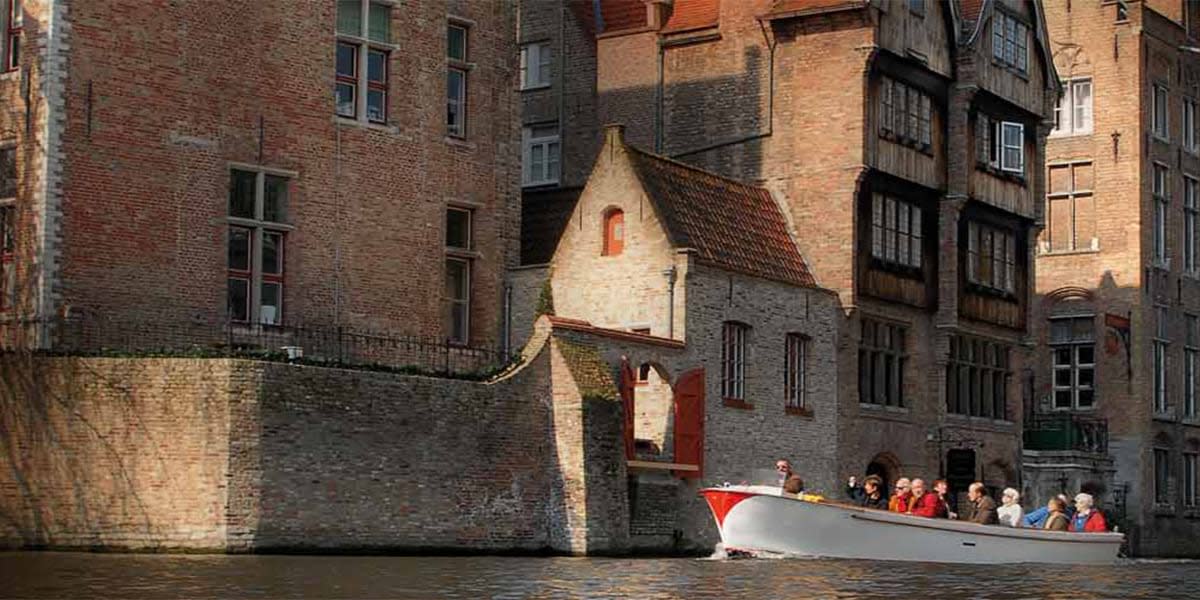
Visit this relaxed harbour town with rich war history and beautiful beach.

The Bruges Beer Guide: Discovering The City’s Best Beers, Bars + Breweries
Hunting out the best beer bars in Bruges? Don’t miss this Bruges beer guide – complete with the best bars and brewery tours and some handy tips for navigating the complex world of Belgian beers.
Beer is synonymous with Bruges. Turn every corner in this fairytale city and you’re confronted with the evidence – a beer bar here, a beer bar there, a brewery – not to mention an annual beer festival each February that sees Bruges showing off the very best of its beer culture.
The first time I visited Bruges, I didn’t quite expect the vast about of choice when it came to beer tastings, tours and bars. That’s not to say that I didn’t embrace it with gusto: I set out to discover as much as I could about Brugge’s beer scene – a passion that has lasted through all my subsequent visits.
Setting out to explore the beer in Bruges is a pleasure any way you go about it – but this is also a place where a little bit of knowledge can go a long way.
Want to know the difference between a farmhouse ale and a Dubbel? What about Kwak? Read ahead my friends.
PS: Also looking for more Bruges inspiration? Check out my Bruges City Guide – The Best Things to do and Places to See in the City.
Belgian Beer 101: Handy Facts to Know Before Taking on Bruges Beer Scene
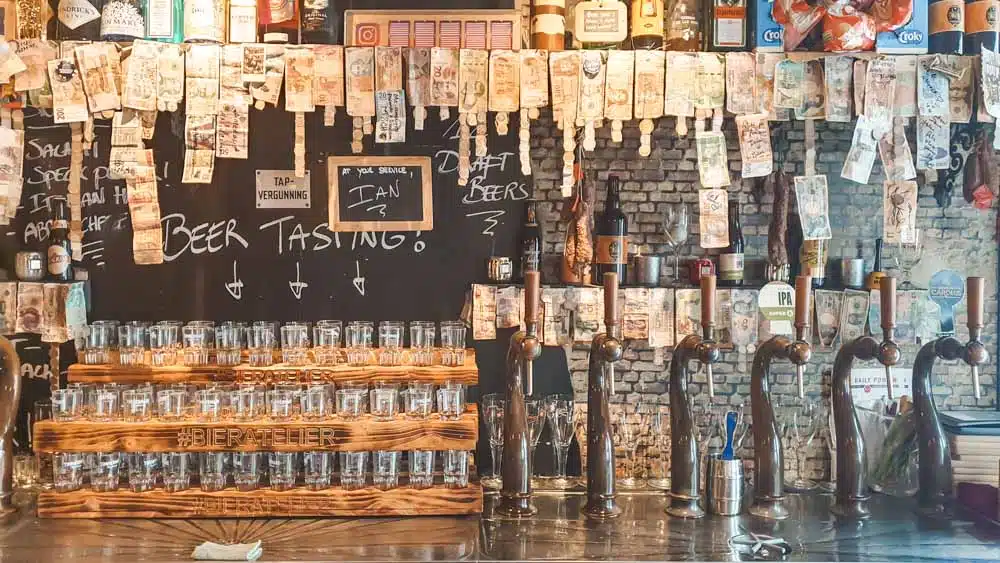
Right, before we set off to drink all of the ridiculously good beer we can lay our hands on in Brugge’s bars and breweries, here’s a quick rundown of some of the common terms you’ll come across and what they mean.
Trappist Ales
There are plenty of trappist beers in Bruges – but what are they? Trappist ales are tightly regulated and have to follow set criteria to call themselves a trappist ale.
The first, and the biggest one is that the beer has to be fermented and bottle conditioned within the walls of a monastery by, or under the supervision of, the monks.
The second is that the brewery can’t be run for profit – but only to support the monastery and its work in society.
Abbey Beers
Abbey beers by contrast, are ales that have been brewed in the style of traditional Trappist ales but that do not fulfil the requirements to label themselves as a Trappist ale.
What’s the Difference Between Dubbel, Tripel and Quadrupel Beers?
As soon as you start drinking Belgian beers, you’ll notice that many beers are marked as Dubbel, Tripel or Quadrupel – but what does that actually mean?
Common sense would tell you that it refers solely to the strength of the beer – so you’d expect a Quadrupel to be double the strength of a Dubbel. Guess what? Common sense is wrong. Well, kind of. I’ll walk you through the differences.
Dubbel is a style of beer, generally at ABV 6% to 8.5%, dark in colour and toasted, malty and spiced tasting notes. They’re yeasty and complex – the kind of beers you either love or hate.
A tripel by contrast should be lighter – golden in colour, clouded in appearance with hoppier notes and a smoother taste.
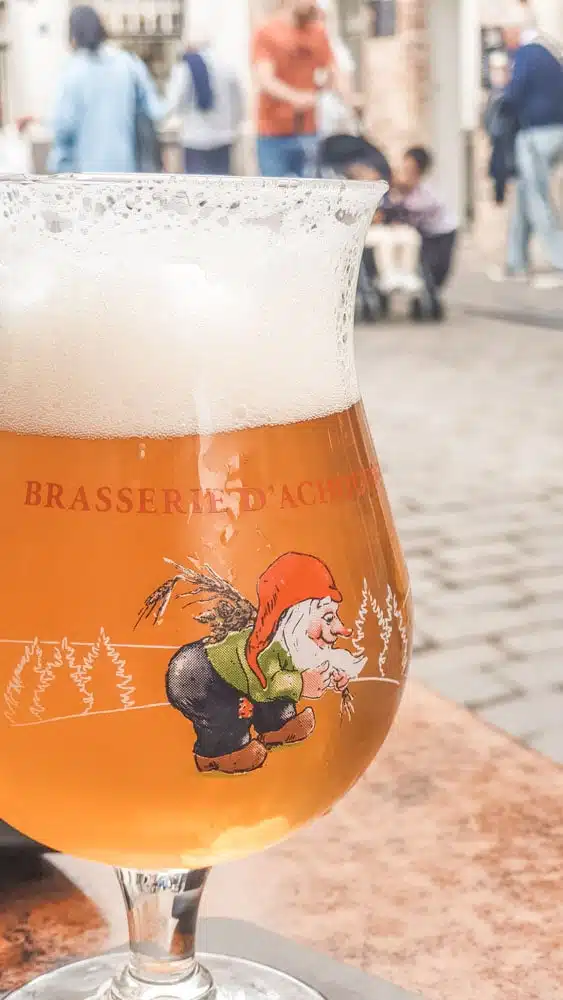
They are stronger but the malt used is Pilsner, so they have a completely different flavour profile to Dubbels, with citrussy aromas. Strength-wise, they can knock between ABV 8.5% to over 10% – let’s just say that you will know about it if you knock too many of them back in one go.
So what about the quadrupel then?
Well, unlike the dubbels and the tripels, which have been traditionally brewed by monks for centuries, the quadrupel is relatively recent. In fact it’s not even Belgian. I know, I’m clutching my pearls and simultaneously questioning everything I know about life.
The quadrupel aims to unite the flavours and tasting notes of dubbels with elements of the tripel. They are strong though – pretty much always punching in at ABVs of over 10%.
White beers are meant to be refreshing – served chilled, with tasting notes of christmas spice emphasised by the citrus peel served with the drink.
Lambic Beers
Lambic beers are another beer you don’t come across outside of the world of Belgian beer. They use spontaneous fermentation thanks to unique microorganisms found in Belgium’s Senne Valley – breweries leave them in large open vats to develop their unmistakable tang.
Sharp and sour, they’re matured for long periods of time to soften the taste and blended with fruit (often cherries), hence why they frequently are described as having a sour cherry taste.
In fact, Flanders has always excelled at making sour ales – not everyone loves them but their sharp fruity taste are unlike beers brewed elsewhere in the world. Styles include Flanders Red, Guezes, Brown ales and the aforementioned Lambics.
Brewery Tours in Bruges
If you’re wondering where to drink beer in Bruges, you can hardly do better than going to an actual brewery to kick things off.
De Halve Maan
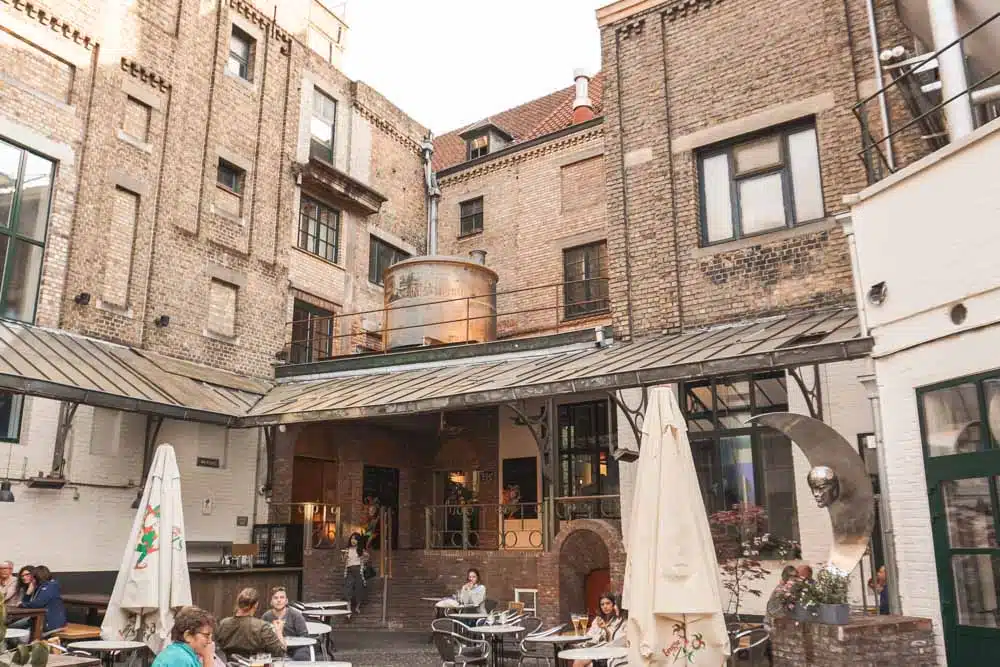
De Halve Maan (The Half Man) is the most famous Bruges brewery tour.
The frequent tours are held in several languages – talking you through the history of the brewery and the brewing process for their unique beers.
The guides are funny, personable and hugely informative, leading you through the warren of rooms and passages that make up the brewery. They’re relatively comprehensive (45 minutes) and include a sampling of the beers too.
De Halve Maan is a popular Brugge brewery option, so I’d recommend taking the first tour of the day (if you can stomach it – I’m sure that you can) or going as late as possible when all the day-trippers have set off home.
Incidentally, when people say that beer flows through Bruges’ streets, they’re not exaggerating. The Half Man Brewery recently installed a beer pipe to transport beer from the brewery to its bottling plant on the outskirts of the city.
Bourgogne des Flandres
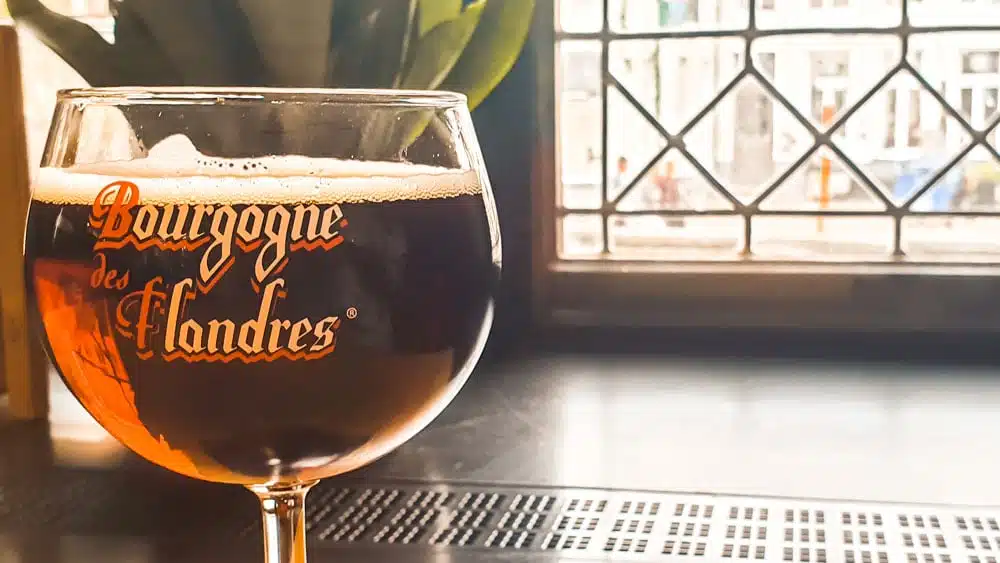
The historic beer of Bourgogne des Flandres recently moved back into the city to a new microbrewery in central Bruges and with it came a cool little Bruges brewery tour.
The tour itself takes you tells you about the hops and brewing process that results in Bourgogne des Flandres’ traditional rounded dark and fruity beer – you can even learn how to tap the beer digitally too. Once you’re done, round it off with a free glass of the good stuff in their bar.
The brewery tours are interesting and the beers are tasty but my personal experience was kind of marred by the rude service at the bar. The beer was tasty though.
Want more? Book onto a private Bruges Beer Brewery tour visiting the city’s breweries with a local expert.
The Best Beer Bars in Bruges
’t brugs beertje.
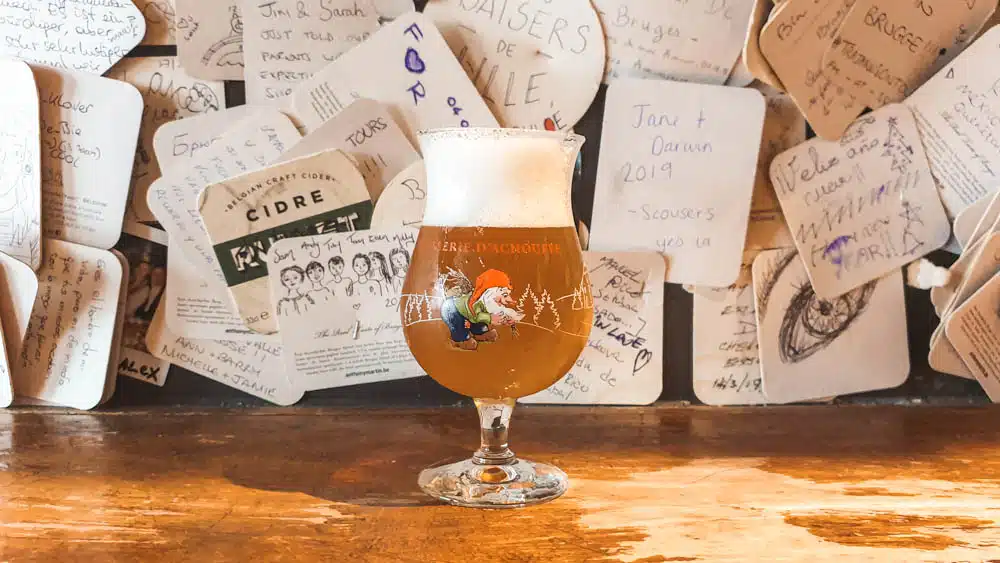
Is ’t Brugs Beertje the best bar in Bruges? According to many, the answer is yes. On the face of it, it’s nothing particularly special – a small pub on a cobbled street on one of the quieter roads of Bruges.
Go inside and you start to get an idea of what is so special about it. Every wall, every surface is covered in beer-related paraphernalia, scribbled on by the thousands of punters who’ve patronised the bar at some point or another.
That’s before you even get to the beer – with over 300 Belgian Beers to choose from, there’s guaranteed to be something to suit your taste. It’s a real highlight on any beer tasting in Bruges odyssey.
The Beer Wall at 2Be
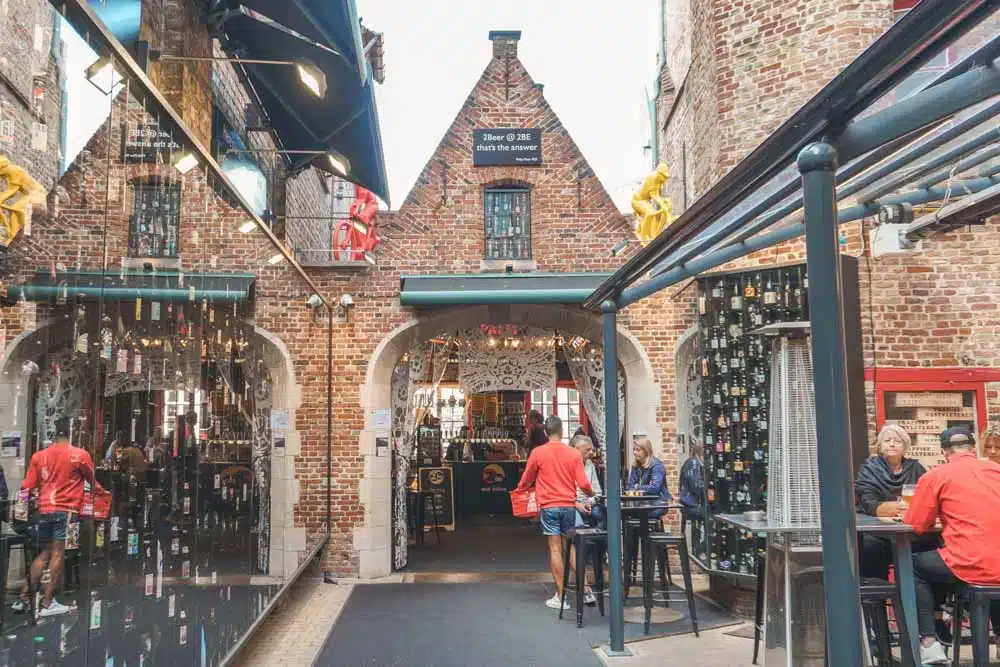
Chances are you’ve already seen or heard about the infamous Bruges beer wall at 2be bar. Enter the cavernous doorway to be confronted with a huge array of beer bottles (over 1250) and glasses all stacked up row by row on a long wall.
Don’t just go and gawp though, as you’d expect, the bar serves an extensive array of beers and the spacious beer garden is smack-bang canalside. Great beer and gorgeous views – I won’t blame you if you don’t want to leave.
Browhuis Corsendonk
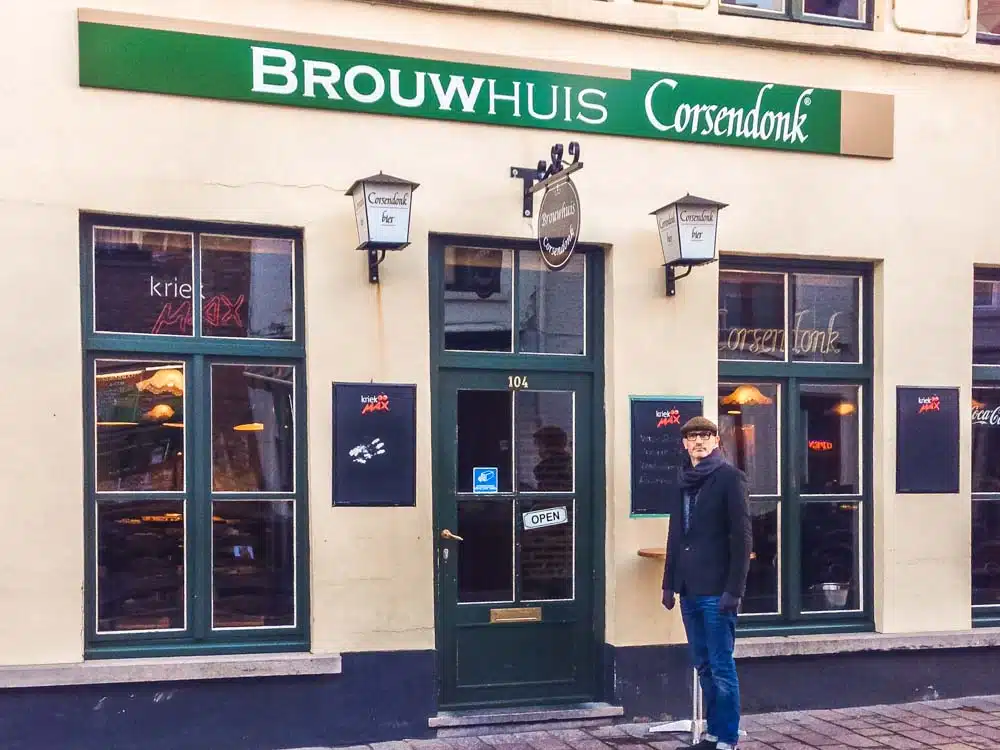
This small gem of a beer bar in Bruges, completely off the tourist track, may sport some rather odd kitsch decorations (on my last visit, there were puppet style witches dotted about the place) – but the beer is stellar.
Affiliated with the brewery of the same name – this is the place to go and drink Corsendonk.
Try the Corsendonk Pater – a dark brown ale with a creamy head and notes of dried fruit. If that’s not your style, the Corsendonk Angus is a light golden ale with a cidery aroma and a crisp finish.
Langestraat 104, 8000 Brugge, Belgium
Le Trappiste
Another Bruges beer bar favourite, Le Trappiste sits in a rather gloomy cellar – pouring out their extensive range of Belgian Beers (including more than a few rare finds). The candlelit bar makes an atmospheric setting for sipping on your beer and it’s surprisingly reasonable given its popularity.
Bierbrasserie Cambrinus
It’s not flash and it’s not stylish but Bierbrasserie Cambrinus draws in the crowds. Why? Well this pub in Bruges just so happens to serve very good beer alongside very good food. The beer list is large enough that it’s a bit daunting but is great value – if you really struggle, the staff are always on hand to make a few recommendations.
It might be difficult to find (you’ll have to keep your eyes firmly on the map to get it right) but De Garre is another Bruges beer gem. The Tripel De Garre is the biggest draw here – weighing in at a whopping 11% this sweet but strong beer packs such a punch that drinkers are only allowed to order three in any visit.
‘t Poatersgat
‘t Poatersgat has a slightly too-cool-for-school vibe – but get past that and you will discover a bar in Bruges with a large range of speciality beers in a pleasant space.
Must-Try Brugge Beer Experiences
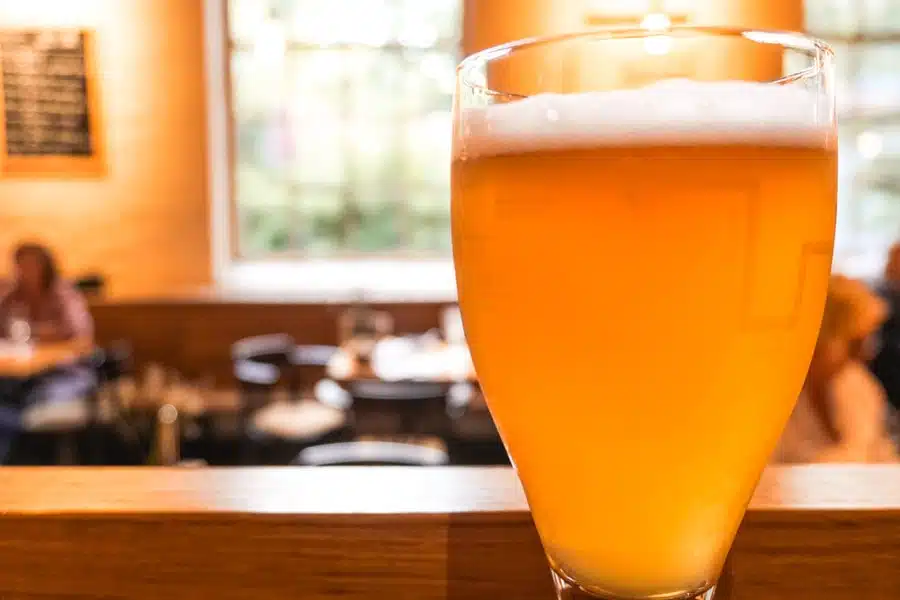
Bruges Beer Experience
Want to really get into the nitty gritty of Belgian beer? Head to the Bruges Beer Museum.
Set off on one of their interactive self-guided museum tours to learn about the history of beer in Bruges – there’s a LOT of information on the first floor – so much so that you could spend hours walking around before you even head up to the second.
The second floor is a more interactive, focused on the equipment, ingredients and process used to make beer. Once you’re finished you get to put your knowledge to the test by taking your pick of draft beers (some of which you can only get in the museum itself) to round off the experience.
This laid-back museum also doubles up as a cool little beer drinking spot as you can opt to forgo the tour and simply sample their extensive collection of beers.
The Bottle Shop
With all this beer drinking, you’re pretty much guaranteed to want to bring a few Belgian beers home with you. The shelves speak for themselves – over 600 beers alongside their accompanying glasses so you can shop your favourites and savour them at home.
Where to Drink Beer in Bruges: Map
Love This? Save and Share on Pinterest
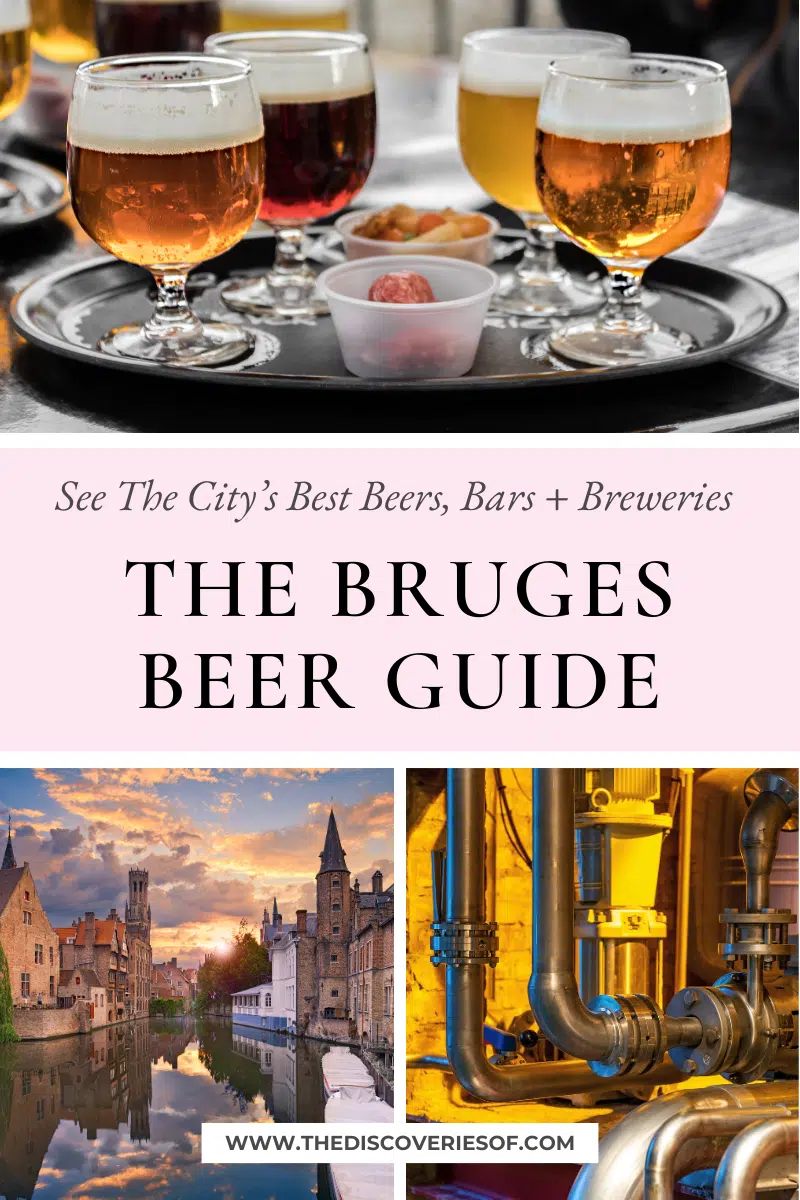
Read More Bruges and Belgium Travel Guides
- Cool Things to do in Bruges – What to See + What to Skip
- Brugge Weekend Break Itinerary
- Day Trip to Bruges – How to Make the Most of Your Trip
- Where to Stay in Bruges
- 10 Stylish Bruges Airbnbs for Your Trip
- Bruges Tourist Map – Simply Save and Go
- Europe Packing List
- Antwerp: Cool Places to Visit on your Belgian City Break
I’m Julianna Barnaby - a professional travel writer and geek extraordinaire. I started The Discoveries Of to help you to discover the best of new destinations from around the world.
Discovering new places is a thrill - whether it’s close to home, a new country or continent, I write to help you explore more and explore differently.
Related Posts
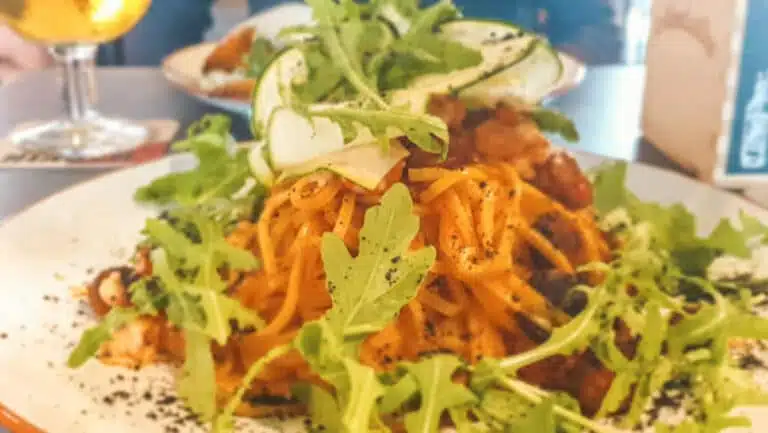
The Best Places to Eat in Bruges: Restaurants + Cafes You Shouldn’t Miss
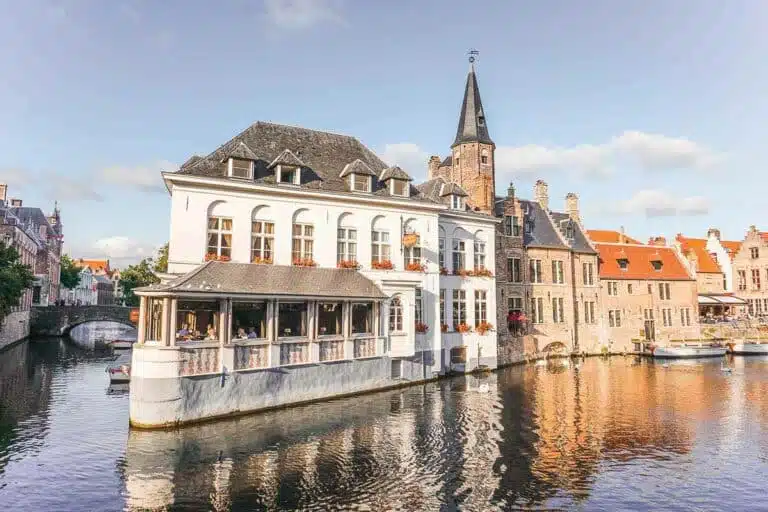
The Best Things to Do in Belgium: 15 Epic Belgium Attractions
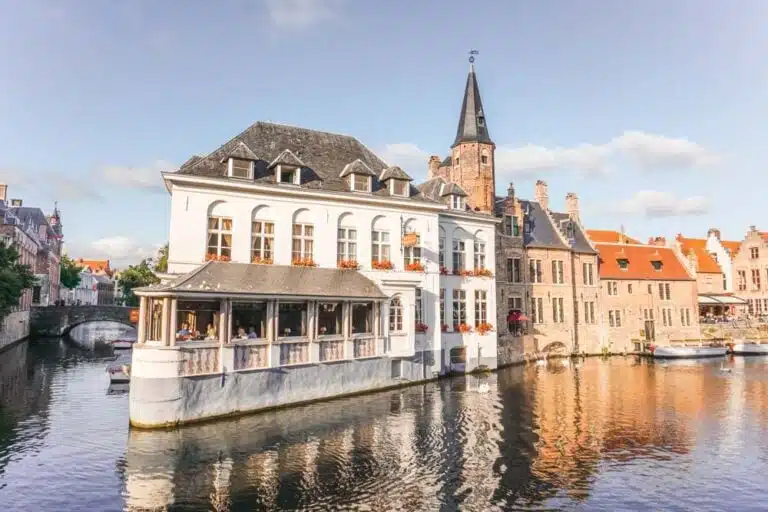
Bruges Map: A Handy Tourist Map of Brugge’s Must-See Attractions
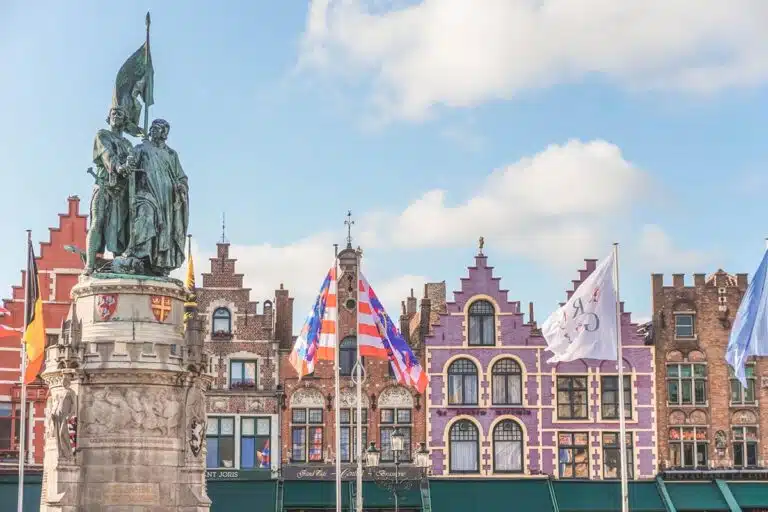
The 32 Best Things to do in Bruges
Leave a reply cancel reply.
Your email address will not be published. Required fields are marked *

Follow me on Instagram for travel inspiration, tips, and guides.

37 Belgian Beers Not to Miss | Recommended by Beer Experts

B elgian beers. What’s all the fuss about? After all, Belgium is just slightly bigger in size than Wales with a population no bigger than that of Cuba.
And their beer? How good could it be? Have you seen what’s happening in America, Denmark, Germany and the UK?
There’s not even that much of it. Belgian beers account for only 1% of all beer produced in the world. There are more breweries in the U.S. state of Oregon than there are in the whole of Belgium.
And most of what they do make, they don’t even bother to drink themselves, exporting 60% of their beer to other countries.
It’s not like they drink a lot of beer. Belgian beer consumers rank only 15th in Europe when it comes to beer consumption per capita.
So what’s the big deal with Belgian beer?
Belgium has the greatest diversity of original beer styles on the planet. It has has an unrivalled brewing heritage which is deeply embedded across its towns and villages. Belgium’s contemporary brewers are showing off their talent by marrying innovation with respect for tradition. Many would argue that it’s the best country in the world for beer.
THE BELGIAN BEERS
So which Belgian beers are worth checking out? There are plenty of lists of Belgian beers and Belgian beer brands in magazines compiled by people who know a thing or two about beer and there are lots of online rating sites that rank Belgian beers.
But what about real life recommendations? Would you get a different answer if you asked someone who you respected to suggest a Belgian beer to you, regardless of whether it was a Belgian beer brand from a multinational conglomerate, a family brewery or a “craft” brewery; whether it was new on the market or an established Belgian beer brand; whether it was contract or gypsy brewed? Wouldn’t that be a list of recommendations worth seeing?
So that’s what we did . We contacted a wide range of beer experts—sommeliers and cicerones, brewers and judges, bloggers and journalists—to compile a list of Belgian beer recommendations.
We asked them all one question: “Which one Belgian beer would you recommend people try?”
We asked as varied a list of contributors as possible to ensure the suggestions came from both newcomers and experienced beer people; from both men and women; from both contemporary beer geeks and voices from a more traditional side of the industry; and from a mix of both international experts and Belgians.
The recommendations of Belgian beer brands below are quite fascinating: a plethora of the usual suspects thrown in with a lot of solid performers as well as some obscure gems. I believe the list does an excellent job of showcasing the full spectrum of Belgium’s incredible brewing culture.
Here’s what the experts said (in no particular order). The 37 amazing Belgian beers you should try:
1. RODENBACH GRAND CRU (6% ABV) [BROUWERIJ RODENBACH / PALM]
“To understand Rodenbach Grand Cru, discard what you know of beer. Dismiss that it should be blonde, or have a head or not have ‘turned’.This 6% ABV brown ale, aged for two years in massive, pedestalled, oak tuns 200 to a cave, before blending to unmistakable familiarity, goes beyond tart into sour. It sits precariously at pH 3.2 like Sauvignon Blanc, yet draws more of a Cabernet Sauvignon crowd.Bottled bright to retain the delicate balance of grain and caramel, burn and edge, its uniquely ancient taste resonates across centuries of beer-making, outgunning the dangerous here-and-now of the craft brewer. Sharp.”
Tim Webb is a beer writer and publisher specialising in writing about Belgian beers. He is co-author with Stephen Beaumont of The World Atlas of Beer and Pocket Beer Book; and with Joe Stange of Good Beer Guide Belgium . Tim is Managing Editor at Cogan & Mater Ltd & www.booksaboutbeer.com .
Find out more about this beer: https://www.rodenbach.be/
2. LOU PEPE GUEUZE (5% ABV) [BRASSERIE CANTILLON]
“Cantillon Lou Pepe Gueuze is the beer that really turned me on to lambics and sour beers. It opened my eyes to how great these brews could be”, a friend of mine in his thirties told me about a year ago.
He was right, and was certainly not the first drinker to have an epiphany while drinking this brew. Lou Pepe Gueuze is a blend of two-year old lambics that are often aged in wooden barrels that used to hold French wine the last time they were filled.
The Lou Pepe Gueuze is one of the best of the Brasserie Cantillon range, and should be sought out by any lover of lambic brews or, for lack of a better word, sour beers.
Its soft, mellow tartness and mild horse blanket funk will make you smile and desire another glass. May there be more gueuze left in your bottle when that happens.”
Charles D. “Chuck” Cook is a writer and photographer who has travelled to Belgium 29 times since 1994 to explore, experience, and enjoy Belgian beers and Belgium’s beer culture. He has visited over 150 breweries and 350 beer cafes in “The Beer Country.” Chuck has written for USA Today, All About Beer Magazine, Belgian Beer & Food Magazine, Celebrator Beer News, and many other publications.
Find out more about this beer: https://www.cantillon.be/
3. ARDENNE SAISON (5.5% ABV) [BRASSERIE DE BASTOGNE]
“Historically, saisons were homebrews for a practical purpose. Sometimes they would have been weird in the not-nice way. (In fact, there are some today that are like that.) Other times they would have been beautifully refined. Luckily we have brewers today who know what to do with half-wild yeast, or else do an excellent job of convincing us that they know.
This one is reasonable at 5.5% strength, lively, dry and bitter enough. But the aroma is the thing, dry-hopped and re-fermented with Brettanomyces. I like to close my eyes and puzzle it out. Where does the floral grapefruit end? Where do the musty lemons begin?”
Joe Stange is a freelance journalist, co-author of Good Beer Guide Belgium (with Tim Webb), and author of the upcoming Around Brussels in 80 Beers, second edition. He blogs at www.thirstypilgrim.com , often about Belgian beers, and tweets @Thirsty_Pilgrim .
Find out more about this beer: https://brasseriedebastogne.wordpress.com/
4. AVRIL (3.5% ABV) [BRASSERIE DUPONT]
“Crisp, refreshing and super low in alcohol—one can only presume that Dupont’s Avril is the closest thing to the original farmhouse ales, which were typically brewed as a hydration alternative to water for farmhands. Avril is the perfect all-day sipping beer for long, hot summer days.”
Known amongst the craft beer world as The Beer Wench , Ashley V Routson is a craft beer evangelist and social media maven on a mission to advance the craft beer industry through education, inspiration, and advocacy. Ashley is a freelance beer writer and soon-to-be published author who has written for or been featured on NPR, DRAFT magazine, Beer Advocate, and Time.com, among others. Ashley has been a featured speaker at the Craft Brewers Conference, The Great American Beer Festival, and the Beer Bloggers Conference.
Find out more about this beer: https://www.brasserie-dupont.com/
5. ST. FEUILLIEN BLONDE (7.5% ABV): [BRASSERIE ST. FEUILLIEN]
“Belgium is awash in blonde ales. Sadly, many of them are rather one-dimensional, lacking depth and mystery. The St. Feuillien Blonde reflects the joyfully understated gastronomy of its Wallonian homeland. With an enchanting, not-quite-earthy yeast character, a whiff of spicy hops and a tightrope balance between crisp and malty, this beer reminds us, at the most basic level what Belgian beers are all about.”
Randy Mosher is a writer, creative consultant, designer and educator specialising in beer. Author of five beer-related books including Tasting Beer, he also teaches at the Siebel Institute. He is an active partner in two Chicago-area breweries: 5 Rabbit Cerveceria and Forbidden Root Botanic Beers.
Find out more about this beer: https://www.st-feuillien.com/
6. BOURGOGNE DES FLANDRES (5% ABV) [TIMMERMANS / JOHN MARTIN]
“Wonderfully rich and complex beer, a blend of dark ale and Timmermans’ lambic, with an acidic note from the lambic cutting the dark roasted grains and spicy hops of the ale. The beer will be restored to its original home in Bruges in 2015 when a new brewery opens there.”
Roger Protz is one of the world’s leading beer writers, historians, lecturers and tasters. He is the author of more than 20 books on the subject, including 300 Beers to Try Before You Die, one of the biggest-selling books on the subject. He was named Glenfiddich Drink Writer of the Year in 1997 and 2004 and in 2003 was presented with the first-ever Lifetime Achievement Award from the British Guild of Beer Writers. He has won two Gold and six Silver Tankard Awards from the guild and in 2013 won Gold as Best Writer in Pub and Beer Press. He has won 13 awards from the North American Guild of Beer Writers.
Find out more about this beer: https://www.bourgognedesflandres.be/
7. ZINNEBIR (6% ABV) [BRASSERIE DE LA SENNE]
“It was very hard to select my favourite beer among the fantastic Belgian beers. If you choose, you always lose. So my advice is to try as many styles and beers as possible. But anyway, I have to stick to the rules. So I’m going for a Zinnebir from Brasserie De La Senne. The brewer’s philosophy is to brew beers with lots of flavours, but with as little alcohol as possible. My kind of beers. Zinnebir has a cloudy orange colour and a great nose of honey, pollen, and lemon zest, and light exotic fruits. The taste is malty, with a fine bitterness and a long aftertaste. Top beer.”
Luc De Raedemaeker is the director of the Brussels Beer Challenge , chief editor of Bier Grand Cru and the Beer Link (China) and Doemens Diplom-Biersommelier. He sees it as his mission to give Belgian beers the recognition they deserve.
Find out more about this beer: https://brasseriedelasenne.be/
8. GOUDENBAND (8% ABV) [LIEFMANS / MOORTGAT]
“Liefmans Goudenband is a classic Flemish sour brown of 8% ABV. The beer is the masterpiece of Rosa Merckx, the first female brewmaster of Belgium. After the second world war she started as a secretary at the Liefmans brewery and worked herself up to the position of brewer. Now ninety years old, she still lives next to the brewery, where she checks the beer at least once a week.
The wort is brewed at Duvel-Moortgat but ferments in open tanks at their historical brew site in Oudenaarde. There, the lactic acid bacteria form the typical sour taste and character during a long maturation of up to 8 months.
It’s a complex but balanced beer, the refined sourness countered with some caramel sweetness. In the flavour you also get hints of raisins and red apples. Sour meets sweet at a sublime level.
It’s a perfect provision beer that works brilliantly with blue cheese.”
Sofie Vanrafelghem is a Zythologist, beer author of 3 beer books, Founder of ‘Women & Beer’, Belgian Beers columnist at De Standaard, International beer sommelier, Editorial staff member of Zythos, Teacher of general beer knowledge at CVO Panta Rhei, Editor at Hopper Magazine, and Master beer sommelier at Café Belge (The Ritz-Carlton, Dubai, UAE).
Find out more about this beer: https://www.liefmans.be/en
9. WESTMALLE TRIPEL (9.5% ABV) [TRAPPIST ABBEY OF WESTMALLE]
“In 1934, as they finished their – at that time – new brewery, the Westmalle Abbey launched a ‘superbeer’, a blond top-fermented beer of 9.5 % ABV which would soon be renamed Westmalle Tripel. However, it wasn’t until 1956 that brother Thomas introduced the delicate hoppiness for which this beer is known and equipped it with its complex character.
Classic Belgian beers are very balanced and complex, and Westmalle Tripel is a perfect example of this. In aroma it is fruity (overripe banana) with a fine hop bitterness and soft maltiness fighting for attention.
The flavour is just as complex: the beer has a creamy mouthfeel and delicate sweetness without being sticky as well as being fruity, bitter and orangey with a long, dry and pleasantly bitter aftertaste. Westmalle Tripel is the mother of all tripels – a world classic!”
Jef Van Den Steen is one of the most experienced beer connoisseurs in Belgium as well as a brewer at Brouwerij De Glazen Toren . He writes for beer magazines such as De Zytholoog, Bier Passie Magazine and Smaak and has authored books including “Lambi(e)k en Geuze”, “Trappist. Het Bier en de Monniken”, “Abdijbieren, Geestrijk Erfgoed”, “Geuze en Kriek, de Champagne onder de Bieren” and ”De Smaak van Bier”.
Find out more about this beer: https://www.trappistwestmalle.be/
10. 1894 OAK & HOPS (8% ABV) [BROUWERIJ DE BRABANDERE]
“This beer absolutely blew me away when I first tried it last year. De Brabandere is one of Belgium’s largest independent family breweries and a specialist in (22,000 liter) foeder aged and blended beers. 1894’s Champagne-like carbonation, dryness and delicate sour-oakiness are truly unique.
By blending 20% aged with fresh beer and using 3 classic European aroma hops (2 grown in Belgium) it remains despite its 38 IBUs very fruity, peppery and flowery. Oak is subdued and the yeasts it contains provide flavours reminiscent of grapefruit, nectarines and pineapple. This beer is living proof that the notion sour and bitter can’t be combined is utter nonsense.”
Canadian Derek Walsh is a part-time brewery consultant, trainer of beer sommeliers and BJCP/BKG certified international beer judge. He specialises in beer styles, recipe optimalisation and hosting beer & food workshops. He’s been at it for more than 25 years and is credited for having introduced the concept of gypsy brewing to western Europe.
Find out more about this beer: https://www.brouwerijdebrabandere.be/
11. KAMELEON TRIPEL (8.5% ABV) [BROUWERIJ DEN HOPPERD]
“This blonde tripel beer is 100% organic, like all the beers of the Den Hopperd brewery. Moderately sweet and bitter, it’s almost like there are little bits of fruit in there. This beer is either loved or hated. Some say it’s a dangerous beer – when you love it, you don’t stop drinking it. My wife loves it so I am always BOB (driving) when she drinks Kameleon Tripel.”
Marc Mertens has since 1985 been a member of the Objectieve BierProevers, now Zythos, and he is the current national editor-in-chief for De Zytholoog .
Find out more about this beer: https://users.telenet.be/denhopperd/
12. WESTVLETEREN BLONDE (5.8% ABV) [SINT-SIXTUS ABDIJ VAN WESTVLETEREN]
“This beer does not come from an old recipe – it was conceived in 1999 to celebrate the opening of the remodeled ‘In de Vrede’ café across from the abbey – and it is not the one people buy on the beer black market or travel halfway around the globe to drink in the café.
It is a simple, honest beer, brewed by the monks themselves and made better by the surroundings. It smells and tastes lightly fruity at the outset, the hops providing an earthy, sometimes grassy character, leading to a firm, bitter, dry finish. It seems like a beer that Saint Benedict, who advocated that monks should live by the work of their own hands, would have appreciated.”
Stan Hieronymus is author of “Brew Like a Monk” as well as five other books related to beer and brewing, the most recent being “For the Love of Hops: The Practical Guide to Aroma, Bitterness and the Culture of Hops.” He’s currently at work on the next, “Indigenous Beer: American Grown.”
Find out more about this beer: https://sintsixtus.be/
13. CHIMAY TRIPLE (8% ABV) [TRAPPIST ABBEY OF CHIMAY]
“One of the most underestimated triples in our country is the Chimay Tripel, formerly known as Chimay Blanche. This fantastic beer is the legacy of a great brewer, Père Theodore, who selected the yeast strains for the beer with monastic patience, back in 1966. This stalwart – 8% ABV – is golden blonde as a triple should be. It is a bit cloudy with a lovely head, mostly hoppy on the nose but when swirled in the glass, it releases a hint of ripe fruit. The taste is more intense, more bitter than malty. Dry, fresh and mature, with a bone dry and very lengthy finish. It’s a great beer that pairs well with soft cheeses of great character, like Brie de Meaux. Chimay Triple now comes in a magnificent Magnum bottle under the name ‘Cinq Cents’.”
Ben Vinken is a Beer Sommelier who started work as a lawyer in the Lamot Brewery, and later carried out sales and marketing functions successfully with Palm Breweries and Interbrew (now AB InBev). Since 1992 he has worked as a journalist and publisher on titles such as Michael Jackson’s ‘Great Beers of Belgium’ and the Bierpassie/Bièrepassion Magazine . He is also a specialist of ‘beer brand development’ and has developed numerous marketing campaigns for a number of breweries. He writes columns in various newspapers and magazines, has a daily show ‘The Beersommelier’ and every year in June he organises the ‘Beer Passion Weekend’ in his hometown of Antwerp.
Find out more about this beer: https://www.chimay.com
14. ORVAL (6.2% ABV) [BRASSERIE D’ORVAL]
“Trappist beer is collaboration brewing lifted to another level, a link between the sacred world of the Cistercian monastery and the profane practice of the brewer. And when a glass of Orval is lifted to the lips, I find it difficult not to be profane as I take my first sip, such is the magnificence of this beer. It’s deep amber-orange and safe in its chalice-like glass (all the better to toast one’s good fortune with), with an earthy, peppery nose underpinned by rich orange peel notes, a creamy, hop-enveloping, orange-skin, earthy mouth-feel with snappy carbonation and flurries of sour and citrusy notes, followed by a bitter spicy finish. This is a beer I could contemplate for all time.”
Adrian Tierney-Jones is a journalist and writer specialising in beer, pubs, food and travel and how they all collaborate with each other in making the world a more pleasing place. He is the editor of 1001 Beers to Taste Before You Die and author of several other books including Great British Pubs. He also writes for All About Beer (USA), Beer, Sunday Times Travel Magazine and Weekend Telegraph amongst other. He blogs at https://maltworms.blogspot.co.uk/
Find out more about this beer: https://www.orval.be/
15. AREND TRIPEL (8% ABV) [BROUWERIJ DE RYCK]
“Arend Tripel is the best tripel you’ve never heard of, brewed by 5th generation brewer Anne De Ryck at her family’s farm brewery. The beer is grace itself, soft and subtle with delicate flavors. A silken mouthfeel and tropical fruit aromas with a touch of sourness balanced beautifully with spicy hop character. A local brewer, Brian Hunt, first told me about this beer, and he’d befriended the brewer during a trip to Belgium. I had the pleasure of meeting her, too, last year during a press junket and her entire range of beers is great, but the tripel remains a divine favorite.”
Jay Brooks has been writing about beer for 24 years, and currently writes a syndicated newspaper column, “Brooks on Beer”, and contributes to most major beer periodicals. He was recently made an honorary ‘Knight of the Brewers Mash Staff’ by the Belgian Brewers Guild.
Find out more about this beer: https://www.brouwerijderyck.be/
16. WITKAP PATER STIMULO (6% ABV) [BROUWERIJ SLAGHMUYLDER]
“This beer is grain yellow and foggy with a rich foam. It smells of citrus, exotic fruits and wet grains with dry hopped undertones. There’s a rich and well balanced mouthfeel, with fruity sweetness topped with dry hops spiciness, and green citrus finish.It’s one of my favorite Belgian blonde beers. Due to its more moderate sweetness compared with other Belgian blondes and a kind of infection from wild yeasts, this blonde associates more with lambics and sour beers. This is not such a strange occurrence, given that the brewmaster at Slaghmuylder is Mr. Karel Goddeau, the same guy brewing at De Cam Lambic.”
Espen Smith is a Norwegian beer critic, well known in Norway from television, talk radio, newspapers and magazines where he gives his open opinions on the newest trends in food, beer and liquor. When Espen is not interacting with the press he’s teaching classes, running tours, writing books regarding trends in the beer industry and consulting on building microbreweries.
Find out more about this beer: https://www.witkap.be
17. HOUBLON CHOUFFE DOBBELEN IPA TRIPEL (9% ABV) [BRASSERIE D’ACHOUFFE / MOORTGAT]
“The passion among beer lovers for increasingly flavourful beers that are hopped using powerful, aromatic varieties is not restricted to just Britain or the US. Brasserie D’Achouffe’s Houblon Chouffe combines the pithy, citrus flavours of an American IPA with the spicy, peppery funk of a Belgian Tripel.
The resulting beer is a riot of grapefruit and redcurrant flavours underpinned by bready malt and a pinch of white pepper in its dry finish. It may sound like a car crash but these flavours are in total harmony, making it one of the best modern interpretations of a classic Belgian style and one that’s easy to get hold of too.”
Matthew Curtis is a beer writer and speaker based in London and author of beer blog Total Ales . In 2014 he co-authored Craft Beer: The 100 Best Breweries in the World for Future Publishing and is currently working on the follow up Beer & Craft: Britain’s Best Bars and Breweries, which will be self-published later this year.
Find out more about this beer: https://www.achouffe.be
18. DE ORVÉLO TRIPEL (7.5% ABV) [HUISBROUWERIJ HALF ZEVEN / DE PROEFBROUWERIJ]
“The Belgians are famed for many things including beer and cycling. The two come together with Orvélo Tripel.
Orvélo was created by three cycling mad friends, who are avid home brewers and wanted to create a beer to sup at the end of a long and energetic ride. And so they crafted their own beer. Made with three grains – barley, wheat and oats – the golden 7.5 per cent ABV beer is served in a large 75cl sharing bottle.
It’s a bitter sweet beer, which should persuade even the most ardent couch potato to get on their bike, because at the end of the ride is the promise of this fabulous beer.”
Tim Hampson has travelled the world in search of the perfect beer. He is the author of more than 10 books on beer and pubs including World Beer, The Beer Book, 101 Beer Days Out and London’s Best Riverside Pubs. His work can be found in What’s Brewing. Follow Tim Hampson on Twitter: @beerhero .
Find out more about this beer: https://www.orvelo.be
19. XX BITTER (6.2% ABV) [BROUWERIJ DE RANKE]
“XX Bitter is an early example of how you can use hops to give a beer character, without making it harsh or difficult to drink.
The beer covers a lot of bases. If you’re looking for sophistication, there’s plenty in here – light lemon and grapefruit and a long dry aftertaste. But if you want to drink a couple with your friends and not think too much about it, it works great too. It’s refreshing and highly-quaffable.
Bitter before bitterness was trendy. You get the impression that the guys who made it don’t care too much about what’s hot, or even about whether their beer sells that much. They’re making the beer they’d like to drink themselves.”
Belgian Beer and Food publisher and editor-in-chief Paul Walsh is from Ireland, but came to Belgium ten years ago to study philosophy at the historic Leuven university. He was working in another branch of the media when he had the bright idea to start a Belgian beer magazine. He lives in Brussels, whenever he manages to get home.
Find out more about this beer: https://www.deranke.be/
20. DUCHESSE DE BOURGOGNE (6.2% ABV) [BROUWERIJ VERHAEGHE]
“I get great satisfaction when I see people enjoying beer. So, it’s a goal of mine to try to find for non-beer drinking friends and strangers I meet, a beer that they will enjoy. Duchesse de Bourgogne has become my go-to beer in this situation. “Are you sure that’s a beer?!” is the reaction I get when I bring the bottle to the table.
The label just might be from a bottle of wine. And that same experience comes out of the bottle. This beer is vinous, sweet and sour, with a slight vinegar touch. Months later, people keep coming back to me about that particular beer and, secretly, I hope it eases people into more sour beers like lambics and gueuzes.”
Dimitri Van Roy qualified as a Beer Connoisseur from the Syntra school in Brussels and as Cicerone Program Certified Beer Server in 2014. He’s grew up with Belgian beers but loves to expand his horizons to wherever good beer comes from.
Find out more about this beer: https://www.brouwerijverhaeghe.be/
21. CUVÉE VAN DE KEIZER BLAUW (11% ABV) [BROUWERIJ HET ANKER]
“If you are searching for the wonderful dark ales of Belgium – apart from the Trappist beers – your path should lead you to the cosy town of Mechelen. Here you will find the Het Anker brewery close to the centre of the town. Every year they make a special brew dedicated to Charles (Karel) Quint (1500-58), German-Roman Emperor. That beer is the Cuvée van de Keizer.
The interpretation of the style made by Het Anker is not even close to the sour beers of ancient times. You will taste a sweet, delicate and very well balanced beer. It is heavy on the palate but smooth and slick and with a wonderful finish. Cuvée van de Keizer is heavy on alcohol: 11 % ABV., 28 % Plato and with a bitterness of 35 IBU. An amazing ale to be enjoyed on every imperial occasion.”
Carsten Berthelsen has been an author, broadcaster and professional beer writer for more than 25 years in Denmark. Author of eight books about the world’s favourite drink, he frequently arranges beer tastings for companies – more than 100 a year, focussing often on Belgian beers. He judges in international competitions (among them Brussels Beer Challenge and Nordic Beer Challenge) and was awarded for his effort by The Danish Beer Enthusiasts in 2007 and in 2013. In May 2015 H.M. King Philip of Belgium will grant him the distinction Knight of the Order of the Crown (Chevalier de l’Ordre de la Couronne).
Find out more about this beer: https://www.hetanker.be
22. ARABIER (8% ABV) [DE DOLLE BROUWERS]
“One of my favorite places in the world to drink a beer is De Dolle Brouwers in Esen. It is here that I first fell in love with this beer. Its assertive, yet balanced hop character makes it the perfect thirst quencher anytime of year. The balance of the citrus hop notes with the incredible esters of De Dolle’s house yeast is fantastic. If you are in Belgium on a Sunday, you should be sitting in the cafe at the brewery with an Arabier in your hand.”
Jason Perkins is the Brewmaster at Allagash Brewing in Portland, Maine where he has worked for over 17 years. Previous to Allagash, he enjoyed brewing opportunities at GrittyMcDuff’s and Kettle House Brewery.
Find out more about this beer: https://www.dedollebrouwers.be/
23. SAISON DUPONT (6.5% ABV) [BRASSERIE DUPONT]
“The farmhouse Saison style has been the darling of many a craft brewer but Saison Dupont is considered by many to be the ultimate benchmark. At 6.5% it is an elegant yet complex beer, variously reminding you of every ingredient yet beautifully melded. Wafts of fragrantly floral hops, scented alcohol and a touch of phenolic spice greet you from the first pour. As it warms, the malt brings buttery biscuits while yeast and sugar evoke a candied fruit sweetshop adjoining a bakery. Alcohol warmth offsets a floral dryness that fades to a smooth, gently sweet finish. Another one please!”
Alex Barlow ’s passion for beer started with his first job, cellar-man at his local pub. He’s a qualified Master Brewer with 30 years international experience. A consultant, presenter and author of the award winning ALL BEER Guide, Alex is committed to enhancing people’s enjoyment of beer: Flavour > Discovery > Choice.
24. MAEGHT VAN GOTTEM (7% ABV) [BROUWERIJ SINT CANARUS]
“Maeght van Gottem isn’t the most popular beer of Sint Canarus, but definitely the one you can’t miss. It’s one of the few beers with ‘bottle hopping’. Yes, in every bottle you’ll find a hop flower giving the beer some extra fresh aromas and subtle bitterness. It’s a wonderful beer for the consumer and a damned beer for the brewer. Actually you have to be crazy to make it as the flower is added by hand to every single bottle before bottling. There’s some citrus, a nice bitterness and not too much alcohol with a hint of fresh cannabis. The perfect appetizer!”
Yannick de Cocquéau is product manager at VISIT FLANDERS for everything related to ‘beer tourism’ and Belgian beers. Beside that he’s a qualified beer sommelier, hobby brewer and active member of Zythos vzw.
Find out more about this beer: www.sintcanarus.be
25. VICARIS GENERAAL (8.8% ABV) BROUWERIJ DILEWYNS
“A whole new wave of craft brewers have begun to make their mark on the brewing scene in Belgium. While they’re not displacing the classic beers of Belgium, they’re adding new depth and vivacity to the conversation.
Brouwerij Dilewyns, headed by the Dilewyns sisters Anne-Catherine (brewer) & Claire (business), is certainly making a statement with a new state of the art brewery and an increasing international reputation.
All their beers are based on their excellent triple, including the Generaal. Don’t call it a dubbel, Anne-Catherine calls it a dark triple. Rich, roasty, and elegant; the Generaal takes this beer to a dark place with the addition of darker specialty malts to their bright and lovely triple.”
Christopher Barnes is an American beer writer, blogger, and brewing industry professional with a passion for travel, Belgium and Belgian beers. You can find his writings at I think about beer or follow him on Facebook or Twitter .
Find out more about this beer: https://vicaris.be/online/
26. MORT SUBITE OUDE KRIEK (6.5% ABV) [MORT SUBITE / ALKEN-MAES / HEINEKEN]
“Until I tried Mort Subite Oude Kriek, from De Keersmaeker brewery, I was labouring under the misconception that all kriek was sickly sweet synthetic-tasting faux cherry ick. Nothing could be further from the truth. A ‘proper’ kriek is made from lambic (the spontaneously fermented beer made only in a specific area of Belgium) to which real cherries are added. Mort Subite is a fantastic example. Tart, dry and fruity it pairs devilishly well with pulled pork or suckling pig.”
Sophie Atherton was the first woman in the UK accredited as a Beer Sommelier. A beer drinker for more than 25 years and a journalist for 15 she writes, broadcasts, speaks and trains people in all things beer-related. Find some of her writing about Belgian beers at https://afemaleview.net/ .
Find out more about this beer: https://www.mort-subite.be/
27. TRIPEL DE GARRE (11.5% ABV) [BROUWERIJ VAN STEENBERGE]
“It’s the question we’re all asked – ‘so what’s your favourite beer then?’ Answering ‘the one you’re about to buy me’ only gets you so far if you don’t have an actual, confirmed number one.
But I do – the house tripel of Staminee de Garre in Bruges, poured with pillowy foam and served on a lace doily with accompanying cubes of creamy ‘kaas’.
The wooden barrel, the surrounds, and (in my then-girlfriend, now wife) the company; all were perfect. As was the beer – estery, warming alcohol and mellow, sweet spiciness. The perfect meeting of brewing and context.
It was, and remains, the best beer I have ever tasted. And you can’t hold a nation’s beer in higher esteem than that.”
Richard Taylor is a beer writer and blogger based in Edinburgh, and has been writing about beer since starting the BeerCast website in mid-2007. As well as this, he now works for Brewdog , where he writes everything from magazines to beermats (beermats are harder).
Find out more about this beer: https://www.degarre.be/nl/tripel-van-de-garre
28. OMER TRADITIONAL BLOND (8% ABV) [BROUWERIJ OMER VANDER GHINSTE]
“A family-brewed beer with 120 years of history, Omer is an often overlooked but seriously refreshing beer that drinks well below its weight. To my mind, it balances its 8% alcohol extremely well with a touch of bitterness, a hint of lemony sweetness and a light biscuity note from the French malt that’s used. It’s not as big a flavour as Duvel, it’s not as aromatic as a tripel, but it is an excellent beer to pass the time with friends in Brussels, before getting on the Eurostar, which is when I enjoy it most.”
Author of Let Me Tell You About Beer , Melissa Cole is living the beer dream. Not only does she write extensively about the world’s favourite drink, she also works with chefs to create beer and food extravaganzas in venues as diverse as Michelin-starred restaurants to local pubs, and is invited to judge at beer competitions from London to Brussels and Amsterdam to America. Melissa was also identified as one of the Most Powerful Women in the Drinks Industry by Channel4 Food and won the acclaim of her industry peers when named Educator of the Year by Imbibe magazine in 2013.
Find out more about this beer: https://www.omer.be/
29. OUDE KRIEK VIELLE (6% ABV) [BROUWERIJ OUD BEERSEL]
“There are only a handful of authentic lambic producers remaining in Belgium. This is reflected in this brewery’s beers – the brewery closed in 2003, only to be kept alive by, amongst others, Frank Boon. Today, wort is produced to Oud Beersel specification and the Beersel brewery transfers it to oak and ferments.
This Kriek is very rounded. It is more fruity, tart, marzipan/almond in character than most other Krieks (and higher in ABV). It should appeal to geeks and newbies alike – the sharp acidity tempered by the natural sweetness of the cherries. I think it is the perfect introduction as it is old, new, contract and craft all rolled into one! Added to that, the increased interest in lambic and fruit-lambic is pushing the price of authentic products upward. This beer is a bargain when compared with Cantillon or Drie Fonteinen.”
Russell Erskine started as an Assistant Brewer with Brewdog at Fraserburgh in September 2011, having had no previous brewing experience or qualifications. He has worked his way up over subsequent years to his current position as a Senior Brewer in Ellon and will be studying towards IBD Diploma in the coming years. Russell has visited Belgium several times which has cemented his preference for Belgian beers.
Find out more about this beer: https://www.oudbeersel.com/en/
30. VALEIR EXTRA (6.5% ABV) [CONTRERAS]
“Meeting a lovely girl and becoming the brewer in her father’s brewery – that’s the story of Frederik De Vrieze. And so the history of the Contreras brewery in the small village of Gavere took a new turn.
Under the brandname ’Valeir’, Frederik created a new range of beers and revitalised the brewery. The Valeir Extra is his flagship beer. It’s a hop bomb, but at the same time a balanced golden blonde hoppy beer of 6.5% with a high drinkability. The delicate use of American hops like Amarillo gives it beautiful citrus and grapefruit aromas, and a taste that makes this beer loved by amateur and experienced beer drinkers alike.”
David Le Roy is the vice-chairperson of the BLES beer club in Zottegem and a teacher of general beer knowledge at CVO Pantha Rhei in Merelbeke.
Find out more about this beer: https://www.contreras.be/
31. OUDE GUEUZE TILQUIN À L’ANCIENNE (6.4% ABV) [GUEUZERIE TILQUIN]
“As someone who came to sour beers quite late in their drinking career, I’m still captivated by the sensation of history and tradition each time you open a bottle. As blenders rather than a brewers, Tilquin purchase worts from Boon, Lindemans, Cantillon and Girardin, and ferment them in their own oak barrels. This allows them to blend and produce what is, for me, a beer that sits perfectly in the “Goldilocks zone” – not too sweet, not too tart, not too wild, it’s “juuuust right”.
Tilquin Oude Gueuze á l’Ancienne is a blend of traditional techniques and modern sensibility, evident from the first glance at the label to the last slurp from the glass.”
Since being named as British Beer Writer of the Year 2008, Zak Avery ’s writing career has taken an unexpected turn when he jointly purchased the company that had employed him for over a decade, Beer Paradise. Now at the helm of the wholesaler https://www.beerparadise.co.uk/ and the online retailer https://www.beerritz.co.uk/ , his writing activities are slightly curtailed.
Find out more about this beer: https://www.gueuzerietilquin.be/
32. TROUBADOUR MAGMA (9% ABV) [BROUWERIJ THE MUSKETEERS / DE PROEFBROUWERIJ]
“The term “Belgian IPA” gets thrown around a lot these days but there aren’t many brewers who manage to make this cross-pollination of brewing traditions work in the drinkers’ favour. Magma is a massive exception, displaying all the mouth-watering juicy new-world fruit of a modern IPA with the warmth and nuance of classic Belgian strong ale. Bold yet accessible; strong without being heavy: a real beer for all seasons. Savour it but don’t cellar it.”
John Duffy lives in Dublin and has been writing his blog about beer, The Beer Nut , since 2005.
Find out more about this beer: https://www.troubadourbieren.be/en
33. ROCHEFORT TRAPPISTES 10 (11.3% ABV) [TRAPPIST ABBEY OF ROCHEFORT]
“Some beers change over time, others before your very eyes. The monks of the Abbaye St. Remy near Rochefort only make three beers, with Rochefort 10 being the ultimate expression. Its rich, deep brown colour and multi-faceted aroma evoking rich red wine, bonfire toffee, almond and smoke are mysteries waiting to be solved by those who can wait.
The reason I love this majestic Trappist beer is because it rewards patient drinkers, and once warmed a little, its raisiny, toasty body reveals decadent, rum-like flavours of leather, cocoa, fig, vanilla and gentle spice. It’s a real masterpiece of brewing.”
Chris Hall is a London-based member of the British Guild of Beer Writers and is the co-author of ‘Craft Beer: 365 Best Beers in The World’ and ‘Craft Beer: 100 Best Breweries in the World’. He is currently working on ‘Beer & Craft: Britain’s Best Bars and Breweries’, out later this year.
Find out more about this beer: https://www.abbaye-rochefort.be
34. TARAS BOULBA (4.5% ABV) [BRASSERIE DE LA SENNE]
“Taras Boulba by the ‘Brusseleirs’ of De La Senne has, together with their Zinnebir, become a symbol of a new brewing scene that walks a different path. ‘Bitter is better’ they say themselves and I’m not objecting to that.
With its aromatic hoppy nose, wheat accents and crisp, refreshing taste it not only smells and tastes good, but it also looks good: in the bottle thanks to the fabulous emblematic artwork and in your glass because of that big, white creamy head over a pale, golden and hazy beer.
The beer ends on a bitter note and that’s actually a good thing; it prepares your tastebuds for another sip or another Taras Boulba. With its lowish ABV of 4.5% you won’t say no to another one. Perfect, isn’t it?”
Kevin Desmet , a 30 something lover of Belgian beers. He turns his love for beer into words on his blog Belgianbeergeek.be . Married and father of 2, he has a soft spot for bitter beers, sour beers and pitch-black, thick stouts. Throw that last one in a barrel for a year or two and you’ll make him very happy. He has yet to refuse a beer.
35. IRIS (5% ABV) [BRASSERIE CANTILLON]
“Iris (named after the flower, symbol of Brussels) is the only non-lambic beer brewed by Cantillon because only barley malt is used as opposed to the usual lambic grain bill of at least 30% unmalted wheat. It was brewed first in 1988 to celebrate the 20th anniversary of the Brussels Gueuze Museum.
Jean-Pierre Van Roy missed Spéciale Aerts, the beer he used to drink in Brussels cafés with his friends when he was young. That’s why he decided to reproduce it in his own way, through spontaneous fermentation adding 50% of fresh hops in dry-hopping. It is a complex brew with a unique taste.”
Lorenzo Dabove , aka Kuaska, is an Italian professional beer taster, beer writer and judge in major international beer competitions. Father of the emerging Italian Craft Beer Renaissance, he is called ‘The Prince of Pajottenland’ for his hard fighting work to promote and support Belgian beers, in particular traditional lambic & gueuze.
36. DUVEL (8.5% ABV) [DUVEL MOORTGAT]
“Combining the lightness and effervescence of a Pilsner with the complexity and sheer alcoholic oomph of a Tripel, Duvel is a beer of which we never tire.
It is slightly peppery, sometimes (but not always) has a subtle whiff of banana, with a sherbet fizz. It is proof that industrial process doesn’t always lead to blandness – read Stan Hieronymus’s marvellous ‘Brew Like a Monk’ for an evocative and detailed description of its precision engineering.”
Boak and Bailey are beer bloggers and authors of the book, Brew Britannia. They were awarded the title of Beer Writers of the Year from the British Guild of Beer Writers in 2014.
Find out more about this beer: https://www.duvel.com/
37. SURFINE SAISON (6.5% ABV) [BRASSERIE DUBUISSON]
“The Surfine brand, having been created in 1933, is older even than the brewery’s iconic Bush Amber. Surfine (the name means ‘extra fine’), pays homage to a well-known bubbly beverage and was born as an amber-coloured spéciale belge-style beer that was marketed until the 1950s. 2014 saw the rebirth of this brand as a saison, or seasonal beer, typical in the Hainault (Henegouwen) region.
This beer is produced using three varieties of malt and three strains of Belgian hops. Surfine owes its lovely balance to the alchemy of its ingredients. Remarkably, the Surfine is subject to three fermentation stages, using a different yeast each time. The third and final fermentation stage uses wild yeasts that convert the remaining sugars into carbon dioxide, giving the beer its dry character. This is a fine example of innovation out of tradition, typical in family breweries such as Dubuisson.”
Erik Verdonck is content manager for www.beertourism.com and managing partner of The Belgian Beer Company. He is an experienced writer in travel, beer and gastronomy. Erik has been a freelance editor, writer and photographer for years. He has published a brewery guide with 150 Belgian breweries (‘Bij de brouwer’) and a book on food pairing with beer (‘Bordje bier’) amongst others. He has collaborated with numerous Belgian magazines. His main focus is story telling with Belgian beers.
Find out more about this beer: https://www.dubuisson.com/
HAVE YOUR SAY ON BELGIAN BEERS
Which Belgian beers would you recommend people try? Are there any you think should be added to this list? Leave your suggestion in the comments below with your reason as to why you think it should be included.
Featured Photo by Rodrigo Martins / CCBY
Award-winning stories, podcasts, and resources about Belgian beer and culture.
Privacy overview.
Winter is here! Check out the winter wonderlands at these 5 amazing winter destinations in Montana
- Travel Guide
- Food Travel
The Beautiful Beers Of Belgium Guide
Published: October 16, 2023
Modified: December 28, 2023
by Bliss Sprouse
- Plan Your Trip
- Travel Destinations
- Travel Tips
Introduction
Welcome to Belgium, a country renowned for its rich beer culture and gastronomic delights. In this guide, we will delve into the world of Belgian beers, exploring their history, styles, and the best places to experience them.
Belgium has long been revered as a paradise for beer lovers, thanks to its diverse range of unique and flavorsome brews. From traditional Trappist ales brewed by monks to refreshing wheat beers and complex lambics, there is a beer for every palate.
Beer is not simply a beverage in Belgium; it is a way of life. The Belgians take great pride in their brewing traditions, with many breweries passing down their recipes from generation to generation. Beer is deeply intertwined with Belgian culture, celebrated in festivals, enjoyed with meals, and appreciated for its artisanal craftsmanship.
One of the hallmarks of Belgian beer production is the influence of monastic brewing. Trappist beers, which are brewed within monastery walls, are renowned for their quality and authenticity. These beers are made with meticulous attention to detail, often following centuries-old recipes that have been perfected over time.
Another significant aspect of Belgian beer culture is Abbey beers, which are inspired by the brewing traditions of the Trappist monasteries. While not brewed by monks themselves, Abbey beers seek to recreate the flavors and styles associated with monastic brewing.
Lambic beers, on the other hand, are a unique style of spontaneous fermentation beers. Fermented using wild yeasts and bacteria, these beers have a distinct tartness and often incorporate fruits such as cherries or raspberries to add complexity to their flavor profiles.
Belgium is also known for its Saison beers, which were traditionally brewed on farms in the countryside. These beers are characterized by their fruity, spicy, and dry profiles, making them highly refreshing and perfect for warm weather.
Witbier, or white beer, is another popular Belgian style known for its cloudy appearance and citrusy flavor. It is brewed with a significant portion of wheat and often has subtle notes of coriander and orange peel.
Blond, Amber, and Brown beers offer a range of flavors, from light and crisp to malty and robust. These styles showcase the versatility of Belgian brewing and cater to various taste preferences.
Strong ales, such as Belgian Tripels and Quadrupels, are beloved for their higher alcohol content and complex flavors. These beers often exhibit fruity esters, spicy phenols, and rich malt profiles, making them a favorite choice for beer enthusiasts looking for a stronger, more intense experience.
Lastly, Belgian specialty beers encompass unique and experimental styles that push the boundaries of traditional brewing. These beers can incorporate unusual ingredients, aging processes, or innovative techniques, resulting in truly one-of-a-kind drinking experiences.
Throughout this guide, we will explore the different beer styles, the regions they originate from, and provide recommendations on the best breweries to visit. Additionally, we will delve into the art of beer and food pairing, as the Belgians have mastered the art of enhancing culinary experiences through harmonious beer choices.
So, sit back, grab a glass, and join us on a journey through the beautiful beers of Belgium. Cheers!
Belgian Beer Culture
Belgium is steeped in a rich beer culture that dates back centuries. Beer is not simply a drink in Belgium; it is a cherished part of the national identity. The Belgians have mastered the art of brewing, and their passion for beer is evident in the diverse range of styles and flavors they produce.
One of the defining features of Belgian beer culture is the presence of Trappist breweries. Trappist beers are unique in that they are brewed by monks within the walls of their monasteries. These beers are known for their exceptional quality and adherence to traditional brewing methods. Currently, there are only 11 recognized Trappist breweries in the world, six of which are located in Belgium.
Abbey beers, although not brewed within monastic walls, draw inspiration from Trappist brewing traditions. These beers pay tribute to the flavors and styles associated with monastic brewing and offer a wide range of options for beer enthusiasts to enjoy.
Lambic beers hold a special place in Belgian beer culture. Known for their spontaneous fermentation process, these beers rely on wild yeasts and bacteria found in the local air to ferment the brew. The result is a unique, tart, and often sour flavor profile that has captivated beer lovers worldwide.
Another significant aspect of Belgian beer culture is the appreciation for regional beer styles. Each region of Belgium has its own distinct beer styles, influenced by local ingredients, brewing techniques, and historical traditions. From the hop-driven beers of West Flanders to the malty ales of Wallonia, exploring the regional variations is like embarking on a beer pilgrimage.
In Belgium, beer is not just consumed; it is savored and paired with food. The Belgians have mastered the art of beer and food pairing, with each beer style thoughtfully matched with complementary dishes. From rich stews and hearty cheeses to delicate seafood and decadent chocolates, there is a perfect beer to enhance every culinary experience.
Beer festivals are an integral part of Belgian beer culture, showcasing the best of the country’s brewing heritage. Events such as the Brussels Beer Weekend, the Zythos Beer Festival, and the Great Belgian Beer Dinner attract beer lovers from around the world to sample the finest beers the country has to offer.
Belgium is home to numerous breweries, both large-scale and small artisanal operations. Some of the most revered breweries include Chimay, Orval, Westvleteren, and Rochefort, each known for their exceptional craftsmanship and unique beer offerings.
Overall, Belgian beer culture is characterized by its reverence for tradition, innovation, and a deep appreciation for the craftsmanship of brewers. Whether you’re a seasoned beer connoisseur or new to the world of craft beer, Belgium offers a captivating journey through its diverse and fascinating beer culture.
Trappist Beers
Trappist beers hold a special place in the world of brewing, representing a pinnacle of craftsmanship and tradition. These exceptional beers are brewed within the walls of Trappist monasteries by monks or under their supervision.
Belgium is known for being home to six of the eleven recognized Trappist breweries worldwide, each producing a unique range of beers that embody the essence of monastic brewing.
Trappist breweries adhere to strict guidelines set by the International Trappist Association to ensure the authenticity and quality of their beers. These guidelines include that the beer must be brewed within a Trappist monastery, that the brewing process must be supervised by the monks themselves or under their direct control, and that the primary purpose of the brewing is to support the monastery’s life and charitable work.
Trappist beers come in a variety of styles and flavors, ranging from the iconic Trappist Dubbel to the rich and complex Trappist Quadrupel. One of the most famous Trappist breweries, Westvleteren, produces a highly sought-after beer known as Westvleteren 12, often considered one of the best beers in the world.
These beers are crafted with meticulous attention to detail, using traditional brewing methods passed down through generations. The monks often use local ingredients and water sources, adding to the uniqueness of each Trappist beer.
What sets Trappist beers apart is not just the quality of the brew itself but also the sense of purpose and spirituality that goes into their production. Each sip is a journey into the monastic traditions and the dedication of the monks to their craft.
When enjoying a Trappist beer, it is common to see the phrase “Authentic Trappist Product” on the label, indicating that the beer meets the criteria set by the International Trappist Association. This serves as a mark of distinction and quality, ensuring that the consumer is experiencing a true Trappist beer.
Trappist beers are a testament to the centuries-old brewing traditions of the monastic communities. They offer a rich and diverse range of flavors, from the dark and malty characteristics of the Dubbel to the strong and complex profiles of the Quadrupel. Each sip is a reminder of the balance between tradition, craftsmanship, and spirituality that defines Trappist brewing.
For beer enthusiasts and those seeking a unique brewing experience, a visit to a Trappist brewery is a must. Many offer guided tours and tastings, providing a rare glimpse into the world of monastic brewing and an opportunity to appreciate these exceptional beers firsthand.
Abbey Beers
Abbey beers are a beloved part of Belgian beer culture, inspired by the brewing traditions of Trappist monasteries. While not brewed within the monastery walls themselves, these beers seek to pay homage to the flavors and styles associated with monastic brewing.
Abbey beers can come from both authentic and commercial breweries, with some having official recognition from the monasteries they draw inspiration from. These beers often carry the name or branding of a particular abbey, even if they are produced by a separate brewery.
One of the most famous examples of an abbey beer is the Leffe brand, which is produced by the multinational brewing company AB InBev. Leffe beers are known for their accessible and approachable flavor profiles, making them a popular choice for both locals and visitors to Belgium.
Like Trappist beers, abbey beers come in a variety of styles, ranging from lighter blond and amber ales to darker dubbel and tripel ales. Each style has its own unique characteristics and flavor profiles, offering a diverse range of options for beer enthusiasts to explore.
Abbey beers often showcase a balance of malt sweetness and fruity esters, with some styles exhibiting spicy phenolic notes. They are typically well-carbonated and have a moderate to high alcohol content, making them enjoyable for sipping and savoring.
What sets abbey beers apart is not only their connection to the brewing traditions of the monasteries but also their accessibility. Unlike Trappist beers, which are often produced in limited quantities and can be difficult to obtain, abbey beers are more widely available and can be found in both bars and stores throughout Belgium and beyond.
While enjoying an abbey beer, it’s easy to appreciate the craftsmanship and dedication that goes into their production. Many of these beers follow traditional brewing methods and use high-quality ingredients, resulting in a beer that honors the legacy of the monastic communities they represent.
Whether you are a casual beer drinker or a seasoned enthusiast, abbey beers offer a gateway into the world of Belgian brewing. They provide a taste of the rich traditions and flavors associated with monastic brewing while remaining accessible to a wider audience.
Next time you find yourself in Belgium, be sure to explore the wide variety of abbey beers available. From the iconic Leffe to lesser-known abbey breweries, you’ll discover a world of delicious beers that celebrate the heritage and craftsmanship of Belgian brewing.
Lambic Beers
Lambic beers are a unique and fascinating style of beer that have their roots in the Senne River Valley region of Belgium. These beers are known for their distinct, tart, and often sour flavors, making them a favorite among beer enthusiasts who enjoy exploring unconventional taste profiles.
What sets lambic beers apart is their fermentation process, which relies on spontaneous fermentation. Unlike traditional beers where specific yeast strains are added to the wort, lambics are exposed to wild yeasts and bacteria present in the local air. This gives them their characteristic flavors and complexity.
The brewing process begins by creating a simple wort from malted barley, wheat, and aged hops. The wort is then transferred to open fermenting vessels called “coolships” and left exposed to the air overnight. During this time, wild yeast and bacteria, such as Brettanomyces and Lactobacillus, inoculate the wort and initiate the fermentation process.
Lambic beers are aged in oak barrels for an extended period, often ranging from one to three years or even longer. This aging process allows the complex flavors to develop and mature. Some lambics are also refermented in the bottle, creating natural carbonation and further adding to their unique character.
One of the most famous types of lambic beers is the fruit lambic, which is made by adding fresh fruits, such as cherries or raspberries, to the beer during or after fermentation. This adds a fruity sweetness and complexity to the already tart base beer, resulting in a delightful combination of flavors.
Traditionally, lambic beers were brewed in the Pajottenland region of Belgium, but today, some breweries outside of this area also produce lambics using specific yeast strains and bacteria cultures. These beers are often referred to as “lambic-style” or “spontaneous fermentation” beers.
Lambic beers are not for everyone due to their distinctive flavors, but they have a devoted following among beer aficionados who appreciate their complexity and unique taste. They offer a truly authentic taste of Belgian brewing history and are a must-try for anyone looking to delve into the world of unconventional beer styles.
If you have the opportunity, visit a traditional lambic brewery, where you can witness the time-honored brewing process that has been passed down through generations. These breweries often offer guided tours and tastings, giving visitors a firsthand experience of the artistry and craftsmanship behind these remarkable beers.
So, if you’re ready to explore the wild and funky flavors of lambic beers, open a bottle, raise a glass, and allow yourself to be swept away by the enchanting world of Belgian lambics.
Saison Beers
Saison beers, also known as farmhouse ales, are a classic Belgian beer style that originated in Wallonia, the French-speaking region of Belgium. These beers were historically brewed on farms during the winter months and served to workers during the summer harvest season. Today, Saisons are enjoyed year-round and are revered for their refreshing and complex flavor profiles.
Saison beers are characterized by their fruity, spicy, and dry characteristics. They typically have a hazy golden color, moderate to high carbonation, and a lively effervescence. They often exhibit a wide range of flavors, including citrus, tropical fruits, pepper, clove, and earthy notes.
The yeast used in brewing Saison beers is a crucial element in defining their unique flavors. While there are many different yeast strains used, they generally produce a combination of fruity esters and spicy phenolic compounds. These flavors are complemented by a moderate hop bitterness, which adds a refreshing and crisp finish to the beer.
Saison beers traditionally have a higher alcohol content, ranging from 4% to 8%. This higher alcohol level provides a pleasant warmth and adds complexity to the overall flavor profile.
One notable characteristic of Saison beers is their dryness. They have a relatively low residual sugar content due to a highly attenuative yeast and a prolonged fermentation process. This dryness makes Saisons incredibly refreshing and drinkable, especially during warm weather.
While Saison beers have evolved throughout the years, they remain true to their roots as versatile and farmhouse-style ales. Today, you can find a wide variety of Saisons, ranging from traditional interpretations to experimental and innovative versions.
Saison beers are not only enjoyed for their taste but also for their versatility in food pairing. Their complex flavors and dry finish make them perfect companions for a range of dishes. They pair well with spicy foods, grilled meats, seafood, and even cheese and charcuterie boards.
Belgium is home to several acclaimed breweries known for their exceptional Saison beers. Brasserie Dupont, Brasserie Fantôme, and Brasserie de Blaugies are just a few examples of breweries that have garnered international recognition for their mastery of the Saison style.
For those seeking a refreshing and flavorful beer, Saison beers offer a delightful experience. Whether you’re lounging on a sunny terrace or enjoying a meal with friends, a Saison beer is sure to add a touch of Belgian charm and a burst of flavor to your glass. So, sit back, relax, and savor the taste of a well-crafted Saison beer.
Witbier, also known as white beer, is a classic Belgian beer style that has gained popularity worldwide for its light and refreshing characteristics. Witbier is brewed with a substantial portion of wheat, giving it a hazy appearance and a smooth, creamy texture.
One of the key elements that sets Witbier apart is its use of spices, particularly coriander and orange peel. These ingredients combine to give Witbier its distinct flavor profile, which includes notes of citrus, aromatic spices, and a subtle sweetness.
Witbier is known for its pale straw or golden color, often with a slightly cloudy appearance due to the presence of yeast and wheat proteins. The addition of wheat not only contributes to the beer’s appearance but also lends a soft and velvety mouthfeel.
This style of beer tends to have low to moderate alcohol content, ranging from 4% to 5.5% ABV, making it highly sessionable and perfect for warm weather or casual social gatherings.
Belgian Witbiers are typically spiced with coriander and dried orange peel, but variations can include other spices such as chamomile, cumin, or even lavender. These spices add complexity and a subtle floral or herbal character to the beer’s flavor profile.
Traditionally, Witbier is served with a slice of orange or lemon, which enhances the citrus notes in the beer and adds a refreshing twist to each sip. The garnish not only enhances the aroma and flavors but also adds visual appeal to the serving.
Hoegaarden Witbier, brewed by the Hoegaarden Brewery, is one of the most well-known examples of this style. It played a significant role in the renaissance of Belgian beer culture and helped popularize Witbier internationally.
Witbier is a versatile beer when it comes to pairing with food. Its light, citrusy flavors make it an excellent companion to summer salads, seafood dishes, spicy cuisines, and even light desserts like fruit tarts or lemon bars.
If you find yourself in Belgium, be sure to try a traditional Witbier at one of the many charming outdoor cafes or local taverns. The combination of the beer’s distinctive flavors, refreshing character, and cultural significance will undoubtedly enhance your Belgian beer experience.
So, whether you’re enjoying a Witbier on a sunny patio or savoring it as a thirst-quencher after a long day, this classic Belgian style is sure to delight your palate and leave you craving another glass of this refreshing and flavorful white beer.
Blond Beers
Blond beers are a popular and versatile style of beer in Belgium, known for their pale golden color, medium body, and balanced flavors. These beers offer a wide range of profiles, from light and crisp to more complex and aromatic.
Blond beers typically have a moderate malt sweetness and a clean, dry finish. They often showcase a well-rounded combination of fruity esters, spicy phenols, and a subtle hop bitterness, creating a harmonious flavor profile.
Belgian Blond beers are brewed with a variety of malted grains, including pale malt, wheat, and sometimes a touch of caramel malt for added complexity. The use of these malts contributes to the beer’s golden hue and provides a solid malt backbone.
In terms of hop character, Blond beers can vary. Some may have a more subdued hop presence, allowing the malt and yeast flavors to shine, while others may showcase a more pronounced hop bitterness and aroma. It all depends on the brewer’s preference and the specific recipe.
Blond beers can range in alcohol content, typically falling between 6% to 8% ABV. This higher alcohol content adds a touch of warmth and complexity, without overpowering the overall balance of flavors.
One of the most iconic Belgian Blond beers is Duvel, a world-renowned brand known for its strong and flavorful profile. Duvel represents the quintessential example of the style, with its refreshing carbonation, distinctive yeast character, and a deceptive smoothness that belies its alcohol content.
Blond beers are highly versatile when it comes to food pairing. They complement a wide range of dishes, including seafood, poultry, grilled meats, salads, and cheeses. The balanced and refreshing nature of Blond beers makes them a popular choice for pairing with a variety of cuisines.
Whether you’re enjoying a Belgian Blond beer on its own or pairing it with food, the style offers a delightful combination of flavors that cater to a range of palates. Its approachable nature and versatility make it a go-to choice for those seeking a beer that strikes a harmonious balance between malt, hops, and yeast characteristics.
When you find yourself in Belgium, be sure to explore the numerous breweries and bars that offer a wide selection of Belgian Blond beers. Each brewery will bring its own unique interpretation of the style, showcasing the diversity and creativity of Belgian brewing traditions.
So, raise a glass and savor the crisp and flavorsome profile of a Belgian Blond beer, embracing its golden hue and the craftsmanship that has made it a beloved style among beer enthusiasts worldwide.
Amber Beers
Amber beers, also known as amber ales or red ales, are a popular style of beer that sits between pale and dark beers in terms of color and flavor. These beers showcase a beautiful amber or reddish-brown hue, resulting from the use of specialty malts in the brewing process.
Amber beers offer a balance of malt sweetness, hop bitterness, and a range of flavors that can include caramel, toffee, nuts, and dark fruits. They typically have a medium body and a smooth mouthfeel, making them highly drinkable and satisfying.
Belgian amber beers are created using a blend of pale malts and various specialty malts, such as crystal or roasted malts. These specialty malts contribute to the beer’s color as well as its distinctive flavors and aromas.
Hop character in amber beers can vary, with some showcasing a more pronounced hop bitterness, while others emphasize the malt-forward profile. The balance between malt and hop flavors is key to creating a harmonious and enjoyable amber beer.
Amber beers in Belgium are known for their versatility, catering to a range of tastes. Some examples of Belgian amber beers include Palm, De Koninck, and Pauwel Kwak, each offering its own unique interpretation of the style.
The alcohol content of amber beers typically falls in the range of 5% to 7% ABV, providing a moderate level of strength without overpowering the overall flavor profile.
Food pairing with amber beers is a delight, as they complement a wide variety of dishes. The caramel and toffee flavors of the beer harmonize well with roasted meats, stews, aged cheeses, and rich desserts like chocolate cake or caramel flan.
Whether you’re seeking a beer with malt-forward flavors or a more balanced profile, amber beers offer a pleasing middle ground. They provide a comforting and satisfying drinking experience, perfect for enjoying on a cozy evening or alongside a hearty meal.
When in Belgium, be sure to explore the local breweries and bars to discover the diverse range of amber beers available. Each offers its own spin on this beloved style, showcasing the craftsmanship and creativity of Belgian brewers.
So, pour yourself a glass of amber beer, take in its beautiful color, and savor the complexities of flavors that make this style a favorite among beer enthusiasts worldwide.
Brown Beers
Brown beers, also known as brown ales, are a rich and flavorful style of beer that are revered for their deep amber to dark brown color. These beers offer a range of complex malt flavors, often with notes of caramel, toffee, nuts, and dark fruits.
Belgian brown beers are brewed using a variety of malted grains, including pale malts, caramel malts, and roasted malts. The combination of these malts gives brown beers their deep color and contributes to their rich and robust flavors.
Brown beers often have a medium to full body, providing a satisfying mouthfeel. They balance malt sweetness with a subtle hop bitterness, resulting in a well-rounded drinking experience.
Belgian brewers are known for their skill in crafting brown beers that showcase a wide range of flavors and aromas. Some examples of Belgian brown beers include Dubbel, a classic Trappist beer style, and Oud Bruin, a traditional Flemish brown ale.
The alcohol content of brown beers can vary, but they typically range between 6% and 8% ABV. This higher alcohol content adds depth and complexity to the beer’s flavor profile.
Food pairing options with brown beers are plentiful, as they complement a variety of dishes. The caramel and toffee flavors of the beer pair well with roasted meats, stews, sausages, and aged cheeses.
When enjoying a Belgian brown beer, take the time to appreciate the craftsmanship that goes into its creation. The careful balance of malts, the depth of flavors, and the smoothness of the beer showcase the skill and expertise of the brewer.
Belgian breweries such as Rochefort, Westmalle, and La Trappe are revered for their exceptional brown beer offerings. These breweries have honed their brewing techniques over generations, resulting in beers that are celebrated for their complexity and character.
Whether you’re exploring the bustling beer scene in Belgium or enjoying a brown beer in your own home, this style provides a comforting and full-flavored experience. Embrace the richness and depth of flavors that make Belgian brown beers a beloved choice among beer enthusiasts around the world.
Strong Ales
Strong ales, also referred to as Belgian strong ales, are a category of beers renowned for their higher alcohol content and complex flavor profiles. These beers offer a delightful combination of rich maltiness, fruity esters, and spicy phenols, making them a favorite among beer enthusiasts who appreciate bold and intense flavors.
Belgian strong ales can encompass various substyles, including Tripels and Quadrupels. Tripels are typically lighter in color and body, with a focus on fruity esters and a dry finish. Quadrupels, on the other hand, are darker and more full-bodied, with rich flavors of dark fruits, caramel, and malt sweetness.
What sets Belgian strong ales apart is the intricate balance between malt, yeast, and alcohol. The use of specialty malts lends depth and complexity, while the characteristic Belgian yeast strains contribute distinct aromas and flavors. The higher alcohol content provides warmth and a sense of strength to the overall beer experience.
Strong ales often exhibit fruity ester flavors, reminiscent of banana, pear, or apple, which are a result of the fermentation process. Additionally, spicy phenolic notes, such as clove or pepper, add a layer of complexity to the beer’s profile.
Belgian strong ales can range in alcohol content, but they typically fall within the range of 7% to 12% ABV, with Quadrupels often reaching higher alcohol levels. This higher alcohol content contributes to a fuller body and a warming sensation when consumed.
Food pairing with Belgian strong ales can be a delightful experience. Tripels complement spicy dishes, seafood, and creamy cheeses, while Quadrupels pair well with hearty stews, rich desserts, and strong aged cheeses. The robust flavors of these strong ales can enhance a wide variety of culinary creations.
Some well-known examples of Belgian strong ales include Westmalle Tripel, Chimay Blue, and Rochefort 10. These beers have gained international recognition for their exceptional quality and craftsmanship.
When enjoying a Belgian strong ale, take the time to savor its intricate flavors and appreciate the artistry that goes into its creation. The attention to detail and the skill of the brewer is evident in the complexity and balance of these strong and flavorful beers.
So, whether you’re seeking a captivating drinking experience or a beer that pairs well with a special meal, Belgian strong ales offer a journey of flavors that will satisfy the most discerning palates.
Belgian Specialty Beers
Belgium is renowned for its diverse and innovative brewing scene, which has given rise to a wide array of specialty beers. These unique and experimental brews push the boundaries of traditional brewing, offering beer enthusiasts a taste of creativity and ingenuity.
Belgian specialty beers are a category that encompasses a range of styles that don’t fit neatly into traditional beer categories. These beers often incorporate unconventional ingredients, aging techniques, or alternative brewing methods, resulting in truly one-of-a-kind drinking experiences.
One example of a Belgian specialty beer is the Gueuze, a blend of young and aged lambics, resulting in a complex and sour beer with a champagne-like effervescence. Another specialty style is the Belgian Tripel IPA, which combines the fruity esters of a Tripel with the bold hop bitterness and aromas of an IPA.
Belgian brewers are known for their willingness to experiment with different ingredients, such as spices, herbs, fruits, and even chocolate or coffee. These additions can create unique flavor profiles and add depth and complexity to the beer’s character.
Specialty beers in Belgium also encompass barrel-aged beers, where the beer is aged in wooden barrels, often previously used for wine or spirits. This aging process infuses the beer with flavors and aromas from the barrel, resulting in a rich and nuanced taste experience.
Belgian specialty beers are not limited to one particular style or flavor profile, making it an exciting category for beer exploration. Each brewery brings its own creative spin to the brewing process, crafting beers that are distinct and memorable.
One such brewery is Brasserie Cantillon, known for its unconventional Lambics and Geuzes. Cantillon uses traditional brewing methods and emphasizes spontaneous fermentation and wild yeasts to create unique and highly sought-after beers.
Pairing Belgian specialty beers with food can be a delightful adventure. The diverse flavors and complexities of these beers offer a wide range of pairing options. From pairing fruity specialty beers with light desserts to matching barrel-aged beers with savory dishes like roasted meats or aged cheeses, the possibilities are endless.
When seeking a truly remarkable beer-drinking experience, exploring the world of Belgian specialty beers is a must. These beers push the boundaries of traditional brewing and offer a taste of the incredible craftsmanship and creativity that defines Belgian brewing culture.
So, step outside the traditional beer styles and embark on a journey through the world of Belgian specialty beers. Discover unique flavors, embrace bold experimentation, and indulge in the remarkable innovations brought to life by Belgian brewers.
Beer Styles by Region in Belgium
Belgium is a country known for its rich brewing traditions, and each region in the country has its own unique beer styles and brewing practices. From the hop-driven beers of West Flanders to the malty ales of Wallonia, exploring the beer styles by region is like embarking on a beer pilgrimage.
West Flanders, home to cities like Bruges and Ypres, is famous for its hop-forward beers. The region is renowned for producing exceptional Belgian Pale Ales and Flemish Reds. Belgian Pale Ales showcase a balance of malt sweetness and hop bitterness, with a focus on floral and citrusy hop flavors. Flemish Reds, on the other hand, are characterized by their tartness and complex fruity flavors resulting from a mixed fermentation process.
East Flanders, with cities like Ghent and Aalst, is known for its unique Belgian sour beers, particularly the Oud Bruin and the Belgian Lambic. Oud Bruin, or “Old Brown,” is a dark, sweet and sour beer with complex flavors of fruit and caramel. Lambics, produced mainly in the Pajottenland and Zenne Valley regions, are spontaneously fermented beers known for their tartness and rustic character.
Wallonia, the French-speaking region of Belgium, is famous for its Trappist beers, Saisons, and Bières de Garde. Trappist breweries such as Chimay and Orval produce exceptional Belgian Dubbels, Tripels, and Quadrupels, showcasing complex malt profiles and rich fruity esters. Saisons, traditionally brewed on farms, are characterized by their fruity, spicy, and dry profiles. Bières de Garde, brewed in the south of the region, are known for their malty sweetness and earthy flavors.
Brussels, the capital city, has its own unique beer style called the Brussels Gueuze. Gueuze is a blend of young and aged lambics, resulting in a complex, tart, and effervescent beer. Brussels is also known for its fruit beers, particularly the Kriek (cherry) and Framboise (raspberry) lambics, which add a fruity sweetness to the sour base beer.
Belgium’s diversity in beer styles by region is further showcased during beer festivals such as the Zythos Beer Festival, where breweries from across the country present their unique creations. These festivals offer an opportunity to sample the vast range of styles and flavors that Belgium has to offer.
Exploring the different beer styles by region in Belgium is not only a fascinating journey through the country’s brewing heritage but also an opportunity to savor the diverse flavors and characteristics that define the Belgian beer landscape. Each region tells its own story through its beer, reflecting the traditions, ingredients, and brewing methods that have been passed down through generations.
So, whether you find yourself in West Flanders, East Flanders, Wallonia, or Brussels, be sure to indulge in the regional specialties and raise a glass to the unique beer styles that make Belgium a true haven for beer enthusiasts.
Beer Festivals in Belgium
Belgium is renowned for its vibrant and lively beer culture, and one of the best ways to experience this is by attending one of the many beer festivals held throughout the country. From small local events to large-scale gatherings, these festivals celebrate the rich brewing heritage of Belgium and offer a chance to sample a wide variety of exceptional beers.
One of the most famous beer festivals in Belgium is the Brussels Beer Weekend, held annually in the capital city. This three-day event showcases an extensive selection of Belgian beers, ranging from classic Trappist ales to unique specialty brews. Visitors have the opportunity to meet brewery representatives, participate in tastings, and learn about the history and brewing techniques behind their favorite beers.
The Zythos Beer Festival, organized by the Zythos Beer Consumers’ Association, is another highlight on the beer festival calendar. This event brings together over a hundred Belgian breweries, offering beer enthusiasts the chance to sample a vast array of styles and flavors. From traditional Belgian classics to innovative craft beers, the Zythos Beer Festival is a must-visit for those seeking a comprehensive beer-tasting experience.
For those looking to explore regional beer specialties, the Kerstbierfestival in Essen, Belgium, is a winter beer festival featuring a wide selection of seasonal and Christmas-themed beers. This festival showcases the diversity of Belgian beer styles, with an emphasis on warming and spiced brews that are perfect for the winter season.
Beer Passion Weekend, held in Antwerp, is an event dedicated to small and independent craft breweries. The festival focuses on unique and innovative beers, providing a platform for artisanal brewers to showcase their creations. Beer enthusiasts can discover hidden gems and have the opportunity to engage directly with the passionate brewers behind the beers.
Other notable beer festivals in Belgium include the Great Belgian Beer Dinner, which features exceptional beer and food pairings, and the Leuven Beer Month, a month-long celebration of beer in the historic city of Leuven.
Attending a beer festival in Belgium is not only a chance to sample a wide variety of beers but also an opportunity to immerse oneself in the vibrant atmosphere of the country’s beer culture. These festivals bring together beer enthusiasts from all over the world, fostering an environment of camaraderie and celebration.
Whether you’re a seasoned beer connoisseur or a curious newcomer, attending a beer festival in Belgium is an experience that should not be missed. It’s a chance to discover new flavors, learn about the rich history of brewing, and create lasting memories while toasting to the incredible world of Belgian beer.
Best Breweries to Visit in Belgium
Belgium is a beer lover’s paradise, with a rich brewing culture and a plethora of exceptional breweries to explore. Whether you’re a seasoned beer connoisseur or simply curious about the world of Belgian beer, visiting these breweries will provide you with a firsthand glimpse into the craftsmanship and traditions that make Belgian beer renowned worldwide.
1. Chimay Brewery – Located within the walls of the Scourmont Abbey, Chimay Brewery is one of the most iconic Trappist breweries in Belgium. Known for its traditional brewing methods and authentic Trappist ales, a visit to Chimay is a chance to see firsthand the meticulous brewing process and enjoy their range of Belgian Dubbels, Tripels, and Quadrupels.
2. Cantillon Brewery – For those looking to explore the world of lambic and traditional sour beers, Cantillon Brewery in Brussels is an absolute must-visit. This family-owned brewery specializes in spontaneously fermented lambics, offering a unique experience to learn about the intricate process and enjoy their renowned Gueuze and fruit-based lambics.
3. Westvleteren Brewery – Located within the walls of the Saint Sixtus Abbey, Westvleteren Brewery is known for producing one of the most sought-after and elusive beers in the world, the Westvleteren 12. Although visiting the brewery itself may be challenging due to limited availability, the opportunity to try their exceptional Trappist beer is a beer lover’s dream.
4. Brasserie Dupont – Situated in the picturesque town of Tourpes, Brasserie Dupont is famous for its distinctive Saison Dupont. A visit to this revered brewery allows you to witness the traditional farmhouse brewing methods and enjoy their authentic and highly regarded Belgian Saison, known for its complex flavor profile and refreshing character.
5. Brewery Rodenbach – Located in Roeselare, Brewery Rodenbach is renowned for its traditional Flemish Red Ales. Their beers undergo a unique process of mixed fermentation and oak aging, resulting in a perfect blend of tartness and malt sweetness. A visit to Brewery Rodenbach provides an opportunity to appreciate their expertise in crafting these exceptional beers.
6. Brasserie de la Senne – Situated in the heart of Brussels, Brasserie de la Senne is known for its dedication to producing characterful, artisanal beers. They pride themselves on using traditional brewing methods and sourcing high-quality ingredients. Visiting Brasserie de la Senne offers a chance to taste a wide range of their flavorful and well-crafted beers.
7. Orval Brewery – Nestled within the walls of the Orval Abbey in the Gaume region, Orval Brewery produces one of the most distinctive Trappist beers in Belgium. Known for its dry-hopped, brettanomyces-infused brew, a visit to Orval Brewery allows you to discover the secrets behind this renowned beer and witness the stunning surroundings of the abbey.
These are just a few of the many incredible breweries in Belgium. Each brewery offers a unique experience, showcasing the dedication, expertise, and diversity of Belgian brewing traditions. Whether you’re interested in Trappist ales, lambics, or innovative craft beers, a brewery visit in Belgium is an opportunity to immerse yourself in the rich tapestry of Belgian brewing culture.
Beer and Food Pairing in Belgium
Belgium is not only celebrated for its exceptional beers but also for its culinary delights. The art of beer and food pairing is deeply ingrained in Belgian culture, with locals appreciating the harmonious combination of flavors that can be achieved when carefully selecting the right beer to complement a meal. Whether you’re exploring traditional Belgian cuisine or experimenting with modern gastronomy, the diverse range of Belgian beers offers endless possibilities for elevating dining experiences.
Belgian beers encompass a wide variety of styles and flavor profiles, making them versatile companions for various dishes. For rich and hearty dishes such as stews, game meats, or roasted meats, consider pairing them with Belgian Dubbels or Quadrupels. These darker, malty beers with notes of dark fruits and caramel complement the robust flavors of these dishes.
Seafood lovers can indulge in the delicate flavors of Belgian Witbiers or Saisons. The citrusy, spicy, and refreshing characteristics of these beers complement seafood’s subtle flavors, whether it’s shrimp, mussels, or delicate fish dishes. Witbiers with their hint of coriander and orange peel perfectly enhance the freshness of seafood, while Saisons’ dry and fruity profile adds a harmonious contrast.
For cheese enthusiasts, Belgium offers a myriad of pairing options. From mild and creamy cheeses to bold and pungent varieties, there’s a Belgian beer to match every cheese preference. Trappist beers like Chimay with their complex maltiness and fruity esters are a wonderful complement to aged Gouda or washed-rind cheeses. Meanwhile, the tartness and acidity of Belgian sour beers like Gueuze or Flanders Red Ales balance beautifully with soft and tangy goat cheeses.
Belgian desserts, including waffles, chocolate delights, and pastries, also benefit from thoughtful beer pairings. Rich and sweet desserts find balance when paired with Belgian strong ales, such as Tripels or Quadrupels. The caramel and dark fruit flavors of these beers complement the sweetness of the desserts while providing a counterpoint to the richness.
It’s important to note that experimenting with beer and food pairings is subjective, and personal preferences play a significant role. As a general guideline, consider finding a balance between the intensity of the flavors in both the beer and the food. Aim for complementary or contrasting flavors to create a harmonious pairing.
Many Belgian breweries and pubs offer dedicated beer-and-food pairing menus, where expert advice and recommendations can be sought. Participating in beer and food pairing events or visiting beer-focused establishments with knowledgeable staff can provide a deeper understanding of the intricacies of pairing Belgian beers with different cuisines.
Belgium is undoubtedly a beer lover’s paradise, offering a rich and diverse brewing culture that has captivated enthusiasts from around the world. From Trappist ales brewed within the walls of monasteries to experimental specialty beers that push the boundaries of traditional brewing, there is something to cater to every taste and preference.
Exploring the beautiful beers of Belgium is a journey through history, tradition, and innovation. Each sip tells a story, reflecting the craftsmanship, passion, and expertise of the Belgian brewers who have perfected their art over generations.
Whether you find yourself indulging in a crisp and refreshing Witbier on a sunny terrace or savoring the complexity of a Quadrupel by a roaring fireplace, the Belgian beer experience is unparalleled. The intricate flavors, the meticulous attention to detail, and the reverence for brewing traditions create a sensory adventure that leaves a lasting impression.
But the beauty of Belgian beer extends beyond the liquid in the glass. It intertwines with the rich culinary culture of the country, offering opportunities for beer and food pairing that enhance and elevate both the beer and the cuisine.
Whether you’re enjoying traditional Belgian dishes, experimental fusion cuisine, or a simple cheese platter, there is a Belgian beer waiting to be discovered that will complement and enhance the flavors of the culinary experience.
So, whether you find yourself venturing into the Trappist breweries of Westvleteren, sipping on a lambic in Brussels, or exploring the vibrant beer scene in Ghent or Antwerp, let the beautiful beers of Belgium guide you through an immersive and captivating journey.
Raise a glass to the centuries-old brewing traditions, the diversity of styles and flavors, and the passion and creativity of the brewers who continue to shape the beer landscape in Belgium. Cheers to the beautiful beers of Belgium!

- Privacy Overview
- Strictly Necessary Cookies
This website uses cookies so that we can provide you with the best user experience possible. Cookie information is stored in your browser and performs functions such as recognising you when you return to our website and helping our team to understand which sections of the website you find most interesting and useful.
Strictly Necessary Cookie should be enabled at all times so that we can save your preferences for cookie settings.
If you disable this cookie, we will not be able to save your preferences. This means that every time you visit this website you will need to enable or disable cookies again.
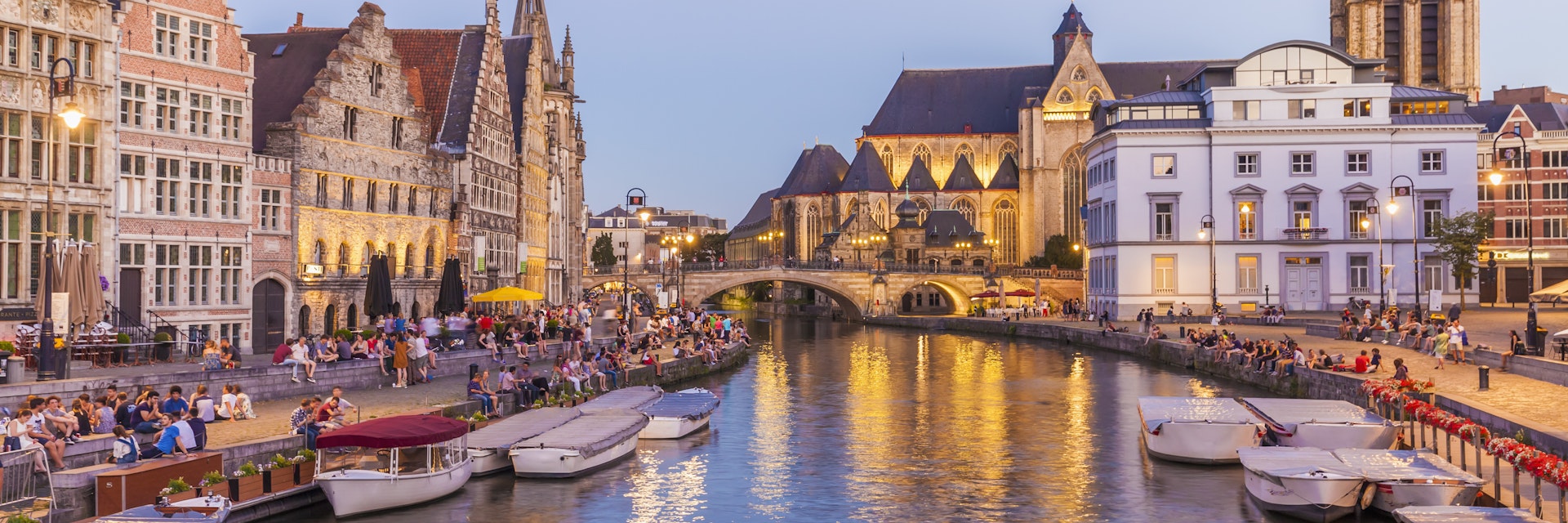
©Westend61/Getty Images
Bruges canals, Antwerp fashion, decadent chocolate, mussels and chips, belfries and castles, crazy carnivals, Tintin and Trappist beers... how could anyone call Belgium boring?!
Best Time to Visit
Best places to visit, your next trip starts here.
Go from dreaming to planning with trip planning options made to help you craft your ideal itinerary.
Attractions
Must-see attractions.
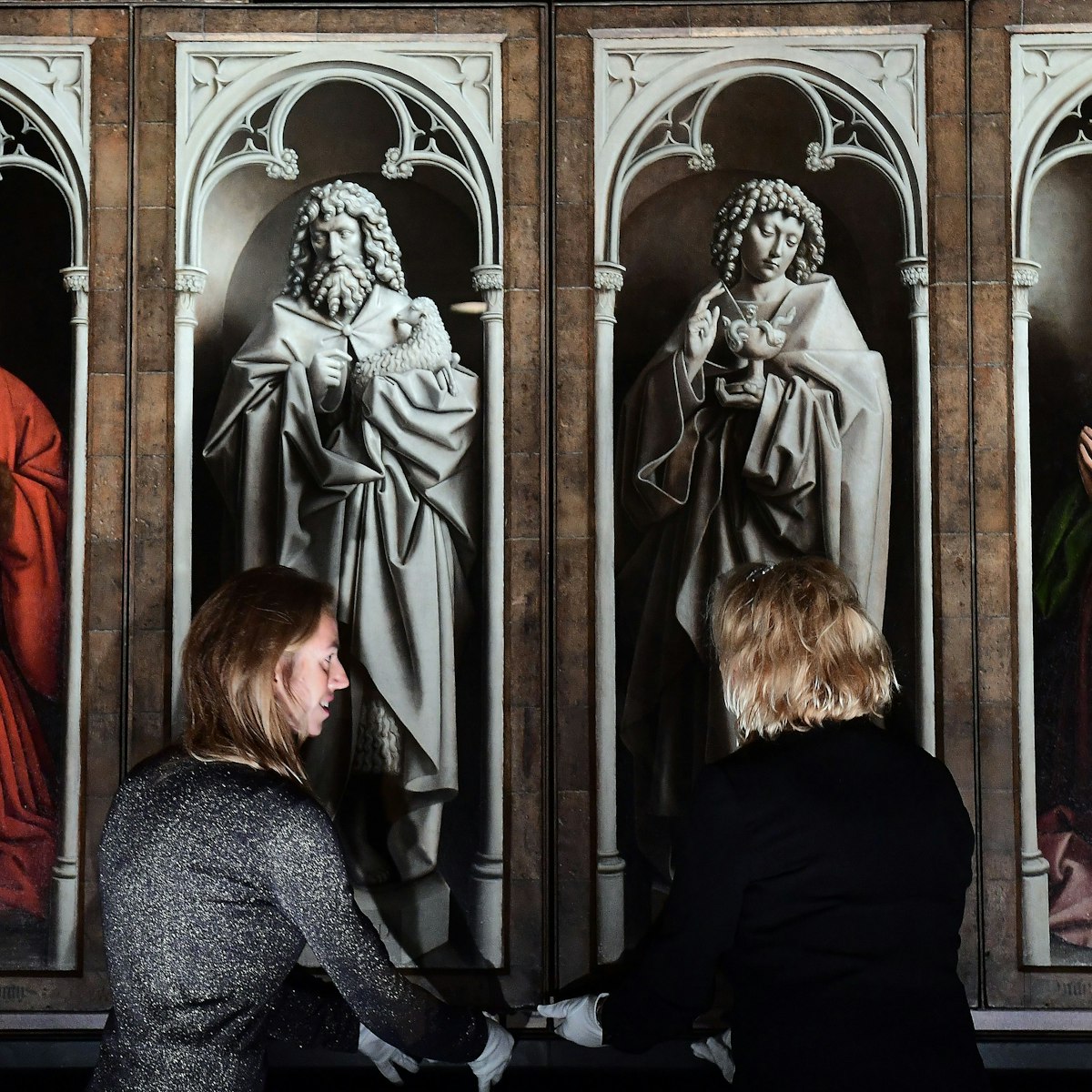
The Adoration of the Mystic Lamb
Art enthusiasts swarm the Sint-Baafskathedraal to glimpse The Adoration of the Mystic Lamb (De Aanbidding van het Lams God), a lavish representation of…
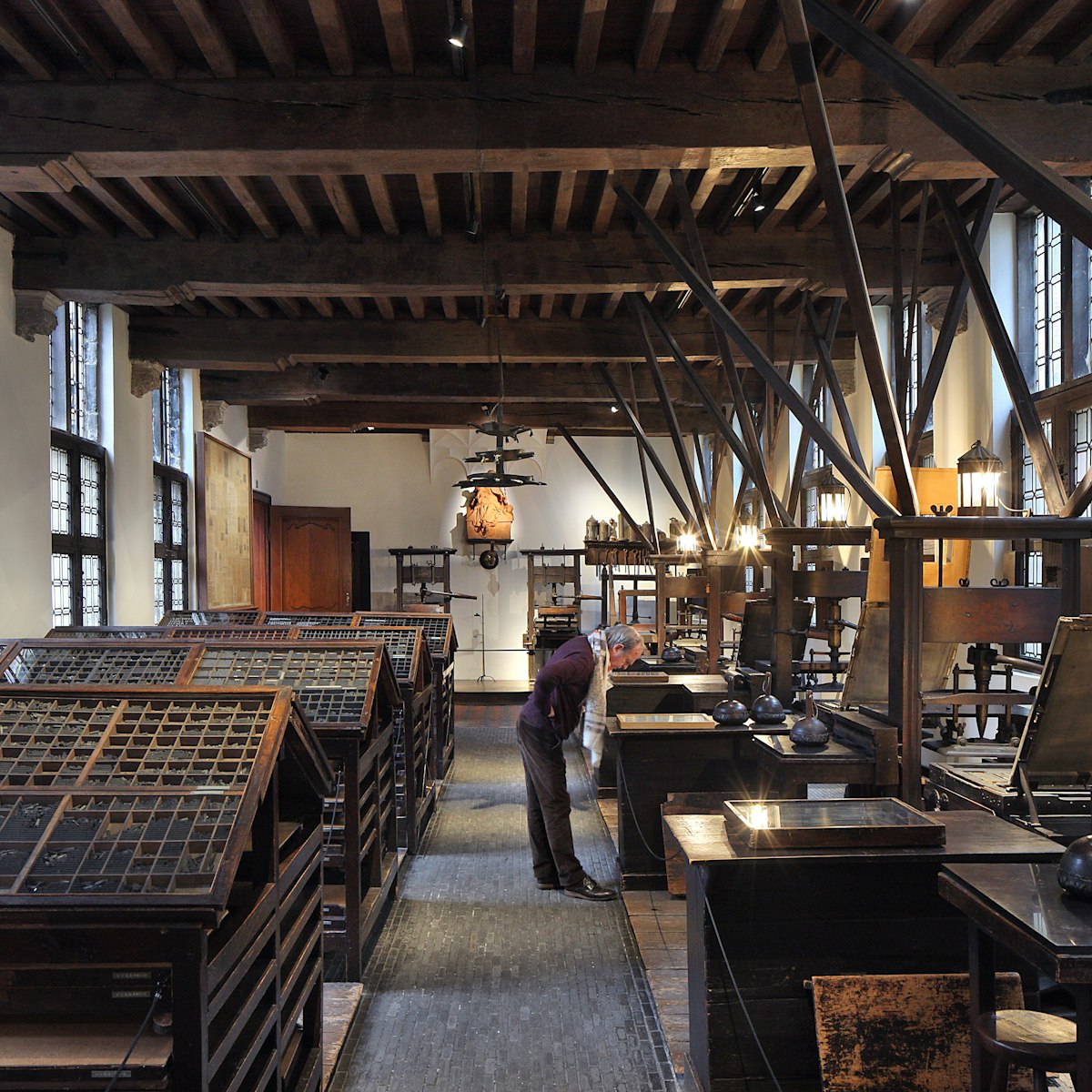
Museum Plantin-Moretus
The medieval building and 1622 courtyard garden alone would be worth a visit, but it's the world's oldest printing press, priceless manuscripts and…
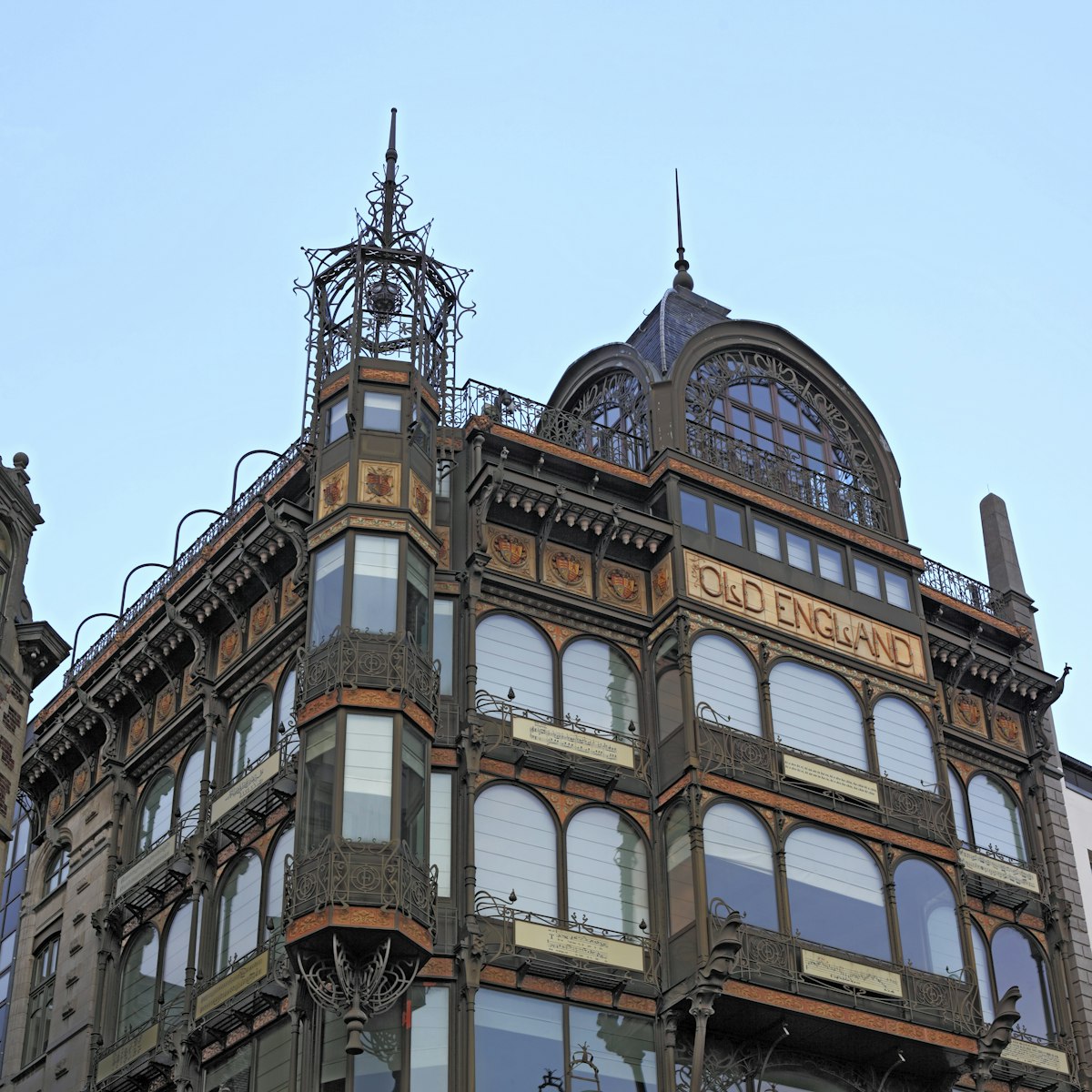
Old England Building
This 1899 former department store is an art nouveau showpiece with a black facade aswirl with wrought iron and arched windows. The building contains the…
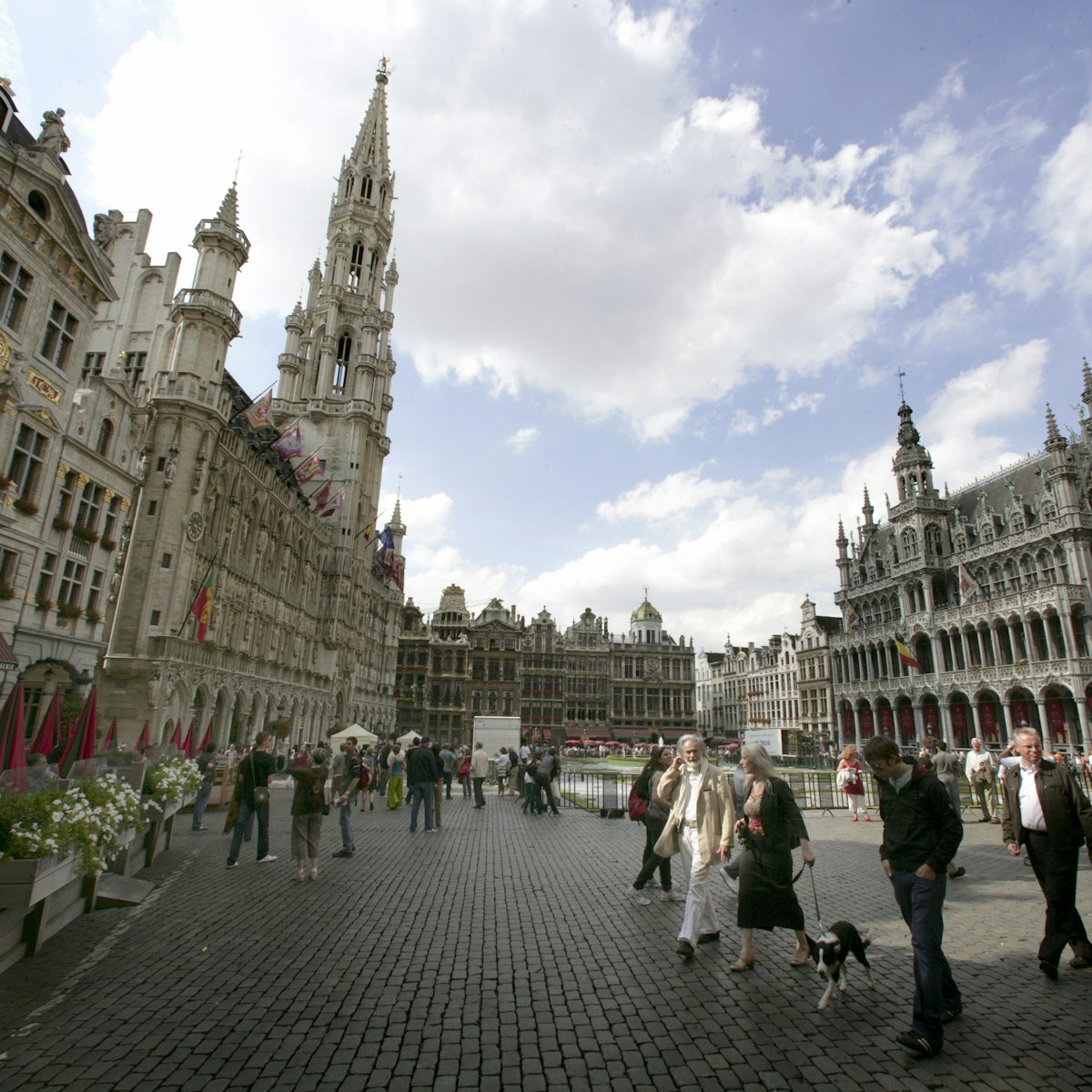
Grand Place
Brussels’ magnificent Grand Place is one of the world’s most unforgettable urban ensembles. Oddly hidden, the enclosed cobblestone square is only revealed…
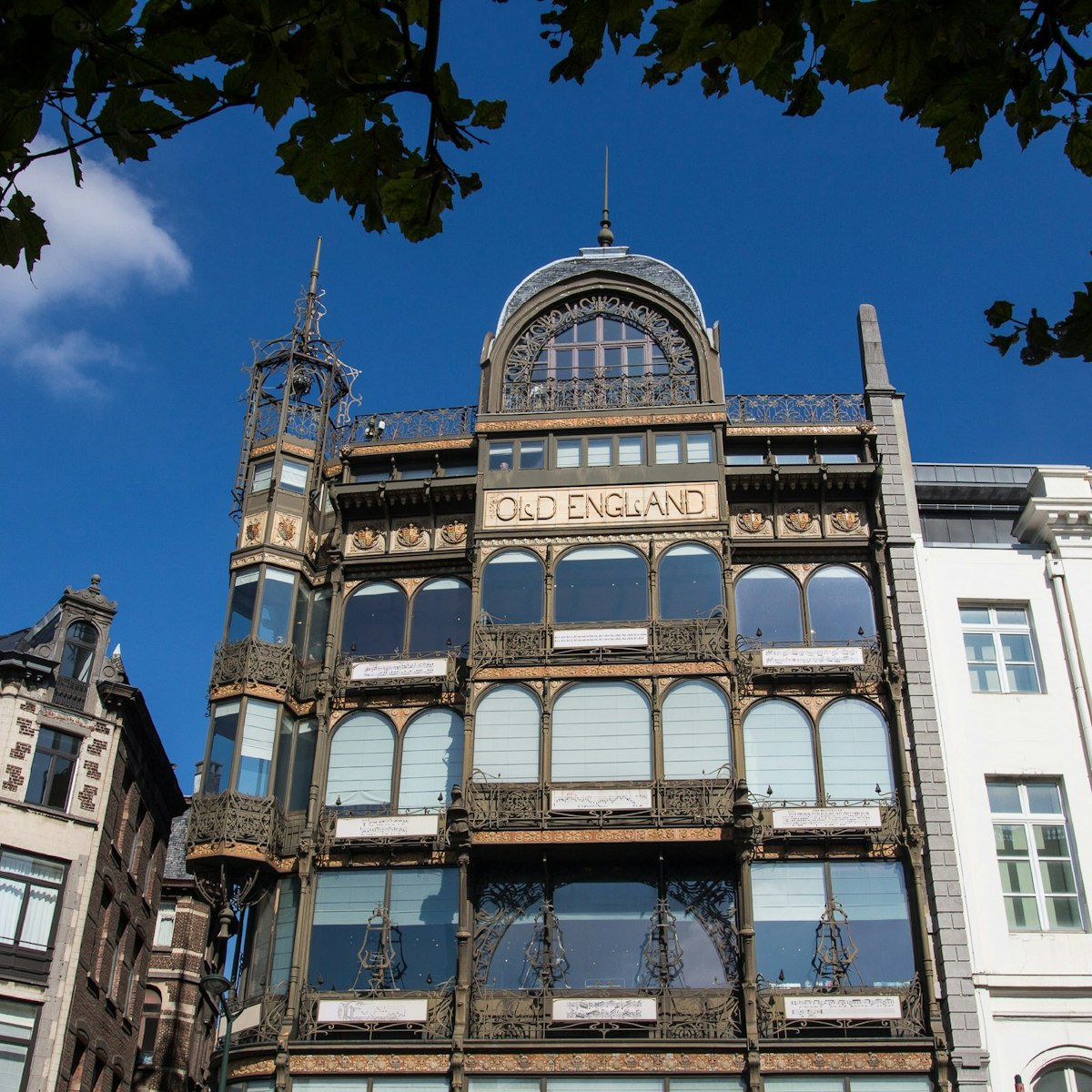
Strap on a pair of headphones, then step on the automated floor panels in front of the precious instruments (including world instruments and Adolphe Sax’s…
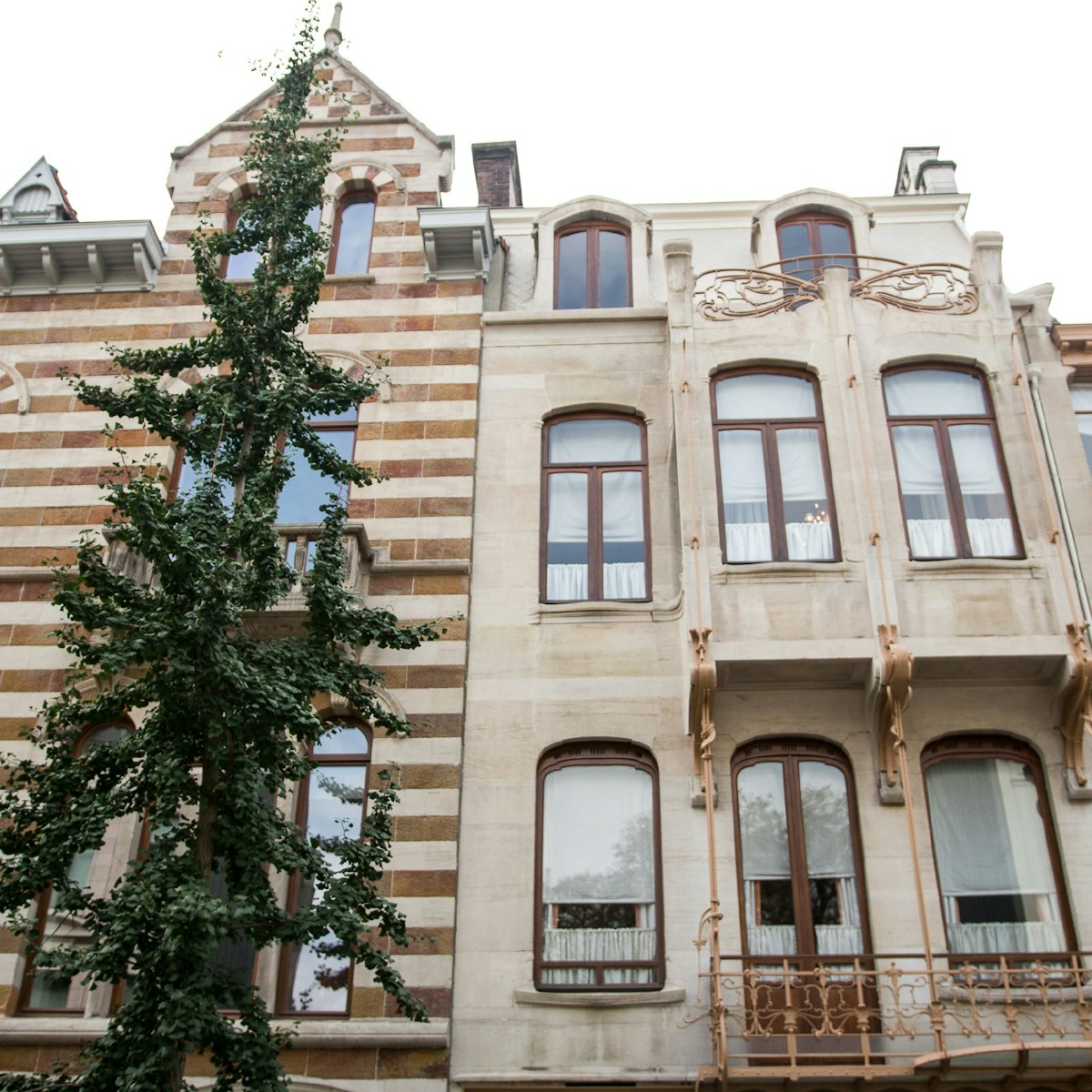
Musée Horta
The typically austere exterior doesn’t give much away, but Victor Horta’s former home (designed and built 1898–1901) is an art nouveau jewel. The…
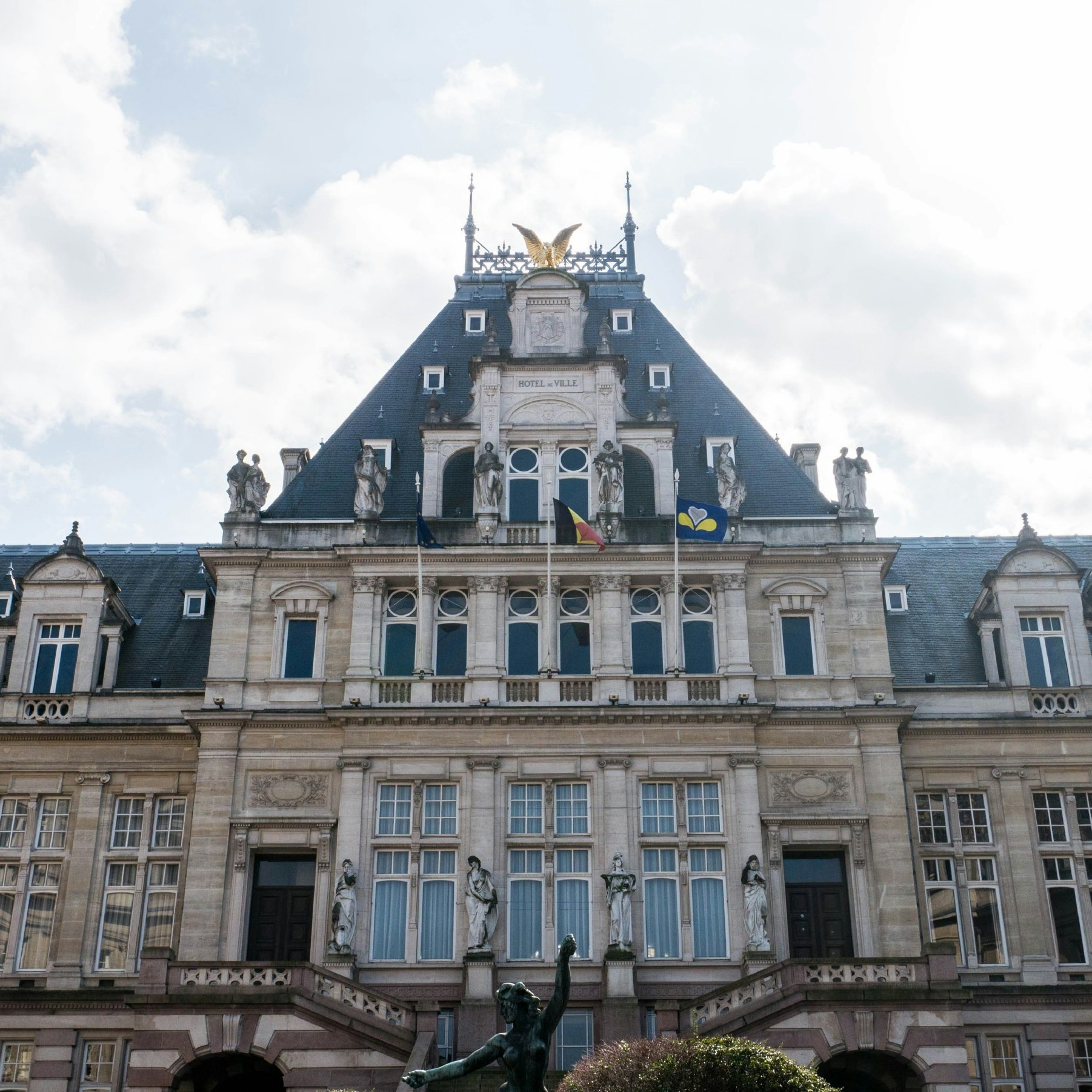
St-Gilles Town Hall
One of Brussels’ overlooked architectural wonders, this splendid Napoleon III–style palace

Pairi Daiza
Set on the grounds of a former Cistercian Abbey, this 65-hectare park is home to more than 5000 animals (including pandas, koalas, gorillas and lemurs)…
Top picks from our travel experts
The 15 best things to do in belgium, from chocolate to comics to castles.
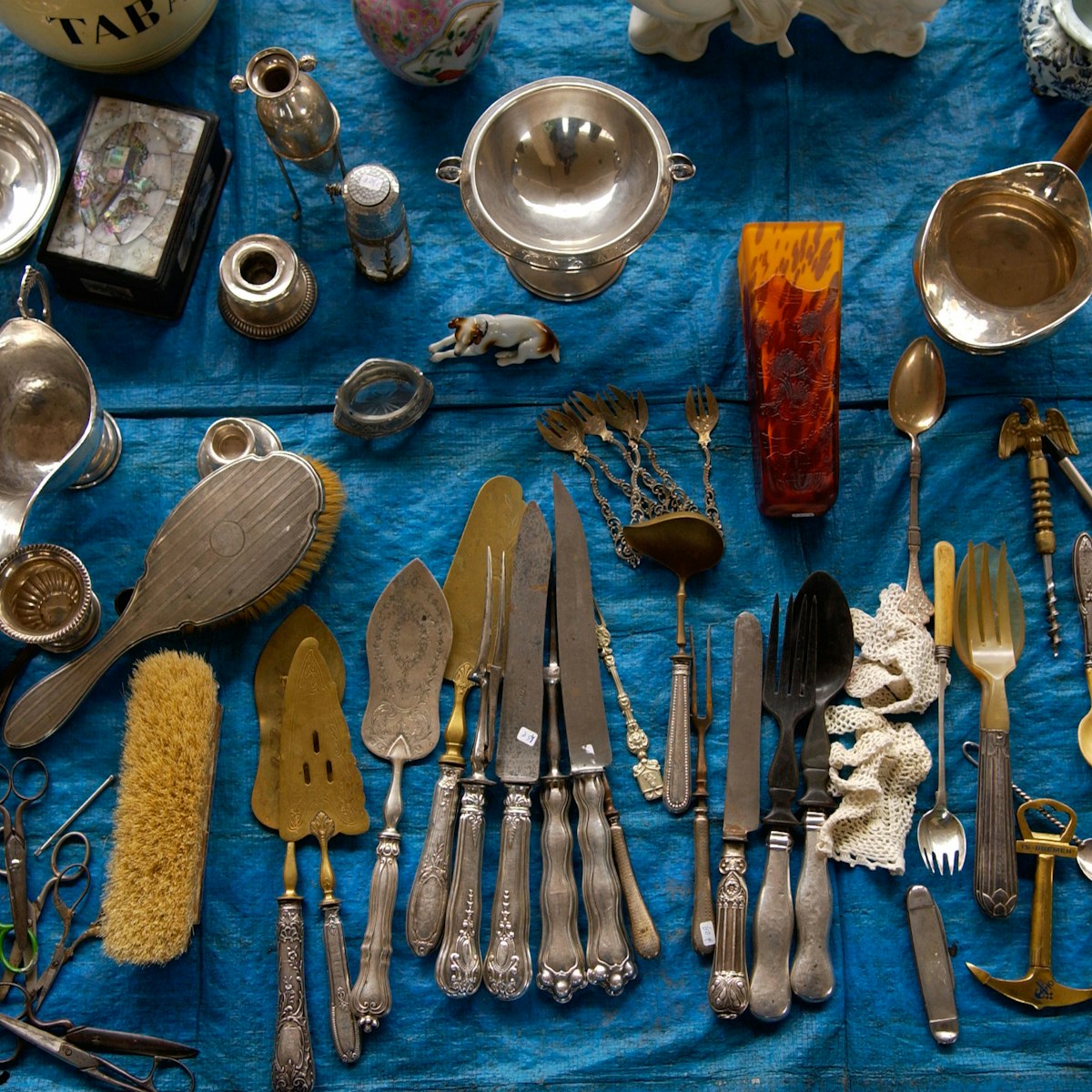
Place du Jeu-de-Balle Flea Market
The quintessential Marolles experience is haggling at this chaotic flea market, established in 1919. Weekends see it at its liveliest, but for the best…

Pierre Marcolini
Rare chocolate beans, experimental flavours (eg tea) and designer black-box packaging make Marcolini’s pralines Belgium’s hippest and most expensive.

Château de Bouillon
The Ardennes
Slouching like a great grey dragon high on Bouillon's central rocky ridge, Belgium’s finest feudal castle-ruin harks back to AD 988, but it's especially…

The heart of ancient Bruges, the old market square is lined with pavement cafes beneath step-gabled facades. The buildings aren't always quite as medieval…
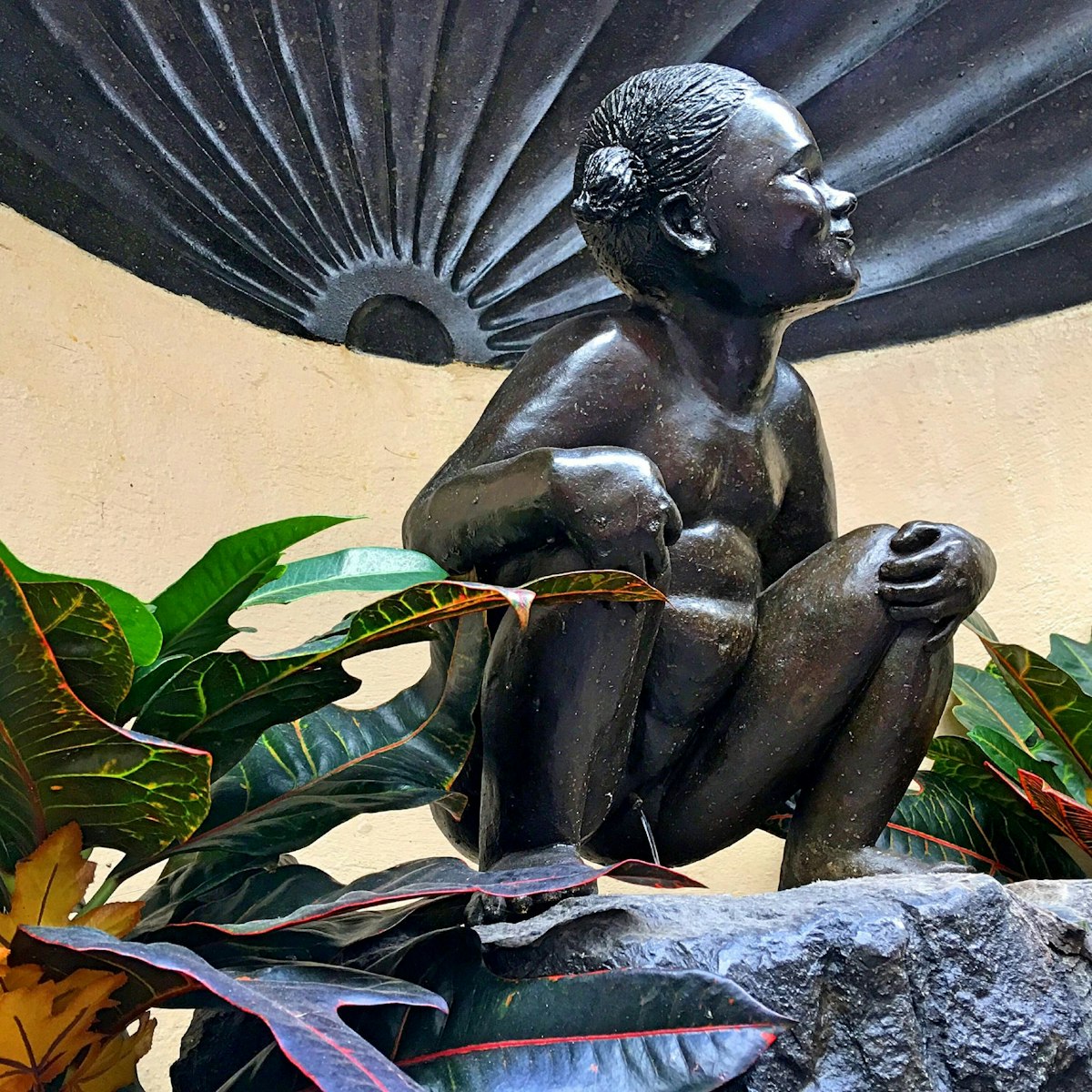
Jeanneke Pis
Squatting just off Rue des Bouchers, this pigtailed female counterpart of Manneken Pis is the work of sculptor Denis Adrien Debouvrie, who installed her…
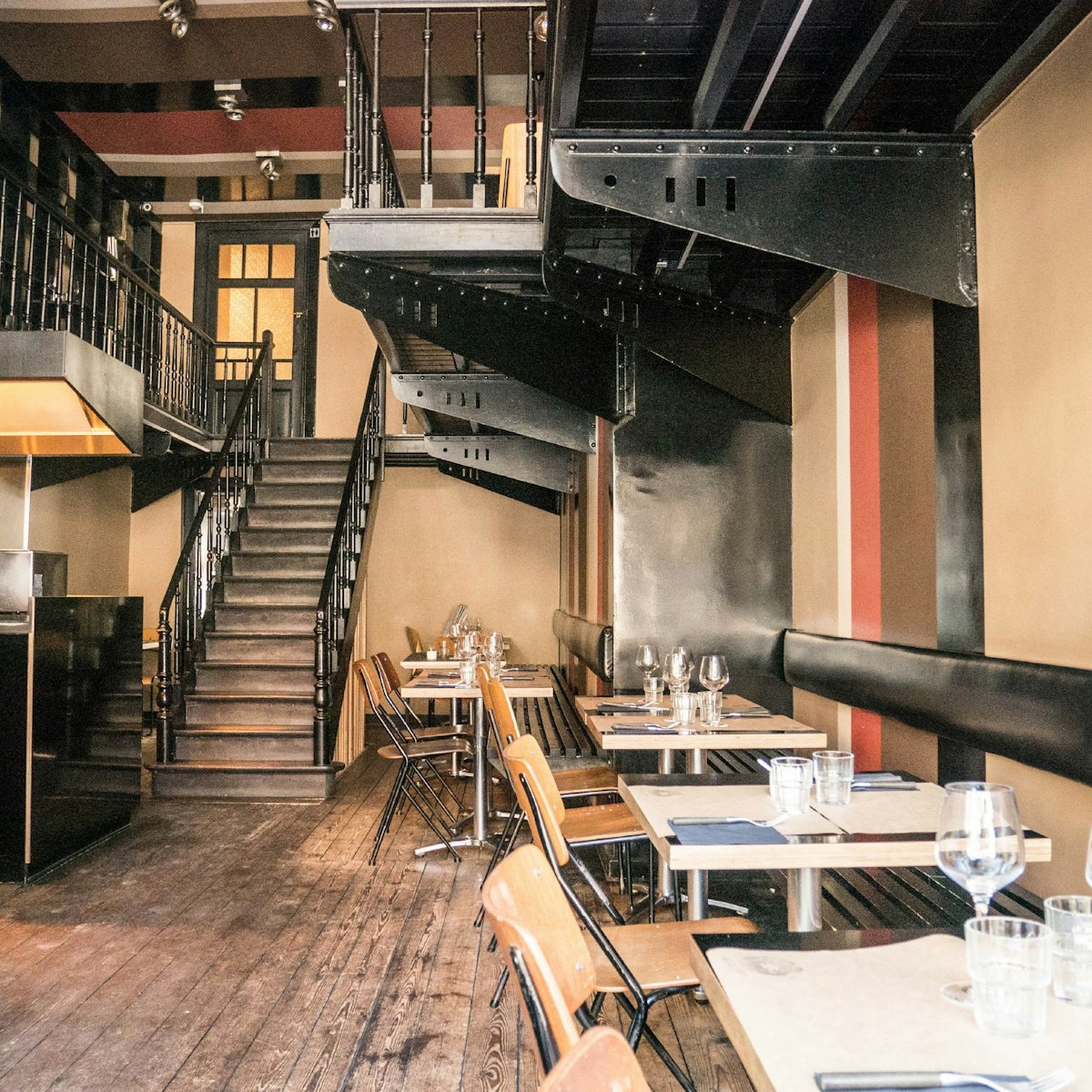
Café des Spoors
Mushroom fans will be in heaven at this homage to funghi: dine on black chanterelle, black trumpet, truffles and more. The dark-coloured decor mimics the…
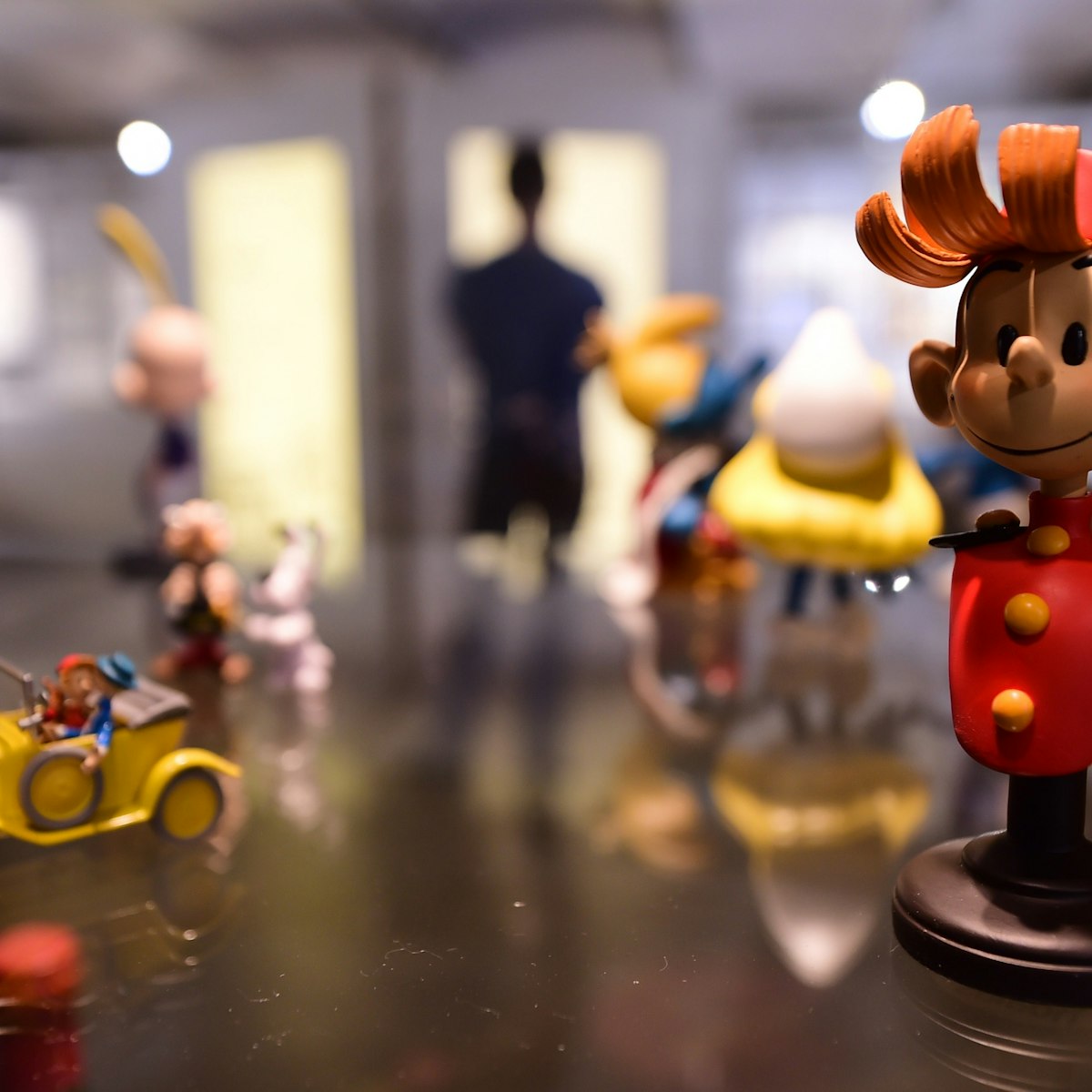
Centre Belge de la Bande Dessinée
This centre offers a definitive and enjoyable overview of the country’s vibrant comic-strip culture. Even if you’re not excited by the ‘ninth art’, do…
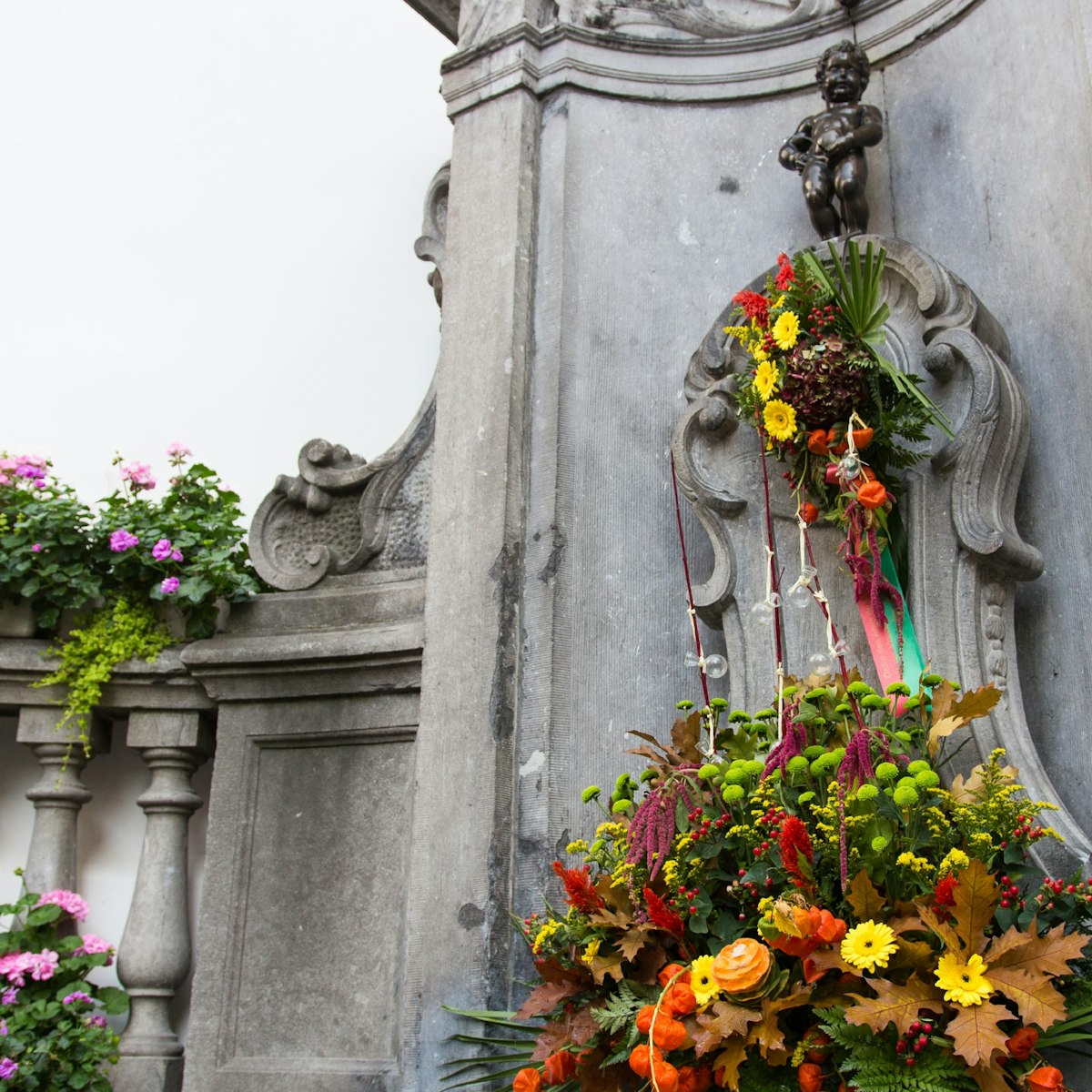
Manneken Pis
Rue Charles Buls – Brussels’ most unashamedly touristy shopping street, lined with chocolate and trinket shops – leads the hordes three blocks from the…
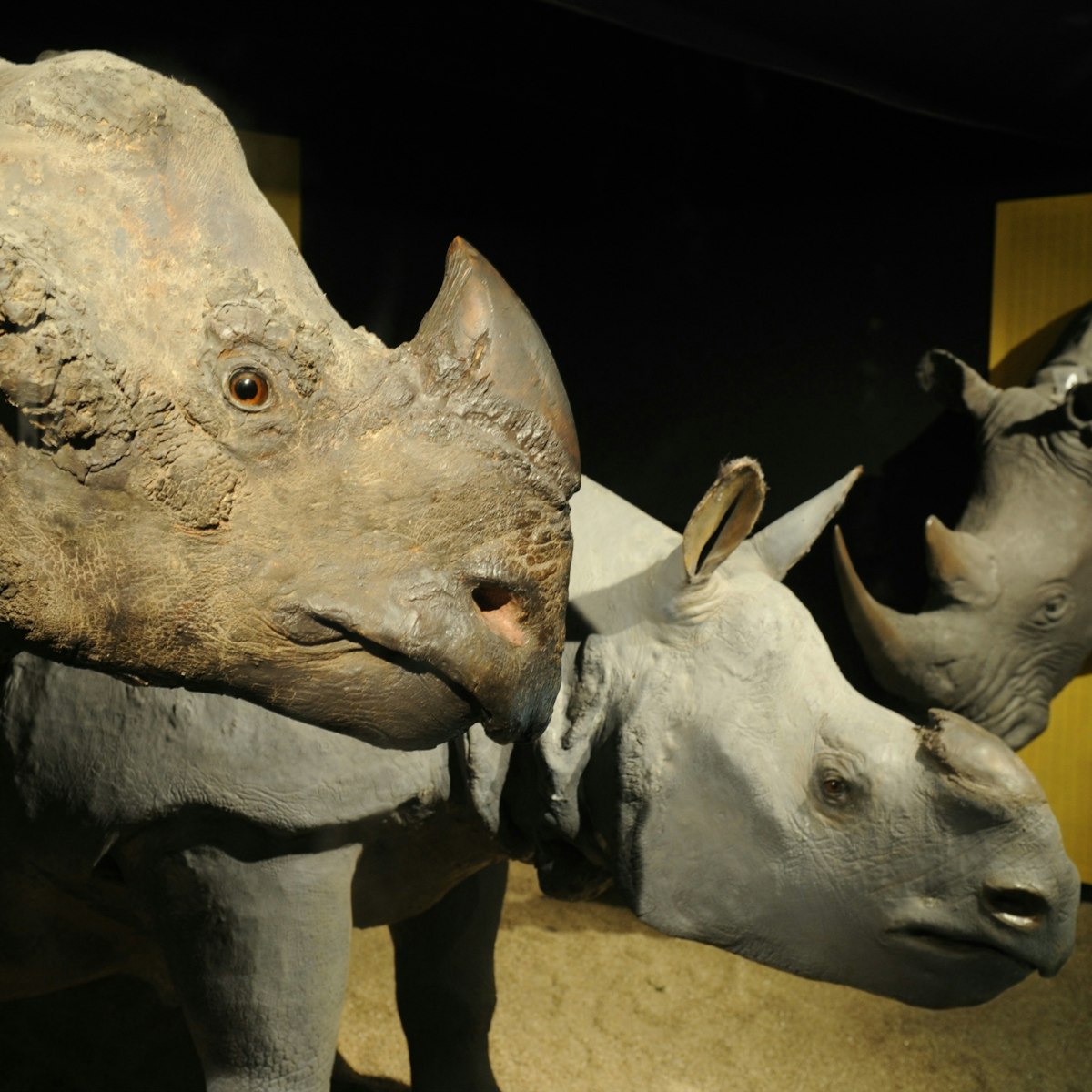
Institut des Sciences Naturelles
Thought-provoking and highly interactive, this museum has far more than the usual selection of stuffed animals. But the undoubted highlight is a unique …
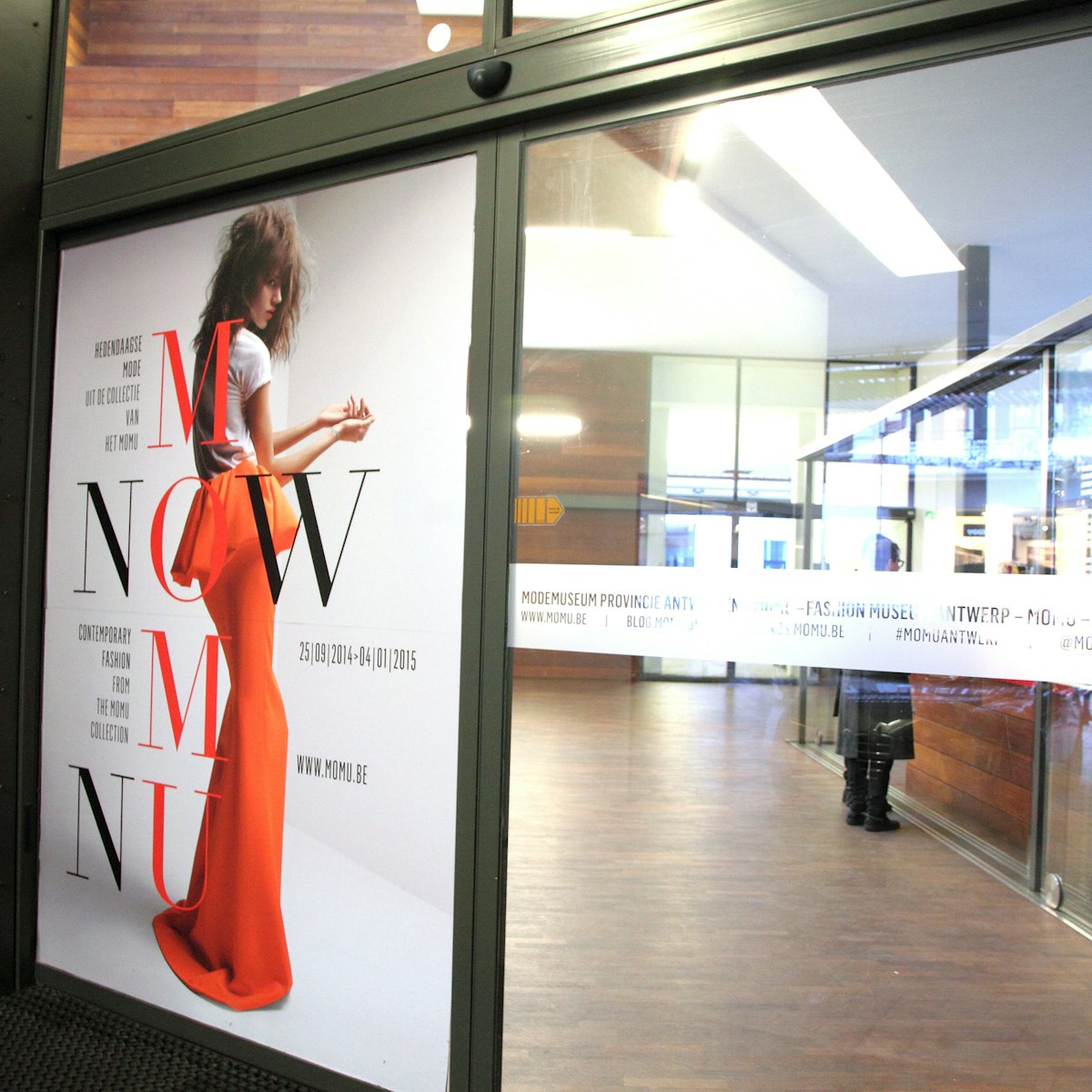
Closed for renovation until late 2020, Antwerp's fashion museum has a rich avant-garde collection and typically produces exhibitions highlighting the…

Délirium Café
This café's barrel tables, beer-tray ceilings and over 2000 world beers were already impressive. Now they’ve added a rum garden, a tap house and the…
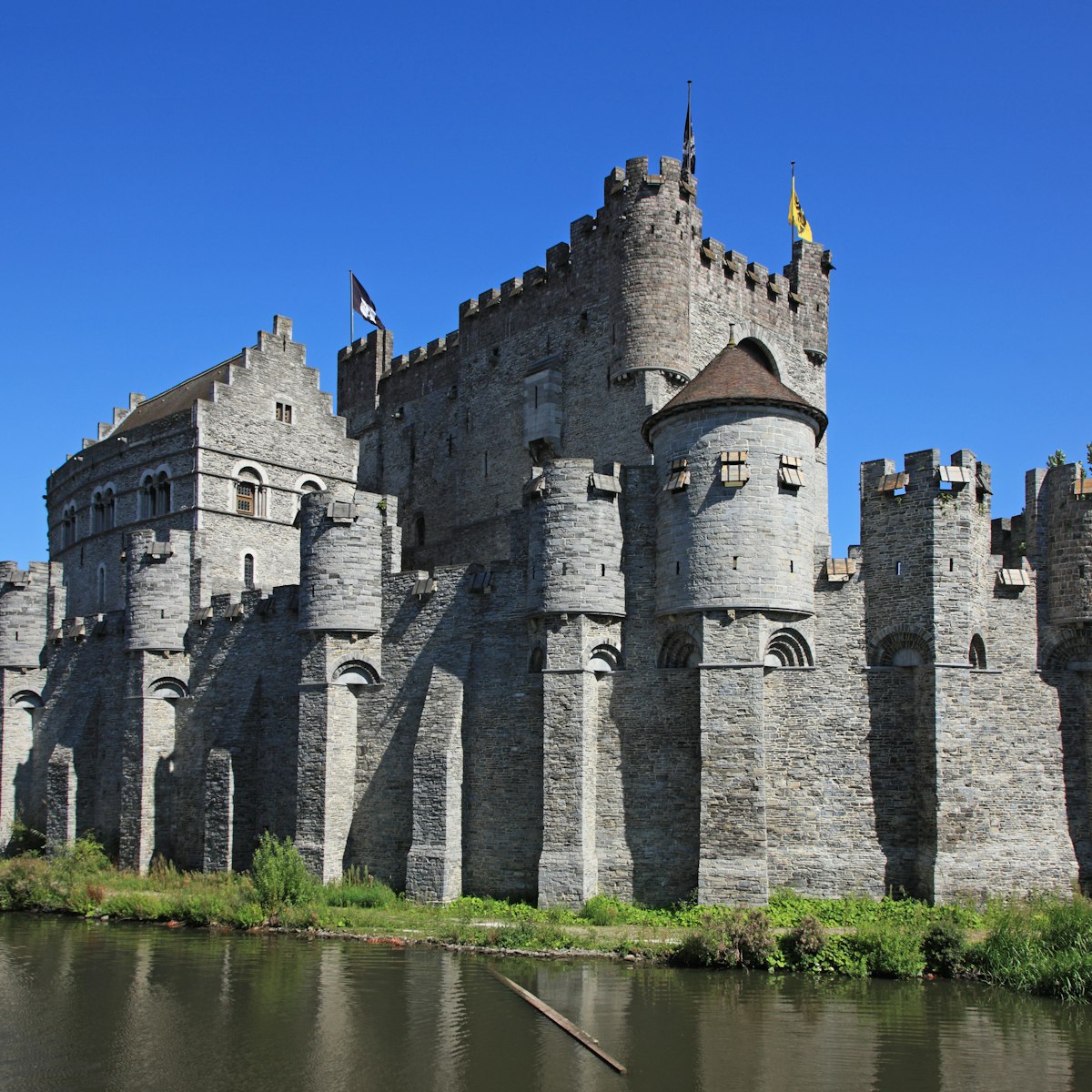
Gravensteen
Flanders’ quintessential 12th-century stone castle comes complete with moat, turrets and arrow slits. It’s all the more remarkable considering that during…
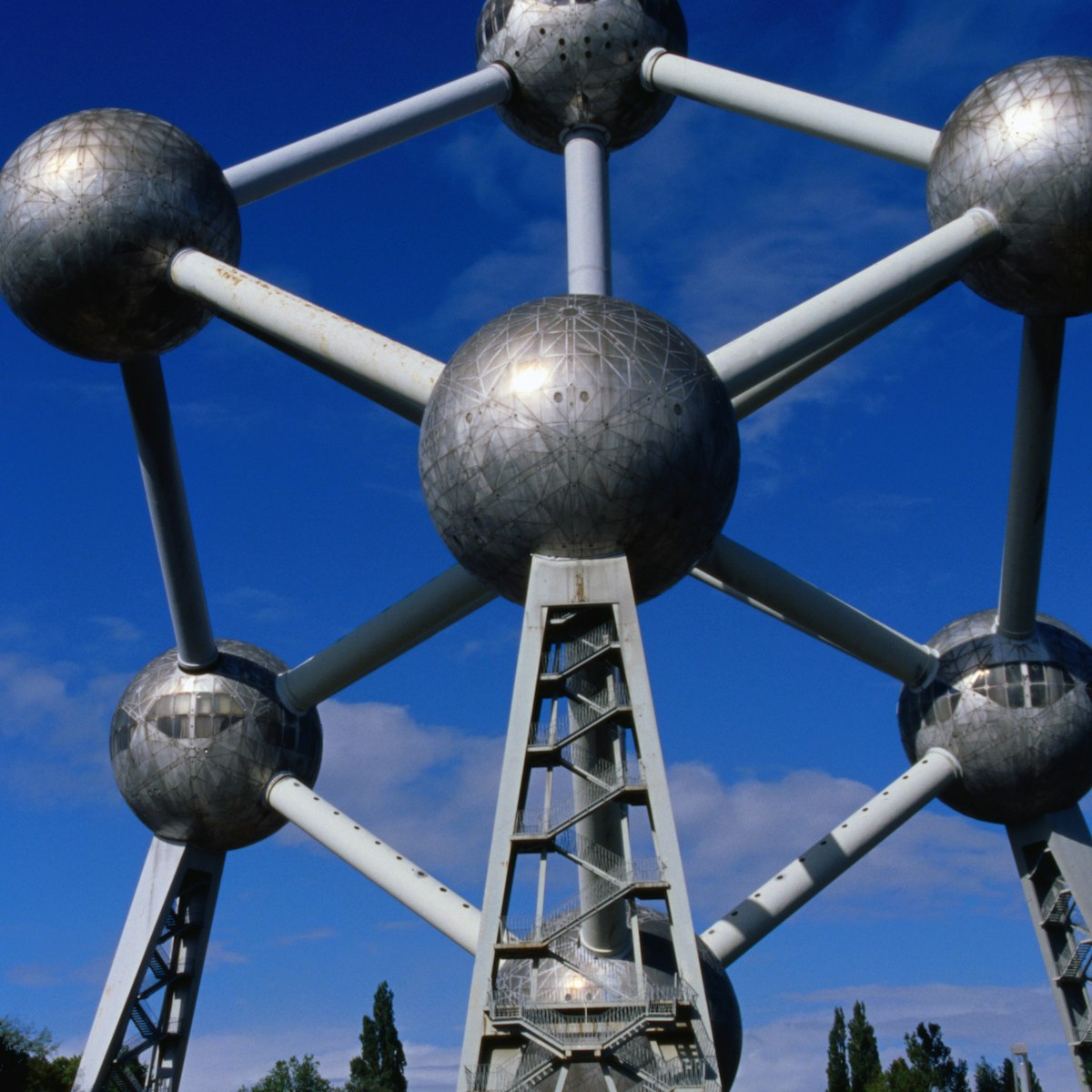
The space-age Atomium looms 102m over north Brussels’ suburbia, resembling a steel alien from a '60s Hollywood movie. It consists of nine house-sized…

Mini Europe
Want to fool your friends that you saw all of Europe? Easy. Just photograph the dozens of 1:25-scale models of the continent’s top monuments at Mini…

In Flanders Fields Museum
No museum gives a more balanced yet moving and user-friendly introduction to WWI history. It’s a multisensory experience combining soundscapes, videos,…

Belgium’s original – established in 1857. This stunning flagship shop has stained-glass windows and sumptuous displays. It is the home of the praline, a…
Planning Tools
Expert guidance to help you plan your trip.
Best Things to Do
There’s more to Belgium that its world-famous beer, chocolate and fries (though you shouldn’t miss any of those). Enjoy fine art, canal tours and more.
Things to Know
Despite being one of the smallest countries in Europe, Belgium has plenty to offer every kind of traveler. Try these tips for making the most of your trip.
Transportation
With trains, cycle paths and a panoramic tram running along the coast, getting around Belgium is a breeze. Here's all you need to know about how to do it.
Visa Requirements
Are you dreaming of eating hot frites in Brussels or wandering Ghent’s canals? The good news is visas are easy to obtain. Here's what you need to know.
Money and Costs
From mayonnaise-smothered fries to flea-market buys, here's how to make your euros stretch a bit further in Belgium.
Best Road Trips
Despite its small size, Belgium is a road tripper’s dream, with distinct itineraries for nature-lovers, spa-goers, even Bonaparte-era history buffs.
Latest stories from Belgium
Filter by interest:
- All Interests
- Adventure Travel
- Art & Culture
- Beaches, Coasts & Islands
- Food & Drink
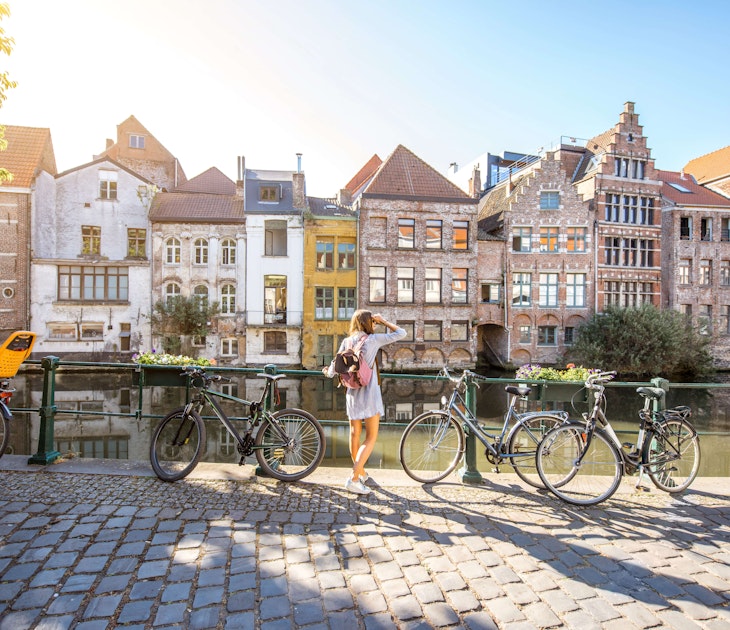
Tips & Advice
Dec 4, 2023 • 8 min read
From cultured city breaks in Brussels or Bruges to relaxing in hot springs or on the beach, here are the best places to visit in Belgium.

Jun 4, 2022 • 7 min read

Jun 2, 2022 • 8 min read
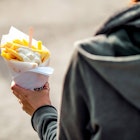
May 31, 2022 • 6 min read

May 29, 2022 • 6 min read
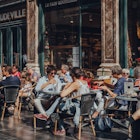
May 26, 2022 • 10 min read
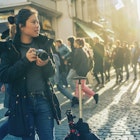
May 23, 2022 • 7 min read
May 21, 2022 • 6 min read
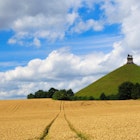
May 18, 2022 • 8 min read
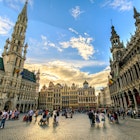
May 15, 2022 • 4 min read
in partnership with getyourguide
Book popular activities in Belgium
Purchase our award-winning guidebooks.
Get to the heart of Belgium with one of our in-depth, award-winning guidebooks, covering maps, itineraries, and expert guidance.
Belgium and beyond

National Geographic content straight to your inbox—sign up for our popular newsletters here

A guide to Ghent, Belgium's rebellious, unsung city
Youthful and rebellious, Ghent is stepping out of Bruges’s shadow as a Belgian canal-side classic
In the 16th century, Ghent lost it all on the wrong bet. Built around rivers and canals, it was Europe’s second-largest urban centre, falling just behind Paris. When Holy Roman Emperor Charles V, who ruled over Belgium, raised taxes to fund military action abroad, the city refused to pay out. They’d already given a fair share, locals argued, and surely Charles, who had been born in Ghent, wouldn’t turn on his home. In response, he marched into the city with his army, stripping it of its finery and parading its leaders in their undershirts, nooses around their necks.
Today, you can find evidence of the city’s illustrious past in its historical centre, home to a UNESCO-listed belfry and the Gravensteen, a stone fortress said to have been inspired by Crusader castles. And while its heyday is now behind it, Ghentians proudly tell the story of their fall from grace as proof of their rebellious streak.
This spirit survived, the sign of a place that’s at ease with its identity: socially conscious and full of fresh ideas. Initiatives like Nucleo are repurposing empty spaces into artists’ studios, and inviting the public to peer in once a year — in 2024, the open day is on 5 May. Meanwhile, chefs are experimenting with the earth’s pantry, casting Ghent as a European vegetarian capital. This energy is partly due to it being Flanders’ biggest university city: out of some 267,000 residents, over a quarter are students. This ensures a near endless supply of speciality-roast coffee in the Overpoort student district, and nightlife ranging from candle-lit wine bars to sweaty warehouses, reverberating with the kind of techno more often associated with Berlin.
The city was named 2024 European Youth Capital by the European Youth Forum — and it’s no surprise. In April, it will celebrate the accolade as part of the biennial Ghent International Festival, which will feature opera as well as dancers on roller-skates. Events will continue throughout the year, with locals as young as 15 invited to contribute ideas. As for what they’ll come up with, all bets are off.
What to see and do
1. Historic quays If you’ve seen photos of Ghent before, chances are they’re of the Graslei and Korenlei. Once the city’s centre of trade, these quays remain a hub of activity, lined with cafe terraces and moorings for boat tours. They’re the gateway to the historical centre, as well as the neighbourhoods of Patershol, a former working-class district turned culinary hotspot, and Prinsenhof, a residential area that was once home to royalty.
2. The Adoration of the Mystic Lamb This altarpiece by the Van Eyck brothers is the most stolen artwork of all time — it was even robbed by Napoleon, and over the years, it’s been forged and almost destroyed. It marked the transition from Middle Ages to Renaissance in Flemish art: admire its genre-defining details at St Bavo’s Cathedral , where a VR tour leads visitors through its history.

3. Street art Ever since a historical centre passageway — now known as Graffiti Alley — was given over to street artists in the 1990s, murals have claimed Ghent like vines. Free to download, the ‘Sorry, Not Sorry’ map pinpoints some of the most famous. Pieces from homegrown talent include the rabbits by big-name ROA on Tempelhof and the foxes on Napoleon Destanbergstraat, which helped artist Kitsune make a name for herself.
4. Dok Noord In the city’s northern reaches, an old factory complex has been turned into Dok Noord, one of Ghent’s newest leisure and office developments. Its main draw is Hal 16, a food hall in a former brick warehouse. Try barbecued dishes or Italian specialities including mafaldine pasta with octopus ragu, then quench your thirst at Dok Brewing Company. There are 30 beers on tap, but Waar is Loca, a pale ale brewed on site, is a crowd favourite.
5. Museum of Industry Belgium was the first country in mainland Europe where the Industrial Revolution took hold. Housed inside a former cotton mill, this museum traces Ghent’s rise to textile powerhouse. The star of the collection is Belgium’s first spinning mule, a machine created to speed up yarn production: local Lieven Bauwens smuggled its components out of the UK, as export of such machinery had been banned.
Where to eat in Ghent
1. Knol & Kool The choice at this vegan cafe, a few steps from the belfry, ranges from vegetable lasagne with rocket pesto and almond parmesan to bánh mì overstuffed with tofu, pickled carrot and red cabbage. Check out the on-site vegan minimarket for hibiscus-flavoured beer, green leek miso paste and nut cheese made locally.
2. Lepelblad This modern restaurant in tranquil Onderbergen, near the historical centre, works with local farmers and small producers to celebrate the season’s bounty. The menu might change depending on the day’s supply, but expect dishes like chicory tarte tatin with onion cream and mustard salad or marinated beef with salsify, soy and herbs. Each comes with a recommended wine and beer pairing.
3. Oak This one-Michelin-starred restaurant is celebrating its 10th anniversary with a refurbished look but has retained the minimalist, dark-toned decor that lets its menu shine. Brazilian chef Marcelo Ballardin’s multi-course menus lean into his international background with creations such as mackerel with Philippine calamansi lime or sea bass with tucupi sauce, extracted from wild manioc root in the Amazon rainforest.
Where to go shopping
1. Home Linen This boutique on the Korenlei has been crafting its own designs since the 19th century. A lavender scent permeates the space, which sells lace tablecloths decorated with red lobsters, retro night gowns and children’s dresses embroidered with rosebuds. It’s all reasonably priced, despite Belgian linen being renowned for its softness.
2. Antiques Ghent has a seemingly endless assortment of vintage shops. Located opposite each other on central Baudelostraat, Antiek-Depot has overflowing shelves of curios, while Moca has ceilings hung with chairs and tambourines. For more precise perusing, Galerie St-John has a pedigree selection of cutlery, porcelains and Belgian paintings, all housed in a former baroque church.
3. Sweets & condiments While Belgium is known for waffles and chocolate, Ghentians will recommend different specialities. Cuberdons are nose-shaped hard candies filled with fruit syrup; get a packet at Patershol’s Confiserie Temmerman , which dates to 1904. Even older is Tierenteyn-Verlent in the historical centre, selling a locally famous mustard made using a secret recipe.
After hours
1. ‘t Dreupelkot It’s been over four decades since Paul Rysenaer opened this pint-sized pub a few steps from the Graslei, where barrels serve as high tables and wood cabinets display shot glasses. Head here to try jenever, a juniper-flavoured Belgian and Dutch spirit: there are some 200 varieties on the shelves, some distilled by Paul himself.

2. The Cobbler Walk up a spiral staircase and into this low-lit cocktail bar within 1898 The Post hotel , one of the city’s trendiest addresses. It’s hard to say what’s better: the location on the Graslei, overlooking gothic St Nicholas’ Church, or its signature concoctions. Try the fruity pear sonata with vodka, Cointreau, cassis and pear, or the herbal downstairs harry, a mix of rum, cognac, vermouth, Chartreuse, maple syrup and sage.
3. Jazz clubs A UNESCO Creative City of Music, Ghent has a special affinity with jazz. Every July, Gent Jazz takes over a former 13th-century hospital with performances by the likes of Gregory Porter and Norah Jones, but you’ll find sessions to jam out to all year. Hot Club Gent , an intimate bar, and Missy Sippy , a self-styled ‘modern juke joint’, are good places to start in the historical centre.
Like a local
1. Portus Ganda Ghent’s name comes from ganda, Celtic for ‘confluence’. The city was founded where the rivers Lys and Scheldt meet; when the Graslei and Koreneli get too busy, follow the canals to this very spot, now a tranquil marina. If visiting in warm months, detour to St Bavo’s Abbey, where hornbeam bushes mark the outline of a long-lost church.
2. The Bakery When pastry chef Joost Arijs set up a chocolate shop in SoGo — Ghent’s shopping district — in 2011, it was quickly named Belgium’s best by restaurant guide Gault & Millau. Opened down the road in 2023, his follow-up bakery was always going to draw in curious locals but, a year on, the morning queues show no sign of subsiding. Come early to have your pick of the crispiest croissants.
3. Veggie Thursdays In 2009, Ghent was the first city in the world to introduce a weekly meat-free day — an initiative that’s since been replicated from Taipei to Los Angeles. Take part yourself at Boon , an airy, Scandi-chic vegetarian lunch bar opposite the Gravensteen. The seasonal soups, salads and slices of quiche will have you coming back for more no matter what day of the week it is.
Where to stay in Ghent
1. Ganda Rooms and Suites You’ll be hard-pressed to find better value for money than this B & B, set in an 18th-century townhouse in the historical centre. The eight rooms retain original mantelpieces and wooden beams, and the owners worked with artisans to furnish them with bespoke beds and Belgian art.
2. Pillows Grand Hotel Reylof True to its former life as a baronial residence, this four-star hotel dazzles at first sight with a sweeping staircase in its marbled, neoclassical lobby. Set in a separate building, the 157 rooms are a more pared-back affair, but with common areas including a library and a bijou spa in what was a carriage house — plus the Graslei a stone’s throw away — there’s more than enough to keep you busy.
3. Hotel Verhaegen Frescoes, a landscaped garden, a bath house with vaulted ceilings: there’s nothing subtle about this city palace, a short walk from the historical centre. It was reimagined as a four-room guesthouse by a pair of interior designers, who combined hand-picked antiques with 21st-century touches. Splurge on the Suite des Annees ’40 — though at some 750sq ft, the term ‘suite’ hardly does it justice.
Related Topics
- CITY GUIDES
- MODERN HISTORY
- LIVING HISTORY
- FOOD HISTORY
You May Also Like

The essential guide to visiting San Diego

A guide to Gdansk, Poland's regenerated maritime city
Limited time offer.
Get a FREE tote featuring 1 of 7 ICONIC PLACES OF THE WORLD

A guide to plant-based dining in Birmingham

A city guide to Bergamo, Italy

A guide to Antwerp, Belgium's striking second city

A family city guide to London

A guide to Aberdeen, Scotland's surprising 'Granite City' by the sea
- Paid Content
- Environment
History & Culture
- History Magazine
- Women of Impact
- History & Culture
- Mind, Body, Wonder
- Destination Guide
- Terms of Use
- Privacy Policy
- Your US State Privacy Rights
- Children's Online Privacy Policy
- Interest-Based Ads
- About Nielsen Measurement
- Do Not Sell or Share My Personal Information
- Nat Geo Home
- Attend a Live Event
- Book a Trip
- Inspire Your Kids
- Shop Nat Geo
- Visit the D.C. Museum
- Learn About Our Impact
- Support Our Mission
- Advertise With Us
- Customer Service
- Renew Subscription
- Manage Your Subscription
- Work at Nat Geo
- Sign Up for Our Newsletters
- Contribute to Protect the Planet
Copyright © 1996-2015 National Geographic Society Copyright © 2015-2024 National Geographic Partners, LLC. All rights reserved

IMAGES
COMMENTS
Tips for Drinking Beer in Belgium: The price of beer in Belgium: Beer prices can vary across Belgium, but at most cafes and brasseries, many beers range from €3-4.50 per glass, with gueuze lambics being a little pricier at €7-10 per glass. If you are renting a car in Belgium, please drink responsibly.
Wherever your Belgium travels take you, there will be delicious beer to drink. Flanked by France and the Netherlands, the less-than-12,000-square-mile nation has more than 200 breweries, many of ...
When in doubt, check the bottle: Belgian beer bottles contain specific temperature instructions. Two Belgian beers at Halve Man Brewery, in Bruges, Belgium. The proper way to drink a Belgian beer is with from the bottle, with 2 fingers of foam, in the glass that matches with the beer.
In the early to mid-19th century, the average Belgian brewery was very small, mostly because there was a tax incentive to remain so. Rather than packaging beer, they were selling beer from wooden barrels directly to consumers in their own pubs. In 1845, there were 3089 breweries in Belgium - today, there are just around 380.
The origin of beer in Belgium is closely linked to religious abbeys and monastic communities. Much of this production had to do with the fact that water was unsafe to consume, so beer, a safer and cheaper alternative, became the preferred drink of Belgians. Low alcohol content beer was even drank by Belgian children!
Last Updated on 29th February 2024 by Sophie Nadeau. One of Belgium's most famous exports is beer and many visitors head to the pint-sized country purely to try its local tipple. In this Belgium beer guide, I'll delve into the history of beer in Belgium, as well as some of the types of Belgian beer and drinking etiquette. In fact, beer is so common in Belgium (and around the world!), that ...
Day 2: Duvel Moortgat brewery, Aulne abbey. The next brewery on our tour is Duvel Moortgat: this family-owned brewery was founded in 1871 by Jan-Leonard Moortgat, who descended from a family of brewers from Steenhuffel. Ever since then, the Moortgats have been brewing their famous golden ale and many more varieties of beer.
The last stop on our whirlwind beer bartering tour of Belgium is B.O.M. Brewery, where head brewer Bert Van Hecke has a special request. Although he wouldn't turn down a few fine bottles from The Bruery or Sierra Nevada, Bert just might hand over the keys to the shop for a New Belgium La Folie from 2003.
Exclusive Beer: Gulden Draak. In every city there are beers only found in a single bar, or at least just in that city. I'm not sure if the Gulden Draak is available outside of Ghent but it is surely 100% Ghent (and 10.5% abv)! The golden dragon of the beer is symbolic of the same famous dragon statue that sits at the top of the Ghent Belfry ...
Belgian Strong Pale Ale and Belgian Blonde. Belgian strong pale ale (also known as Belgian strong golden ale) is a more recent invention, credited to Belgian brewers Duvel Moortgat. The beer that started it all is known simply as Duvel (that's "devil" in Flemish) and it took its current bright golden form in the 1970s.
The Ultimate Beer Lover's Travel Guide to Bruges, Belgium. Bruges, Brugge, or Brugs however you want to spell it this charming city is one of the most unique and romantic in Belgium. Romantic for couples visiting, and romantic for those in love with one of Belgium's most lauded exports, Belgian beer! Bruges Belgium is a place for lovers ...
Every year, 18 million hectolitres of beer is flowing from the tanks of Belgian breweries and 11 million of this output flows across the border (s), to our neighbouring countries of France, the Netherlands, Germany and the UK as well as farther-flung destinations such as Italy, Spain, Scandinavia, the USA, Japan and China….
The camera doesn't miss anything! Belgian Beer Me! Beer Tours will introduce you to Belgium, aka beer paradise, which brews some of the finest, unique and delicious beers in the world. With Belgian Beer Me! (BBM!) you will enjoy worry-free travel, see more and do more in a shorter time than you ever could on your own.
Le Fort, called the best tripel in the world in 2016 and 2018, is a golden blonde beer. It has a high alcohol content (8.8%) and is made refreshingly delicious by its fruity and complex aroma and taste. While it's good with any meat dish, it is also perfect to drink on its own.
Belgium is renowned for its rich and diverse beer culture, boasting a wide variety of beer styles that have captivated beer enthusiasts from around the world. Belgian beer festivals are a prominent feature of this culture, providing a platform for brewers to showcase their creations and for beer lovers to indulge in the flavors and aromas of ...
Book Belgian Beer Tasting in Brussels. Grand Place (Grote Markt) 2. Hungry Mary's Famous Beer and Chocolate Tour. ⭐️ Rating: 5/5 stars | ⏳ Length: 4 to 5 hours | 🍺 Check availability. If you would like to combine chocolate and beer, then Hungry Mary's Famous Beer and Chocolate Tour is the perfect tour for you!
20 Belgian beers you need to try 1. Bush Beer (7.5% and 12%) A Wallonian speciality, the Belgian brewery behind Bush claims that the original version is - at 12% - the strongest beer in Belgium. It tastes more like a barley wine and has a lovely golden colour and an earthy aroma.
Belgian beers travel guide. The best beers in Belgium. Beer is a quintessential part of Belgian culture. So much so that UNESCO added Belgian beer culture to its Intangible Cultural Heritage of Humanity list in 2016. The country is home to the world's biggest brewery and over 700 types of beer, from dark, strong Tripel beers to lighter ...
Dubbel is a style of beer, generally at ABV 6% to 8.5%, dark in colour and toasted, malty and spiced tasting notes. They're yeasty and complex - the kind of beers you either love or hate. A tripel by contrast should be lighter - golden in colour, clouded in appearance with hoppier notes and a smoother taste. This is a tripel beer.
Joe Stange is a freelance journalist, co-author of Good Beer Guide Belgium (with Tim Webb), and author of the upcoming Around Brussels in 80 Beers, second edition. ... He is an experienced writer in travel, beer and gastronomy. Erik has been a freelance editor, writer and photographer for years. He has published a brewery guide with 150 Belgian ...
Blond beers are a popular and versatile style of beer in Belgium, known for their pale golden color, medium body, and balanced flavors. These beers offer a wide range of profiles, from light and crisp to more complex and aromatic. Blond beers typically have a moderate malt sweetness and a clean, dry finish.
Explore Belgium holidays and discover the best time and places to visit. Lonely Planet. Destinations. Planning. Inspiration. Shop. Search. Saves. Open main menu. Belgium ... A beginner's guide to Belgian beer. Jun 2, 2022 • 8 min read. Budget Travel. Belgium on a budget: cheap frites, free museums and 8 other ways to save.
Belgium Travel Guide. Belgium is a travel destination made for history buffs and chocolate addicts. Though the nation is small, it plays a big part in the world's history. There are over 3,000 castles to explore, battlegrounds from the World Wars, and every museum imaginable. After you've had your history fill, you can kick your feet back ...
There are 30 beers on tap, but Waar is Loca, a pale ale brewed on site, is a crowd favourite. 5. Museum of Industry. Belgium was the first country in mainland Europe where the Industrial ...